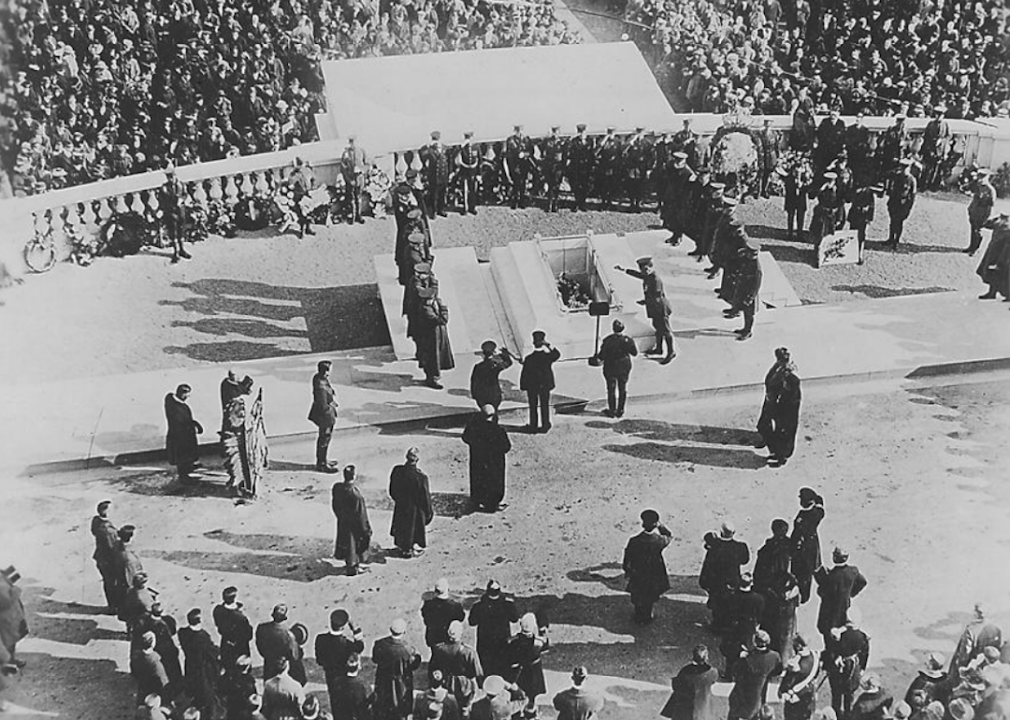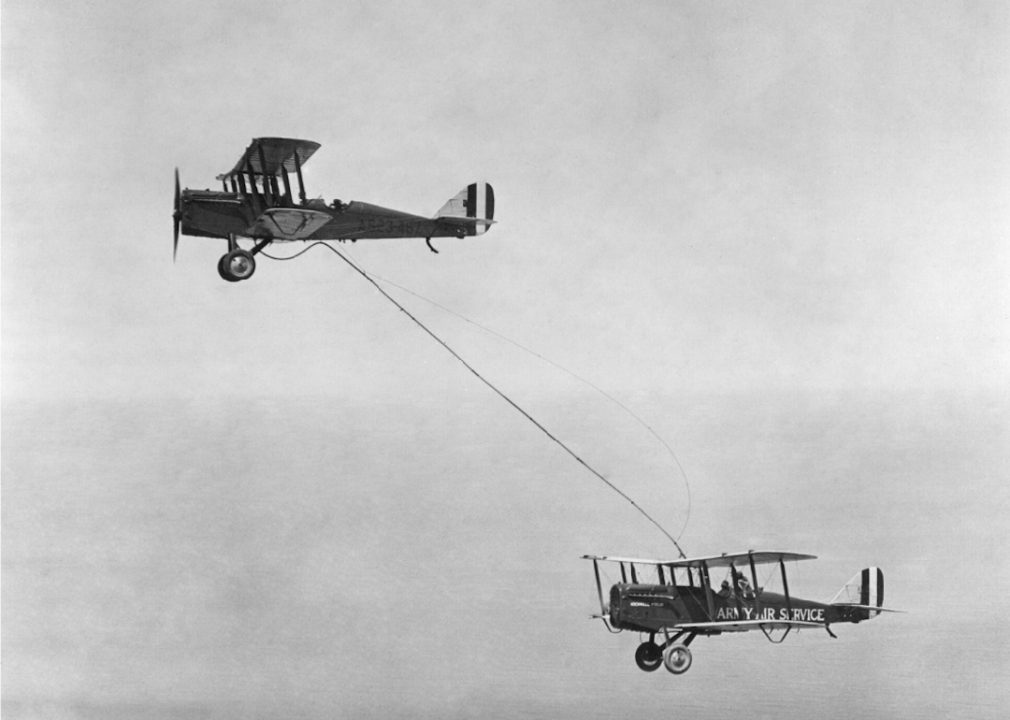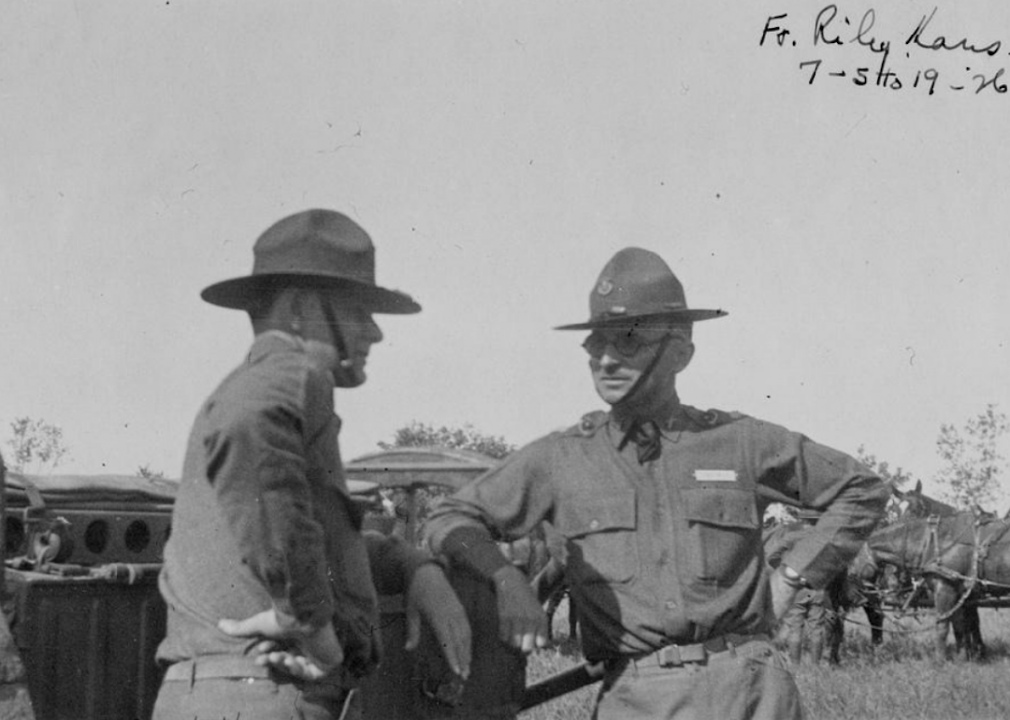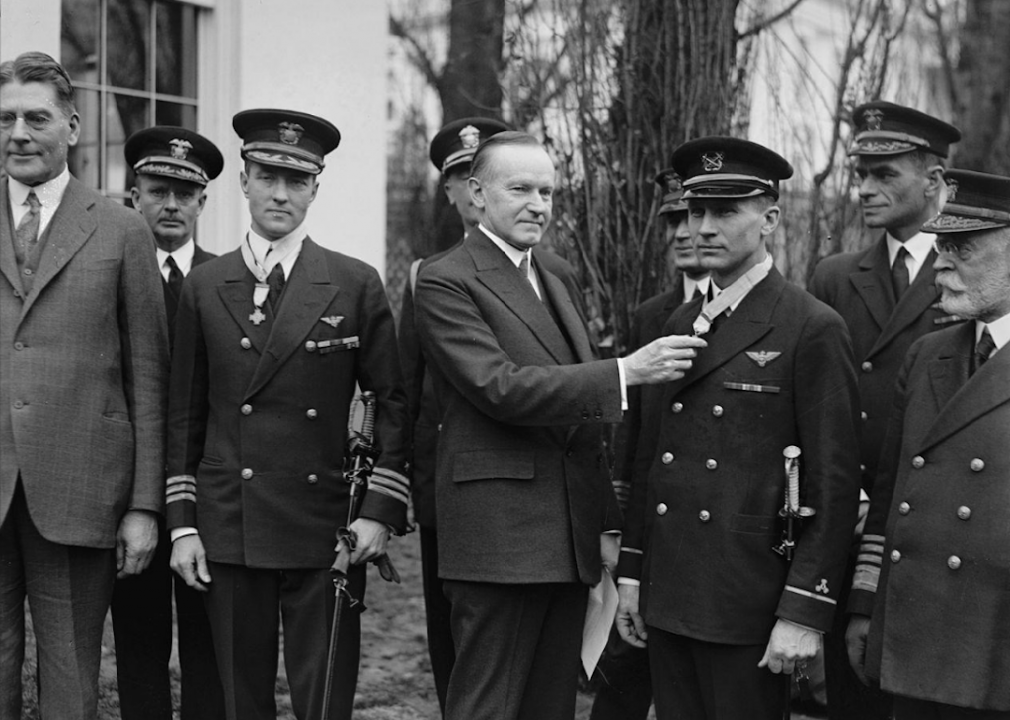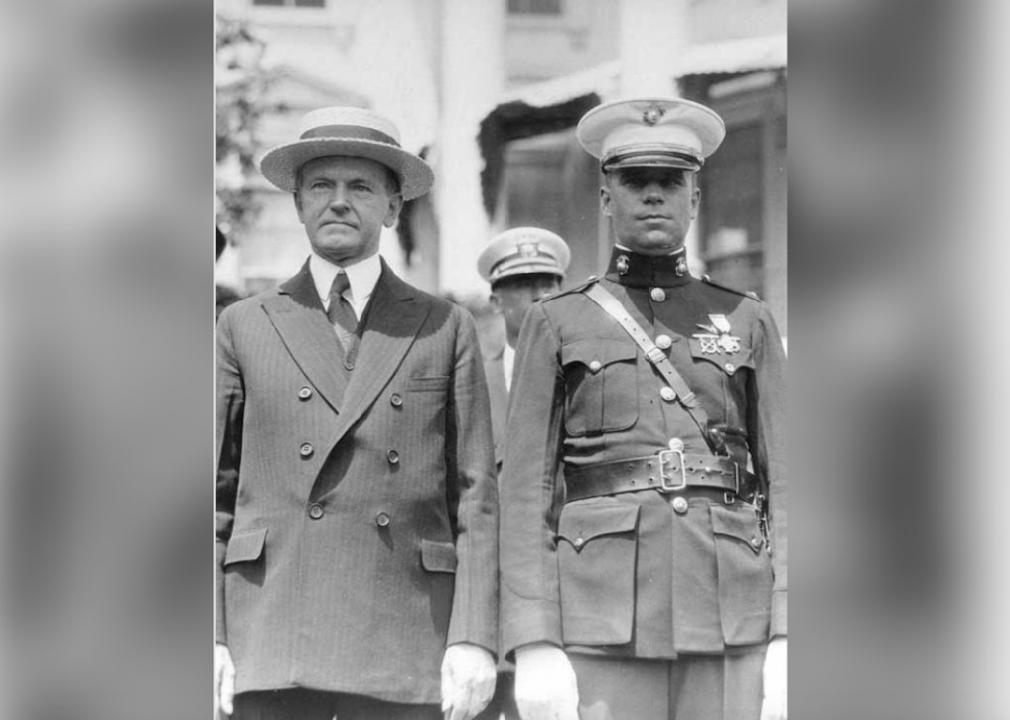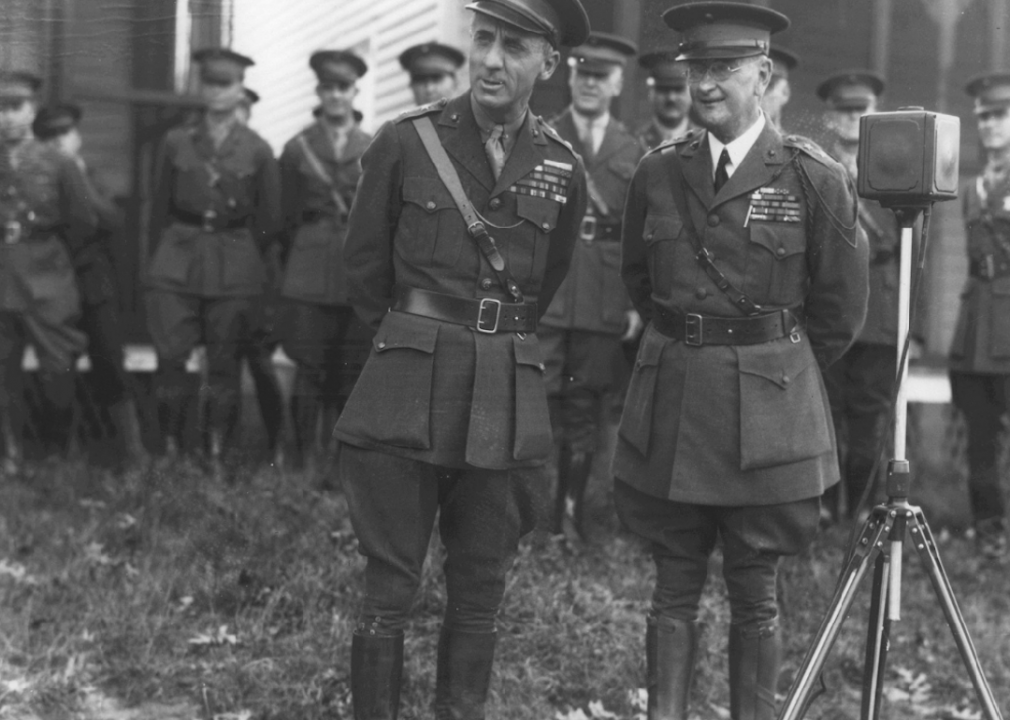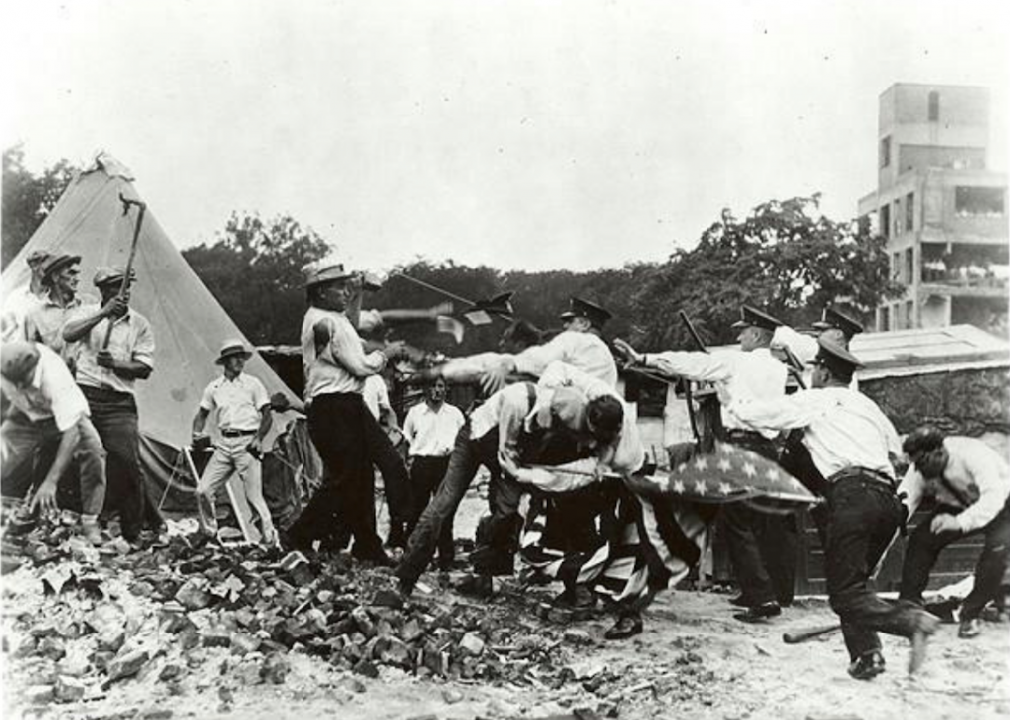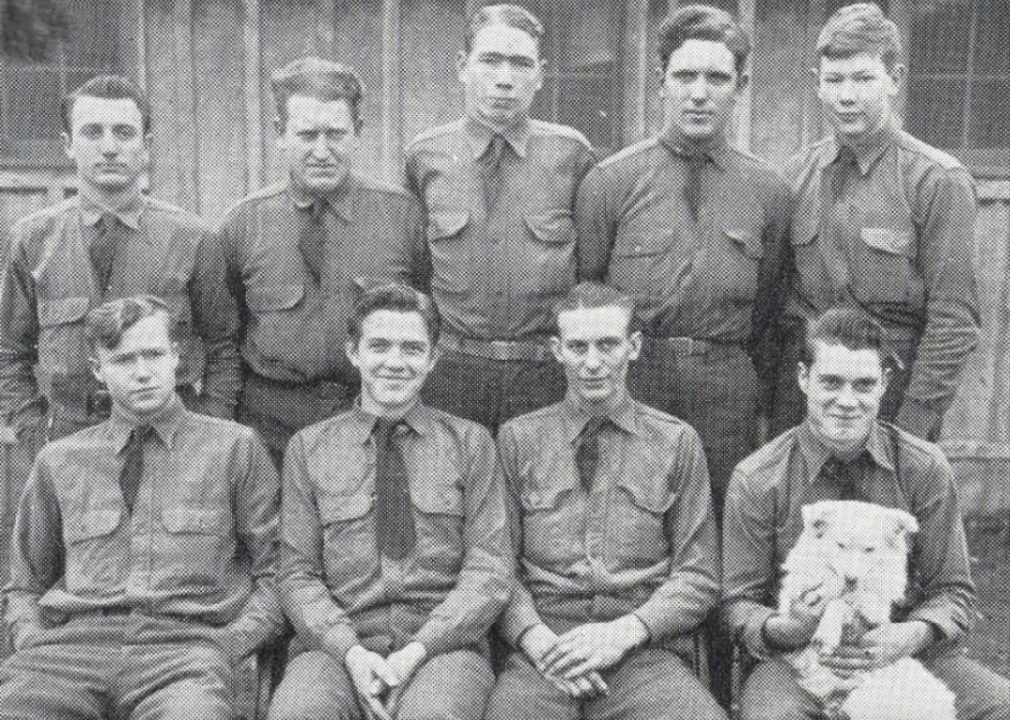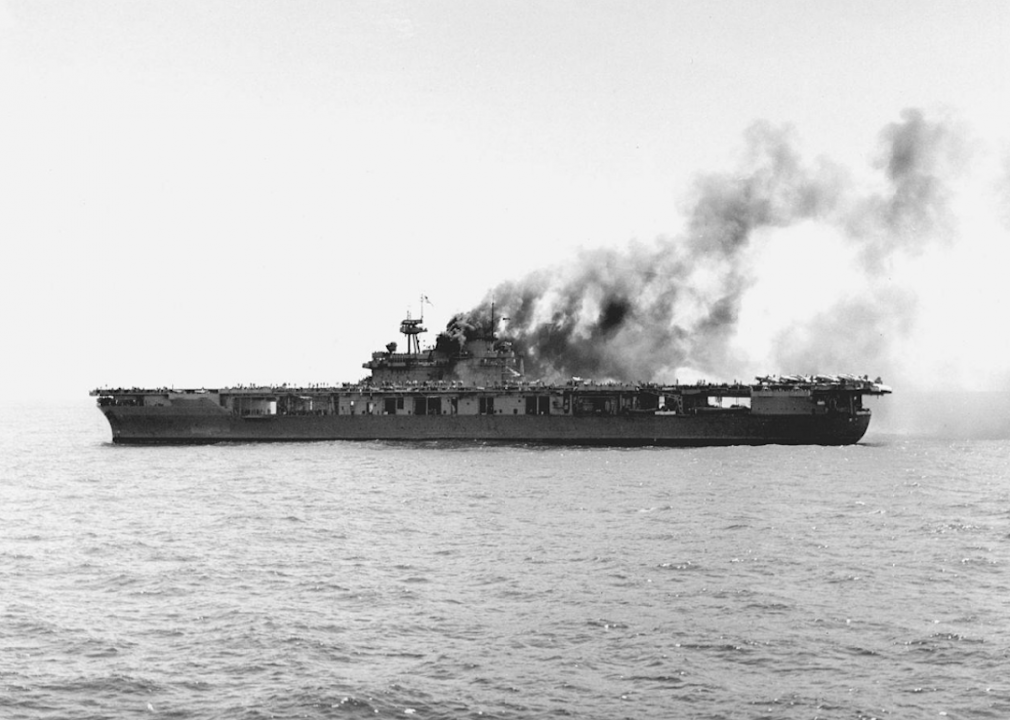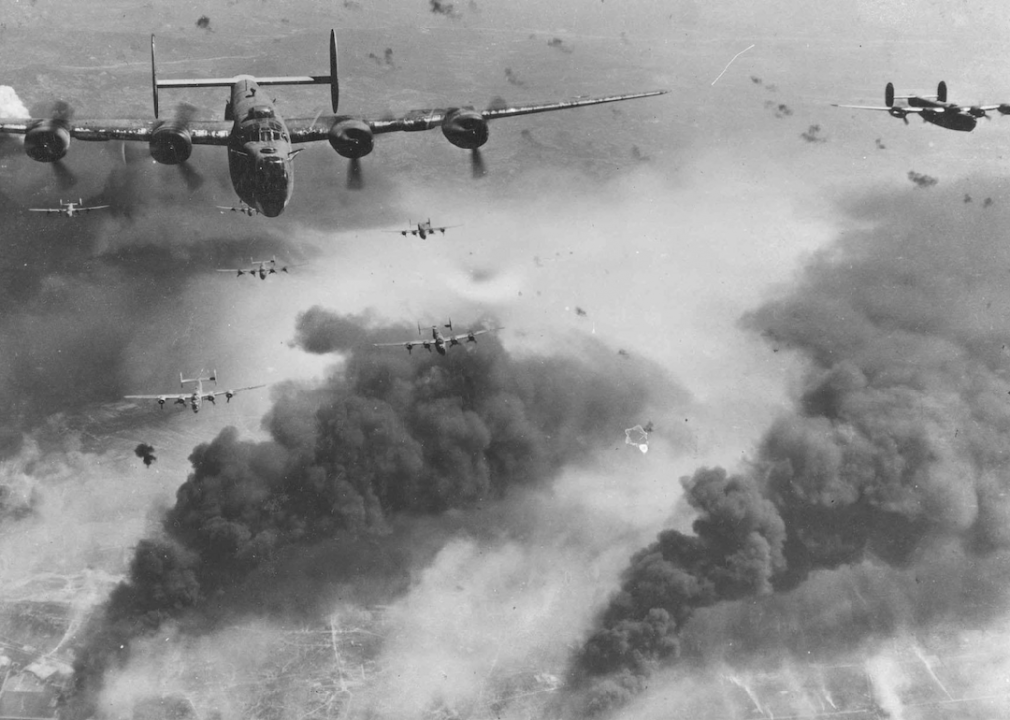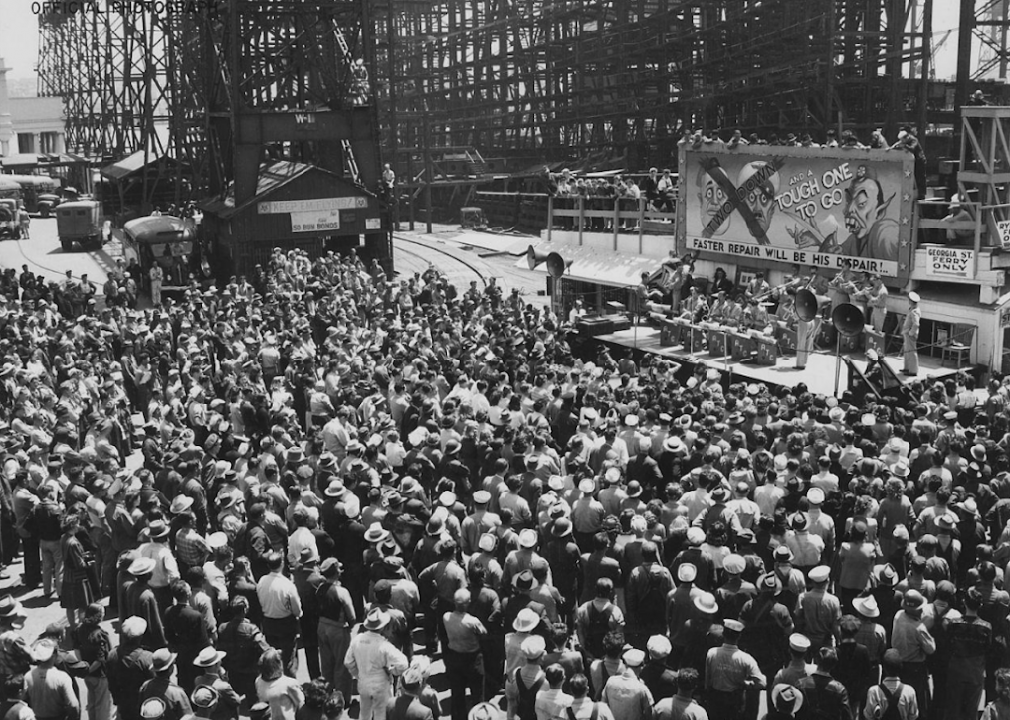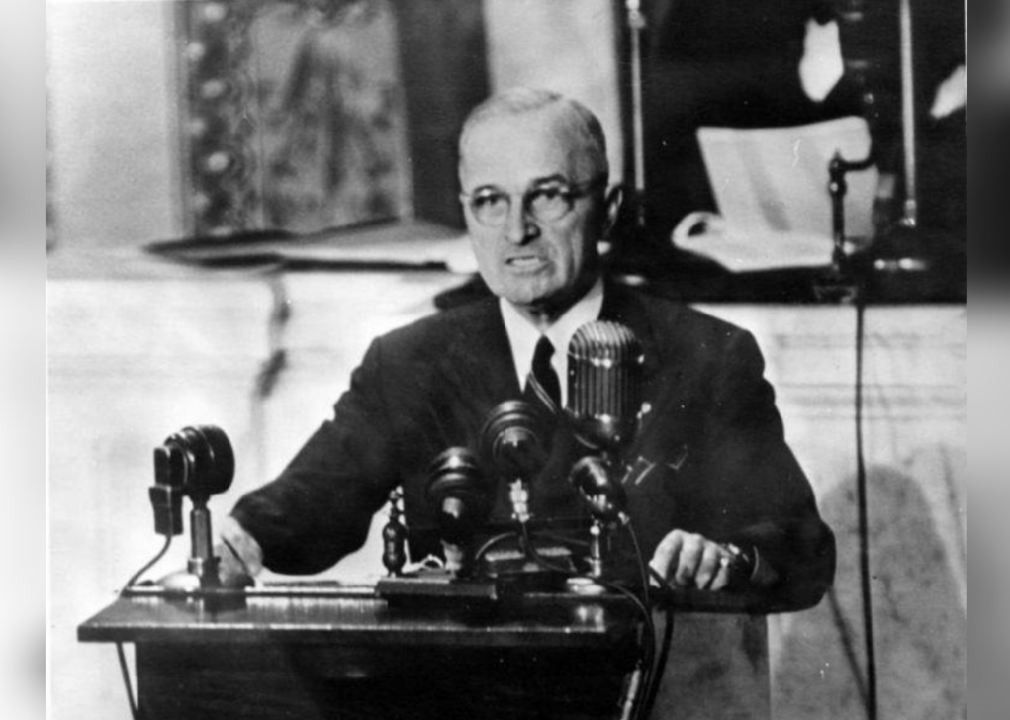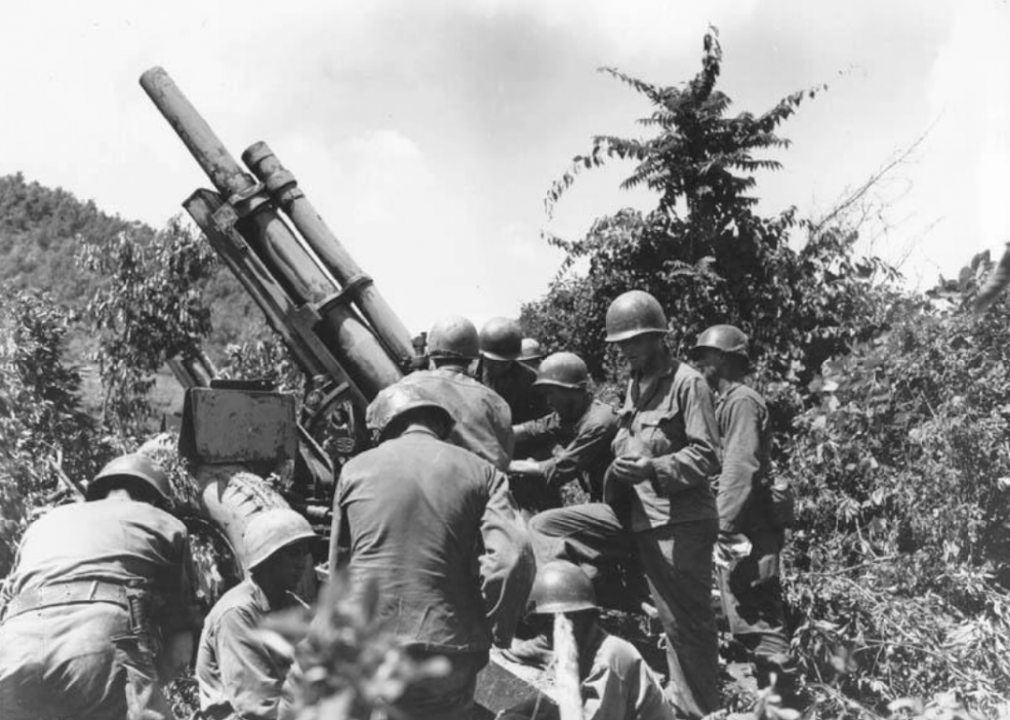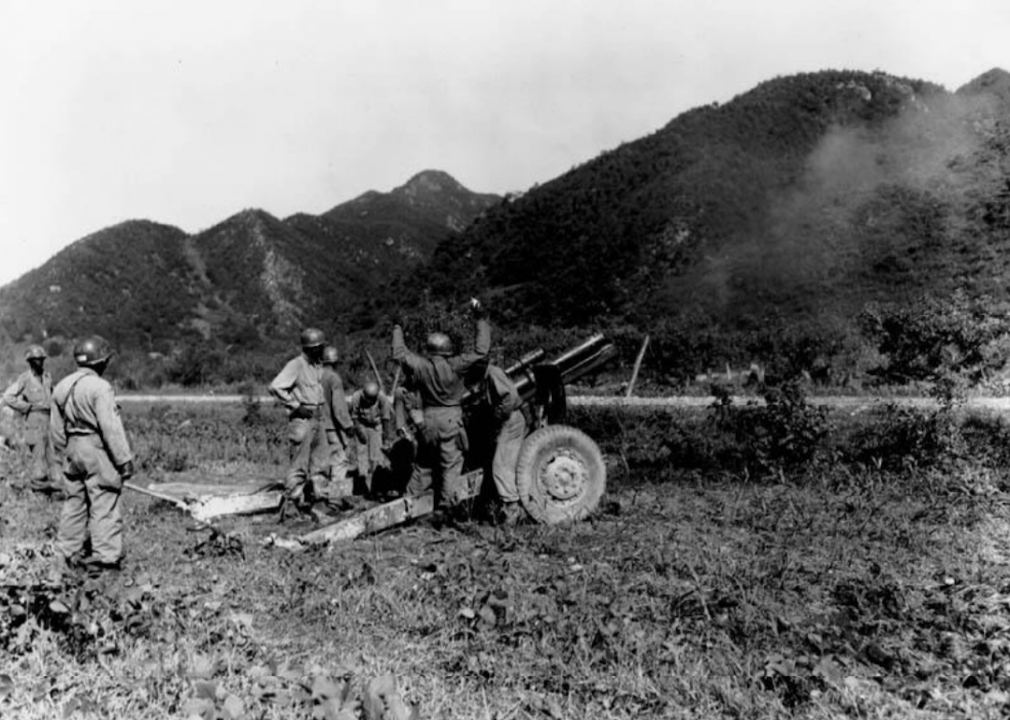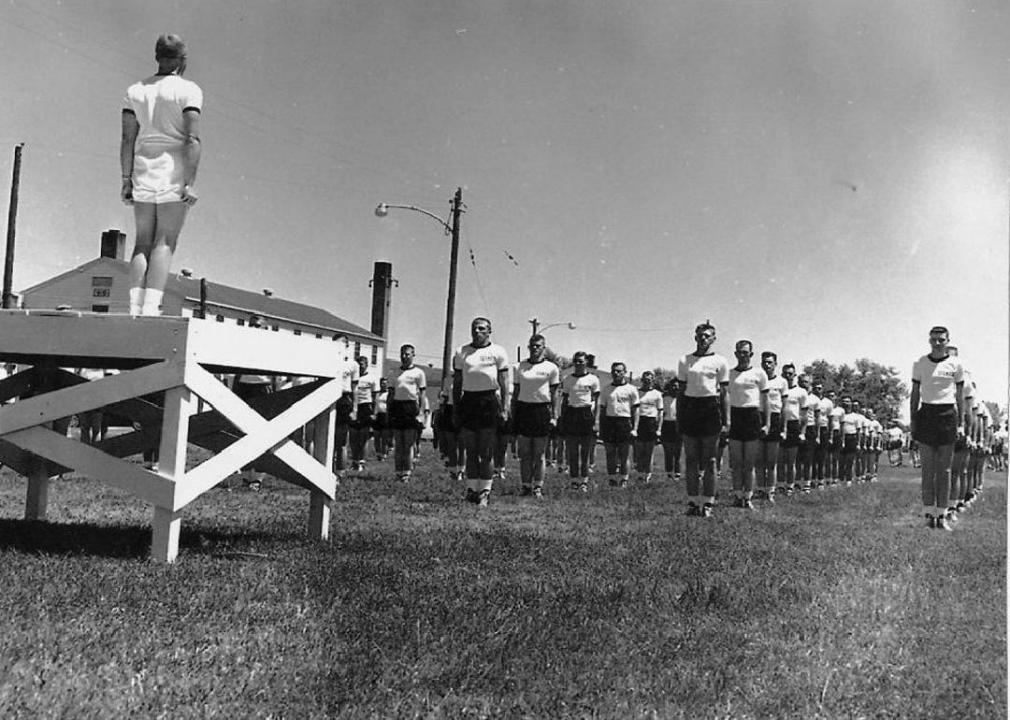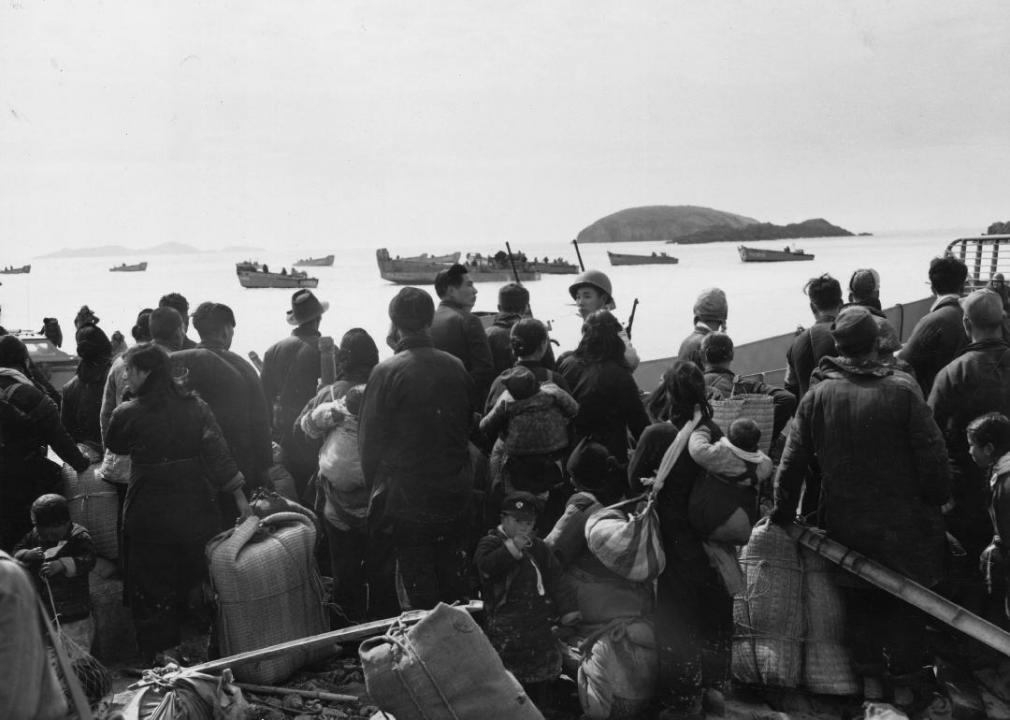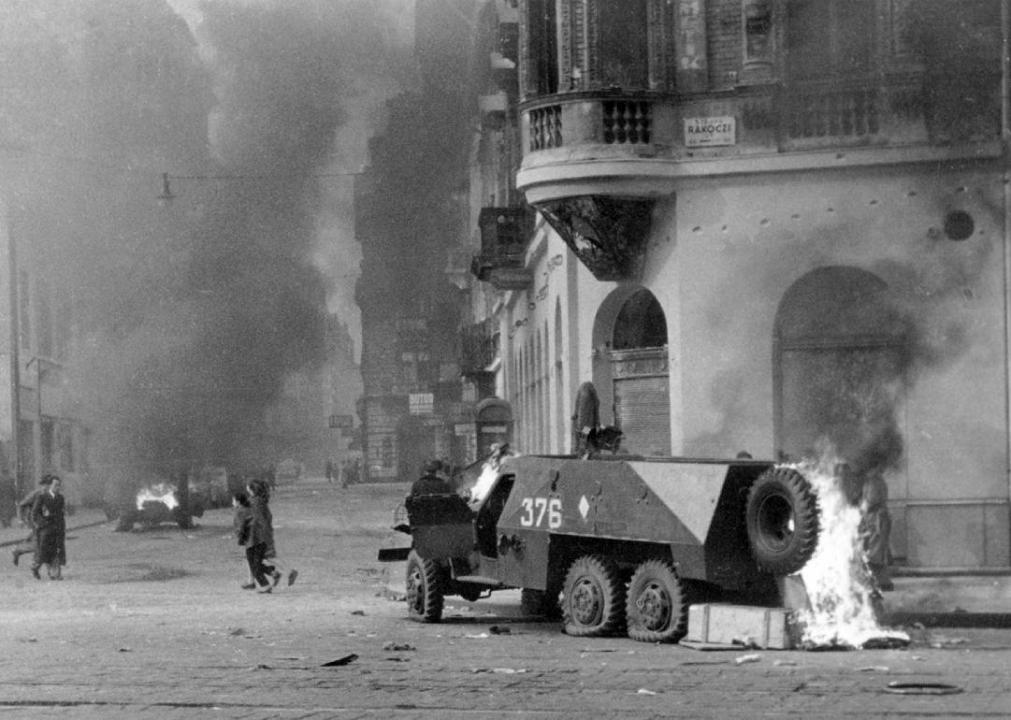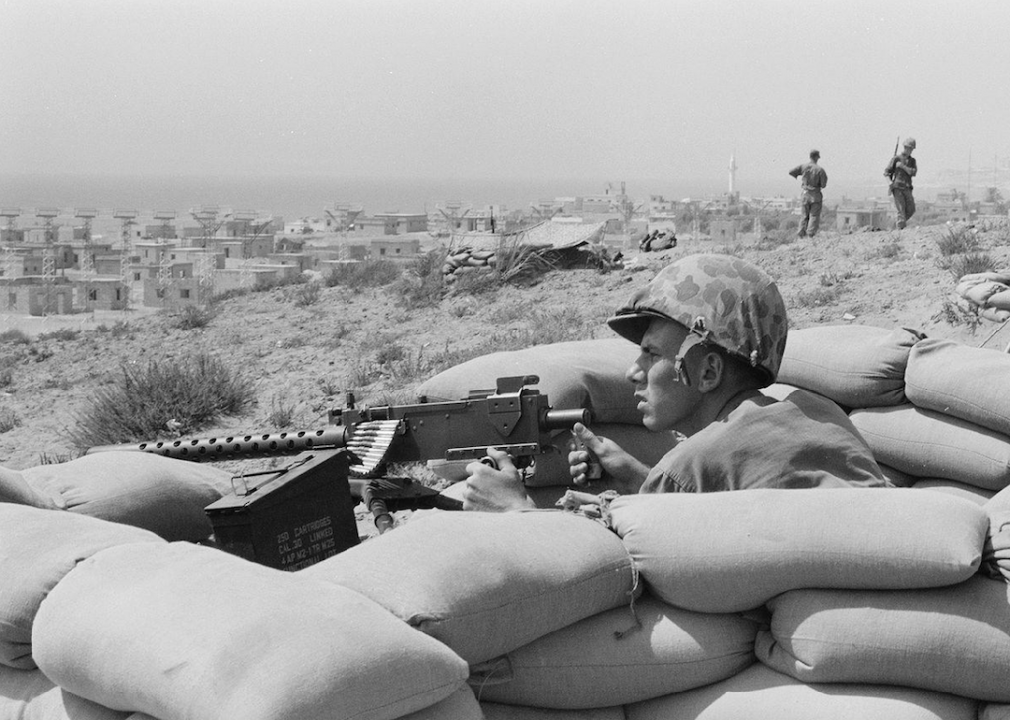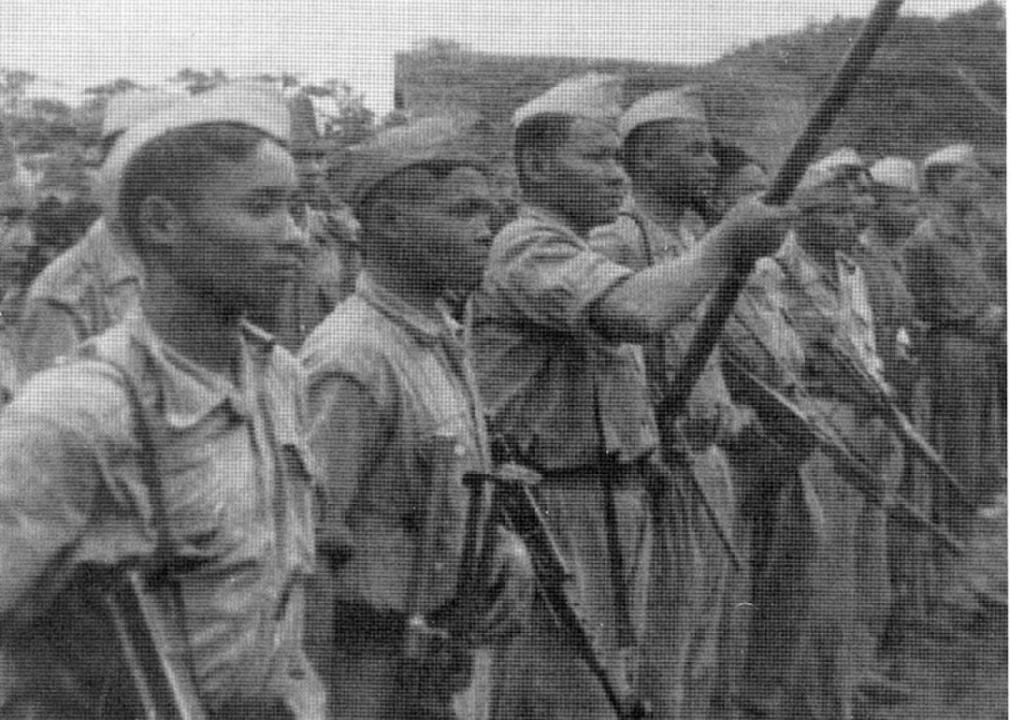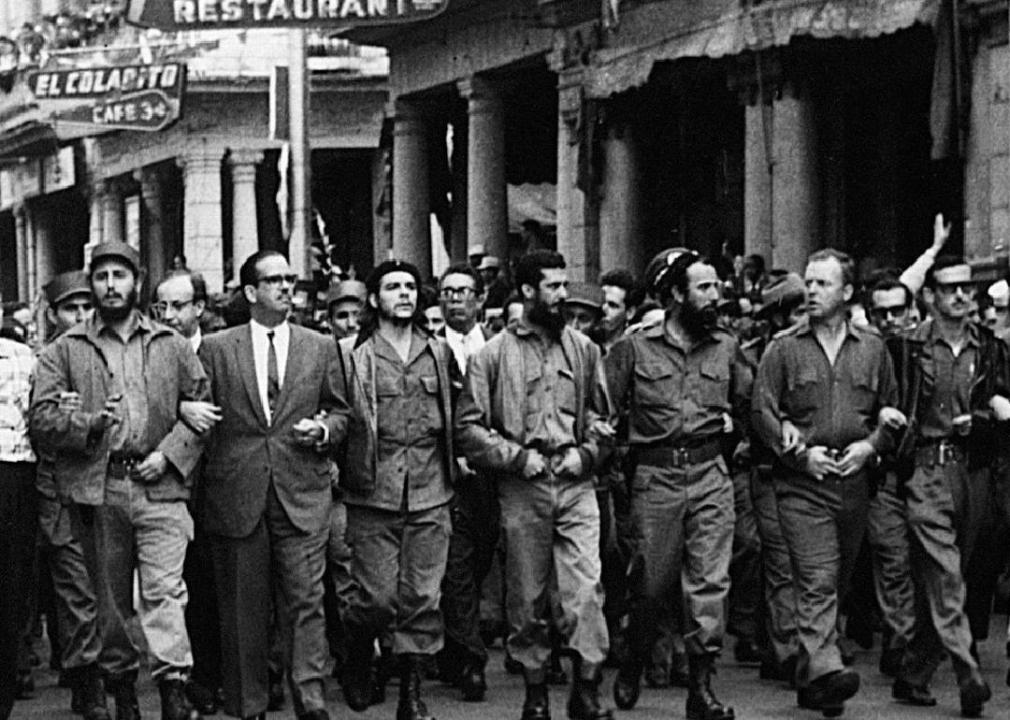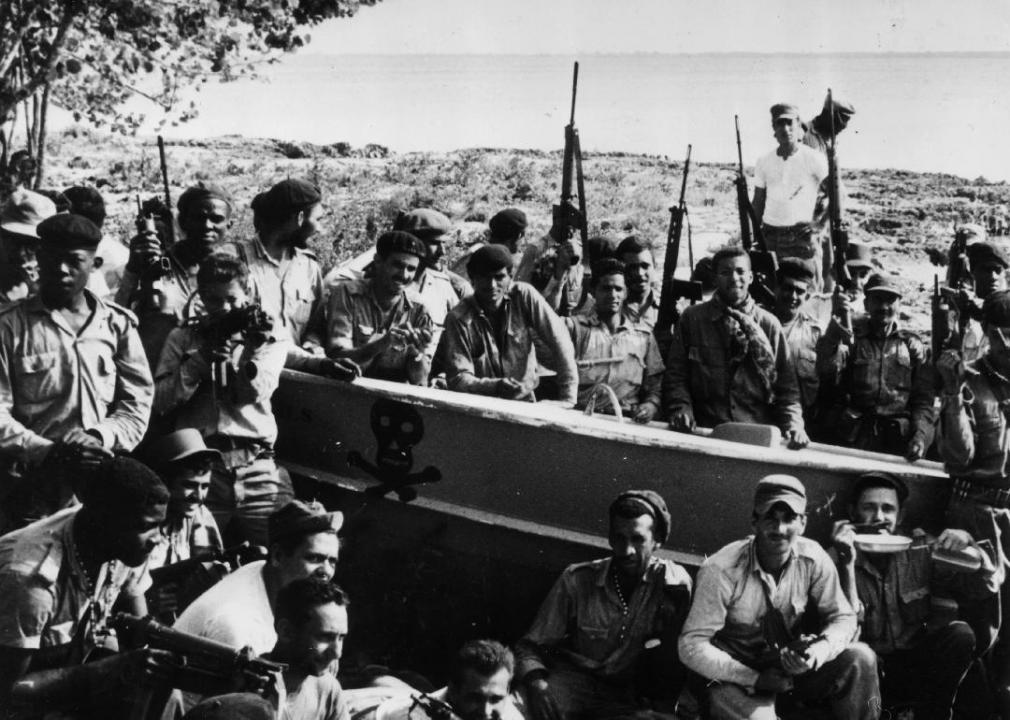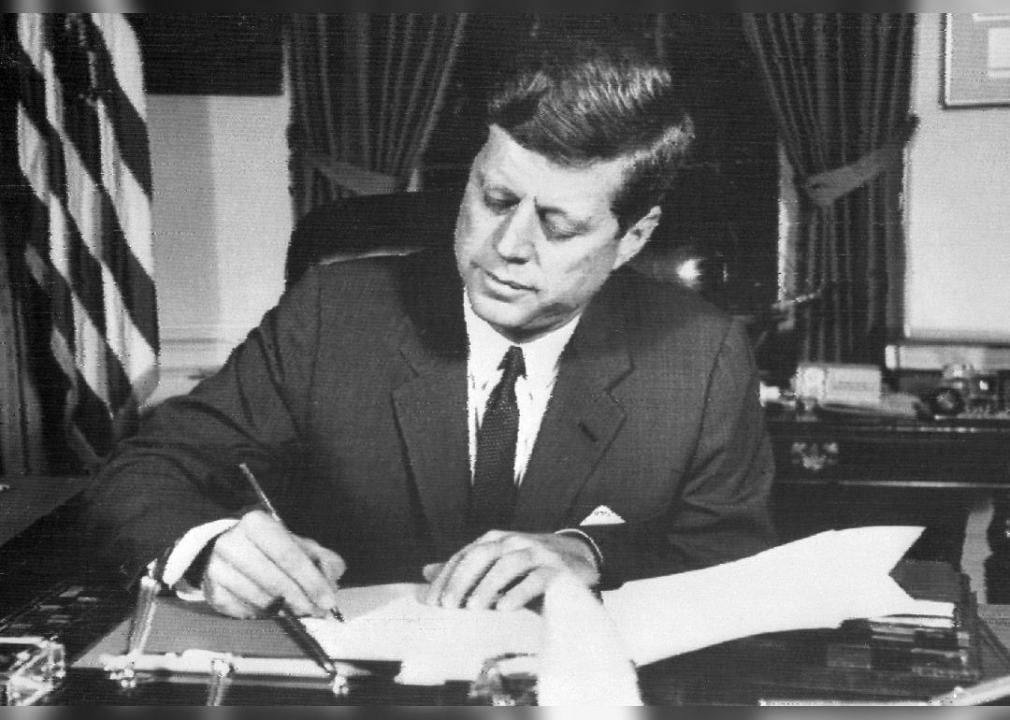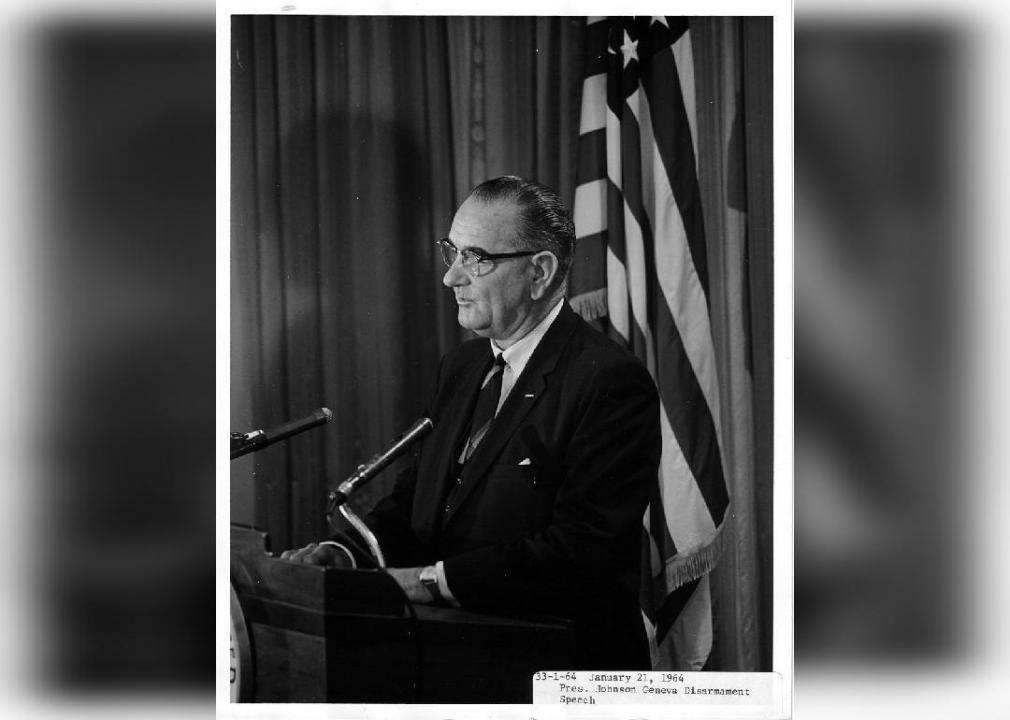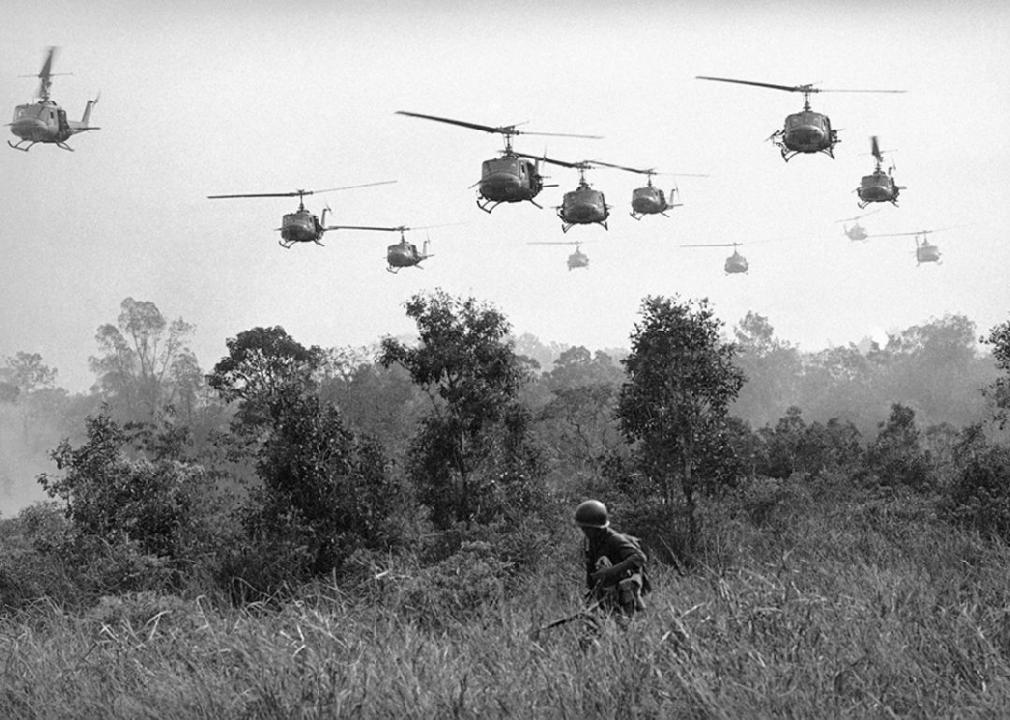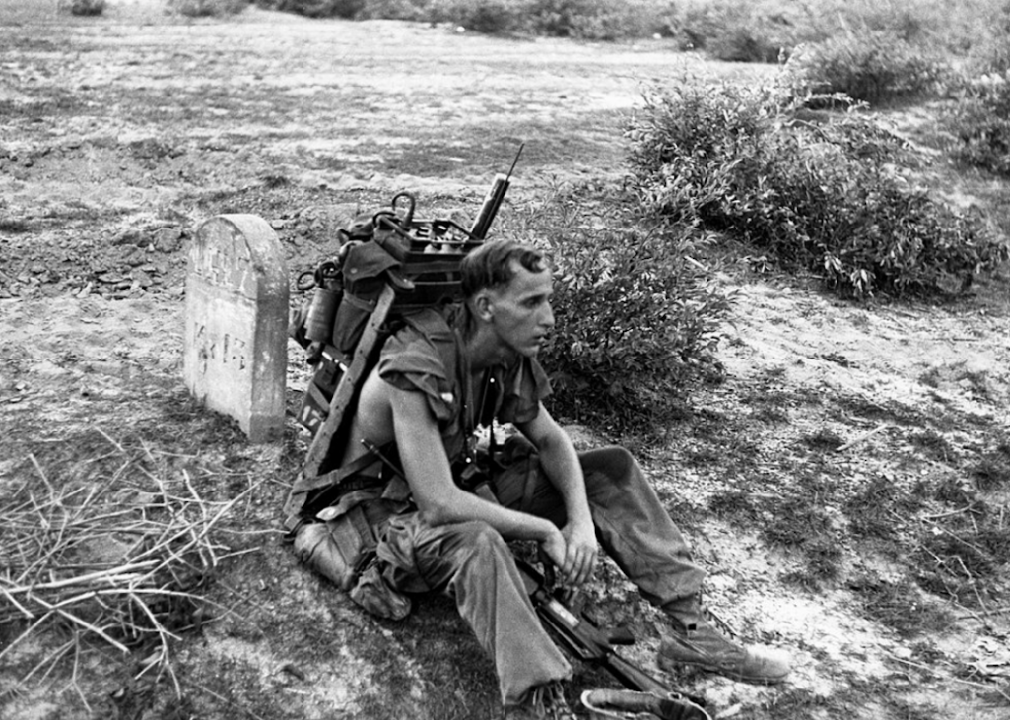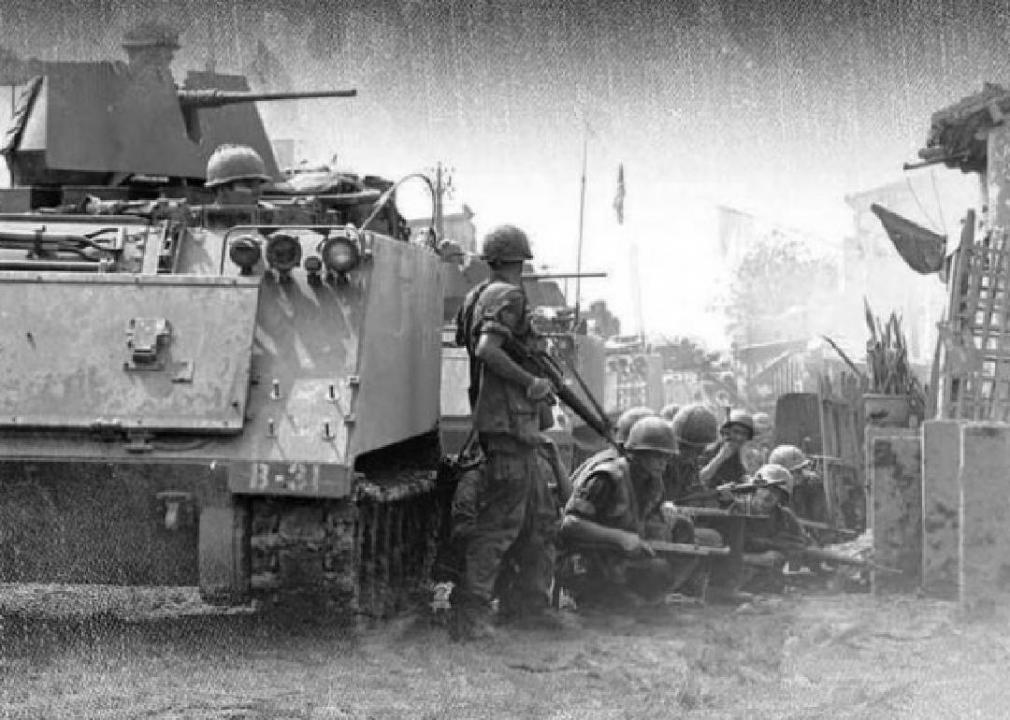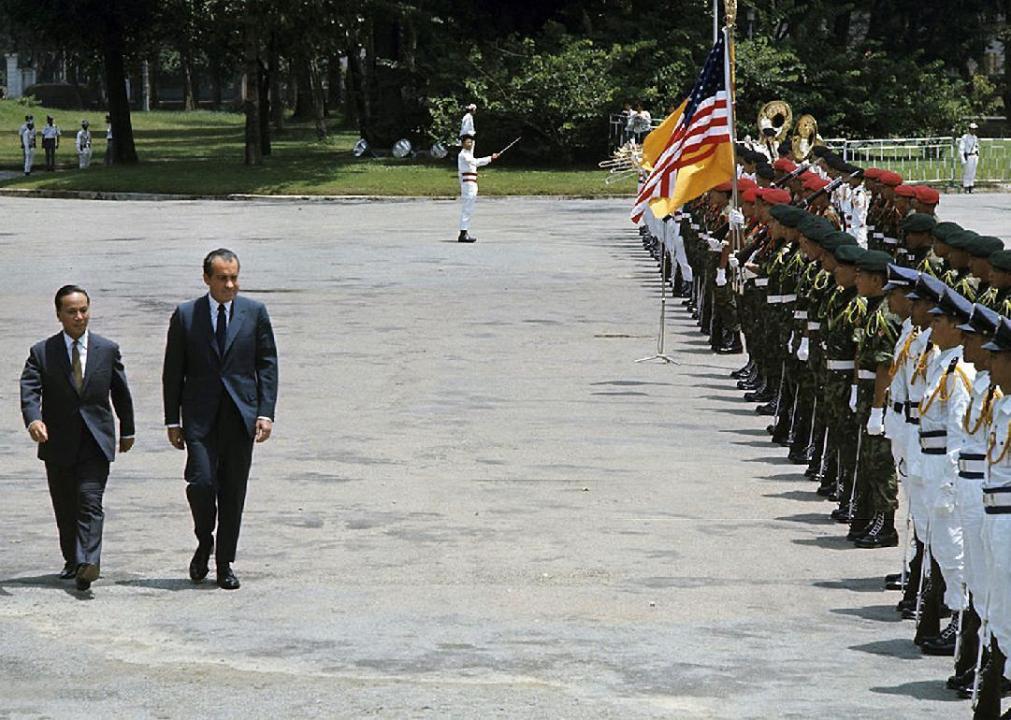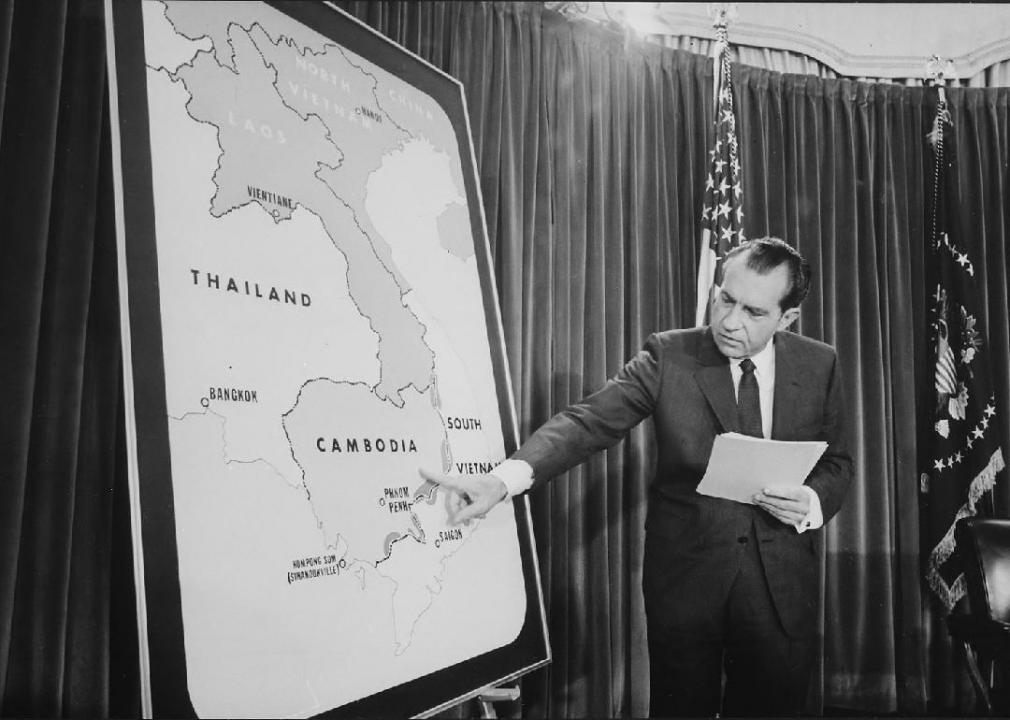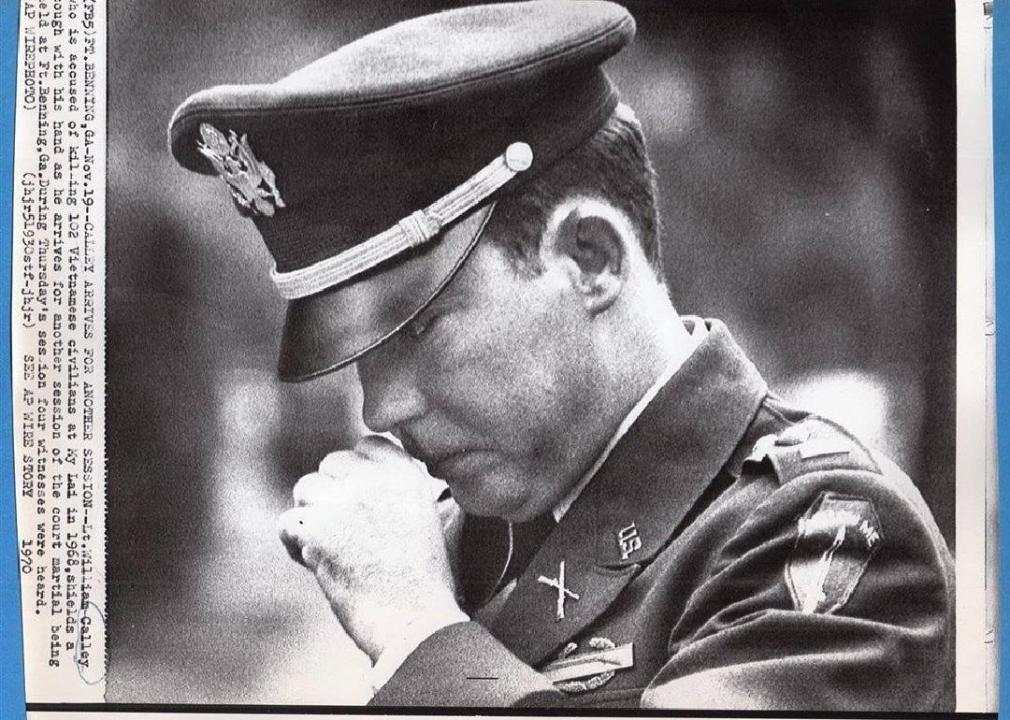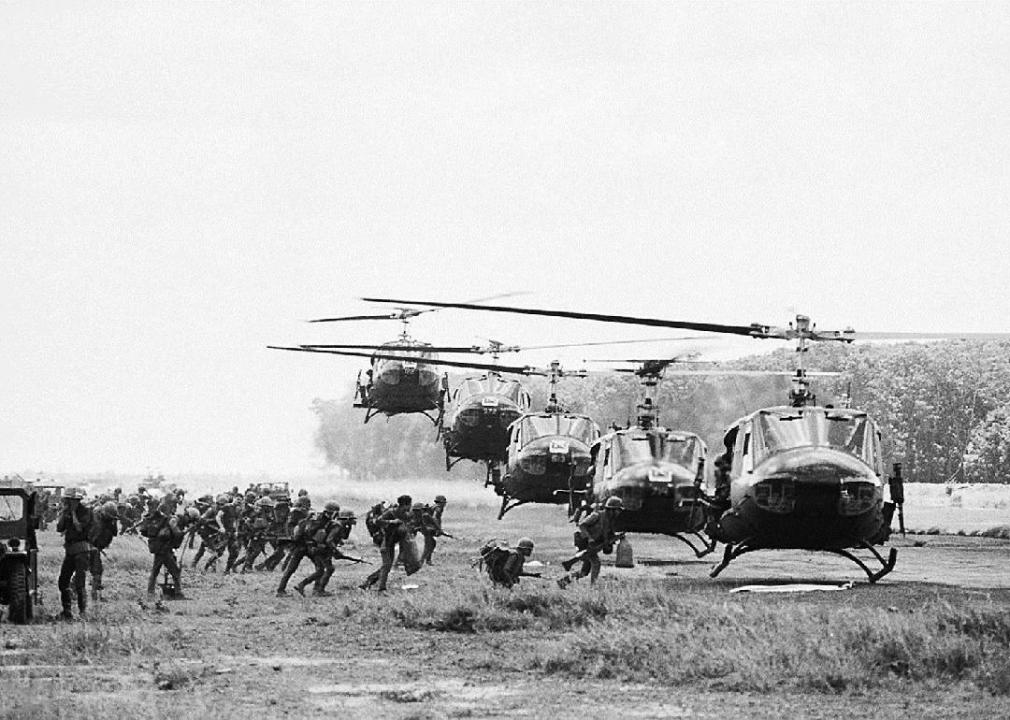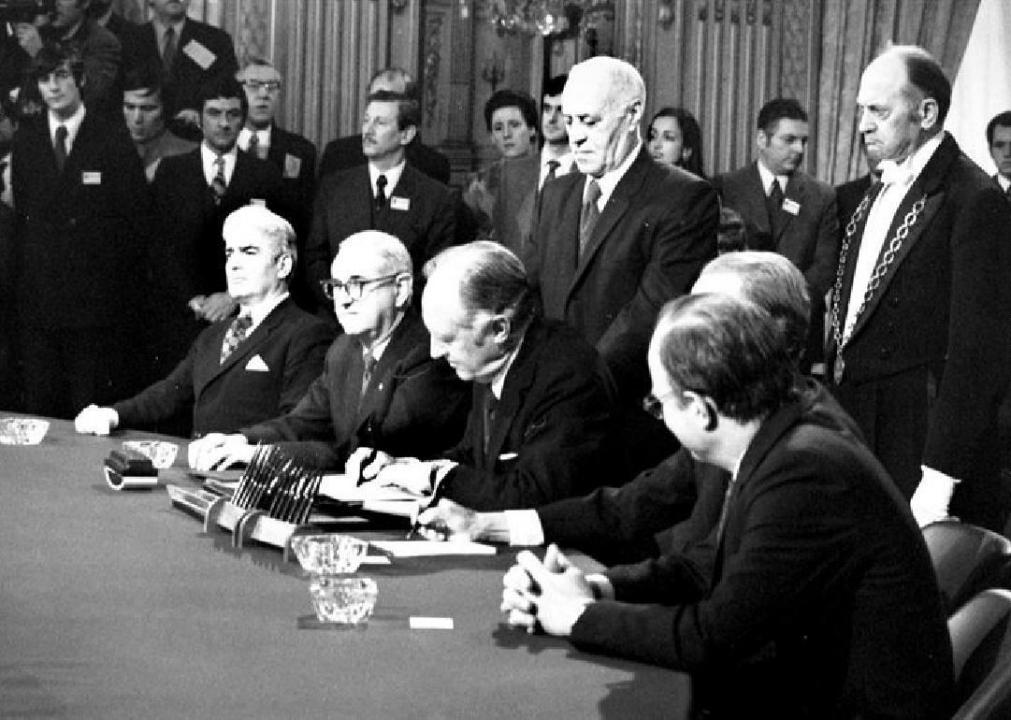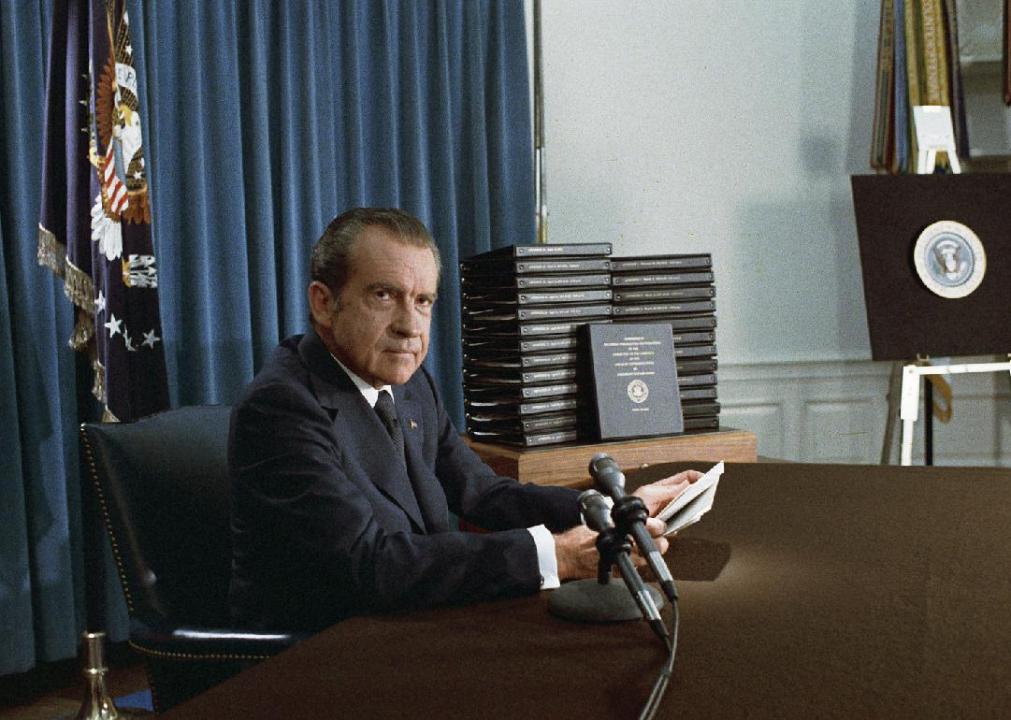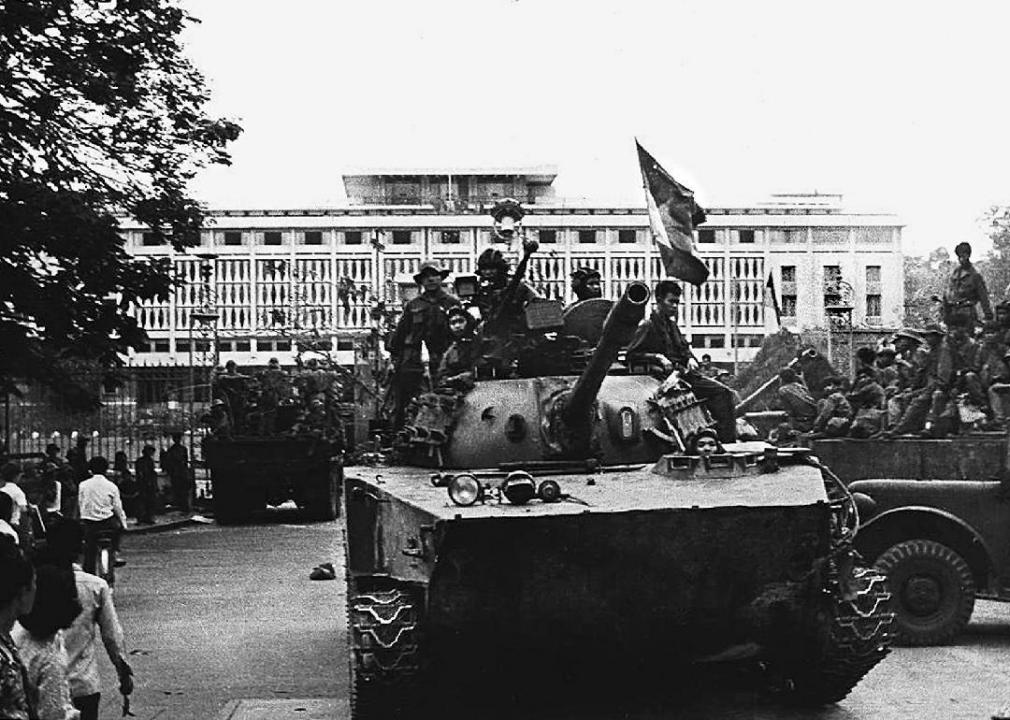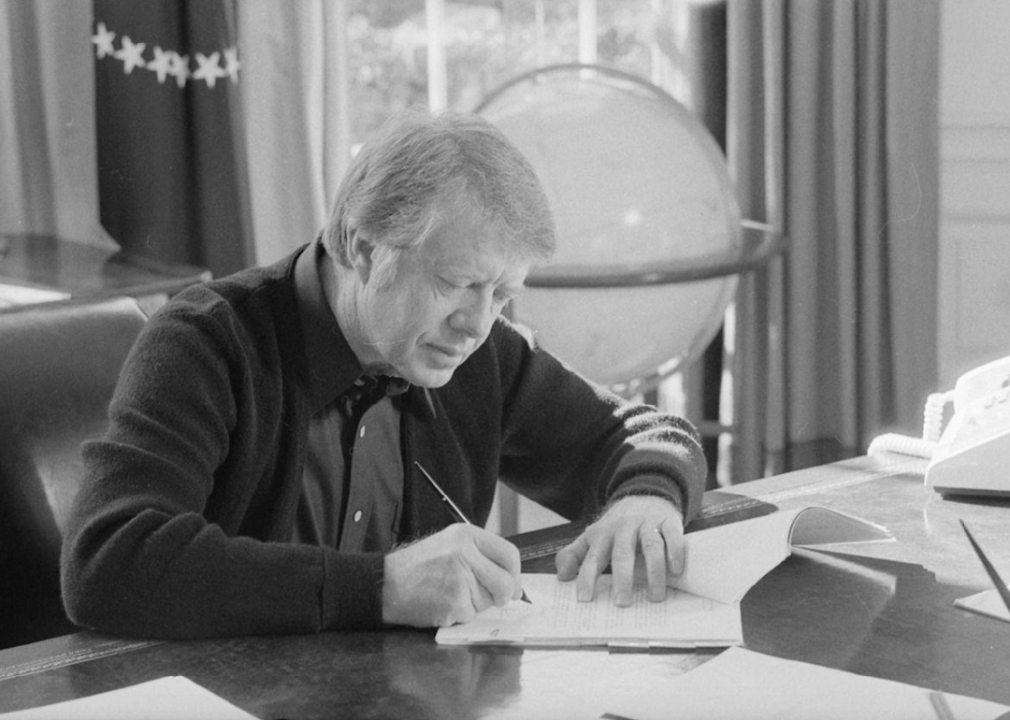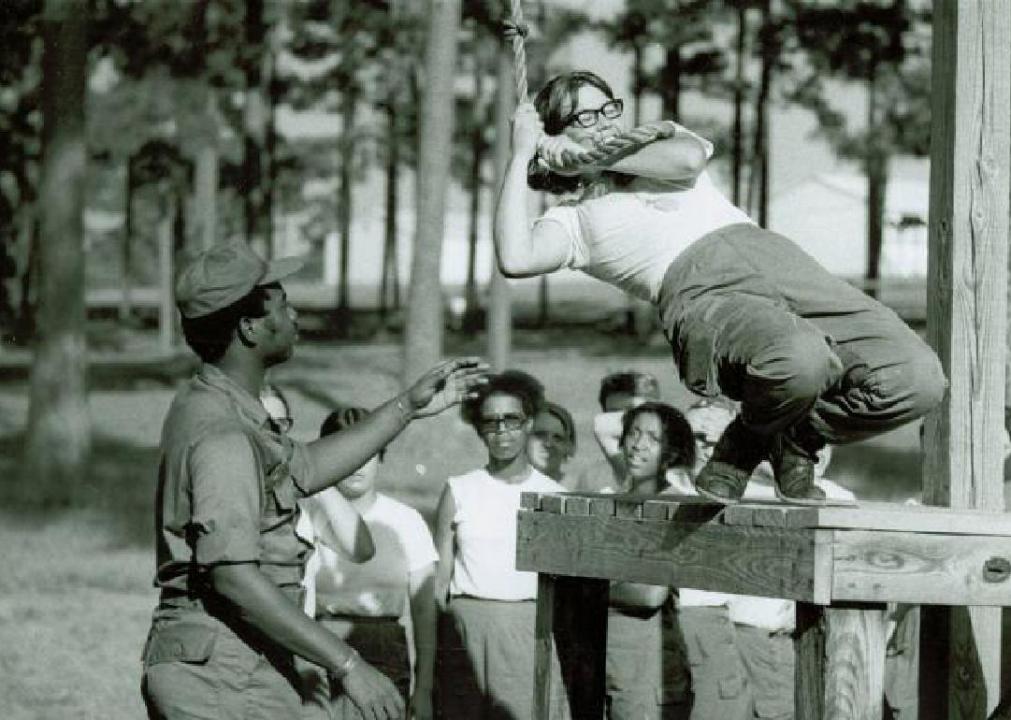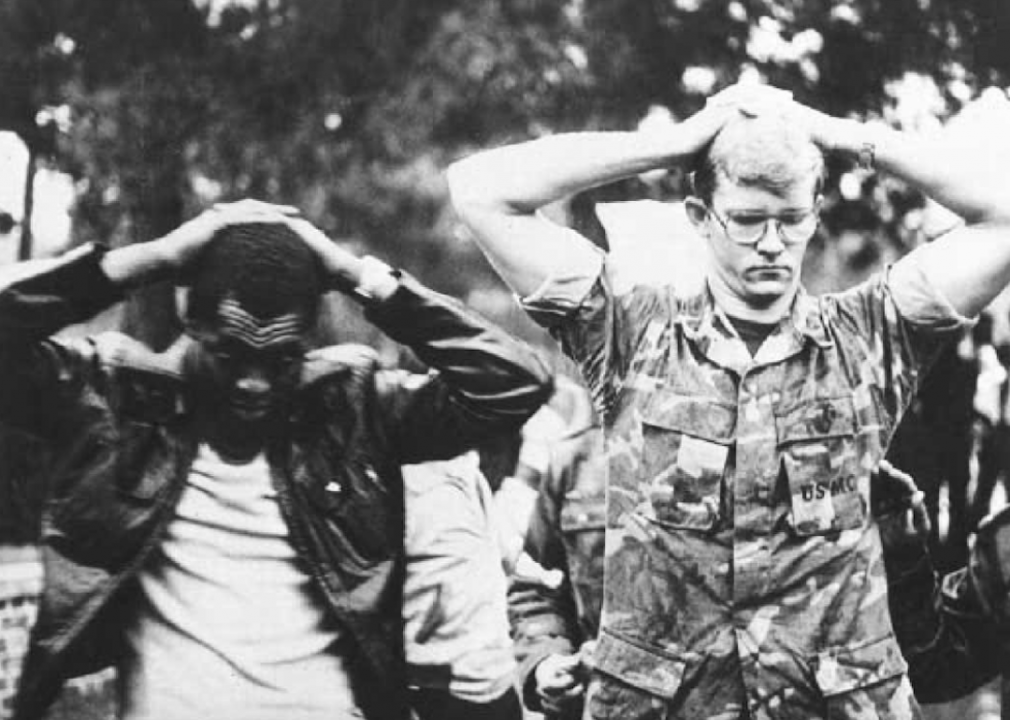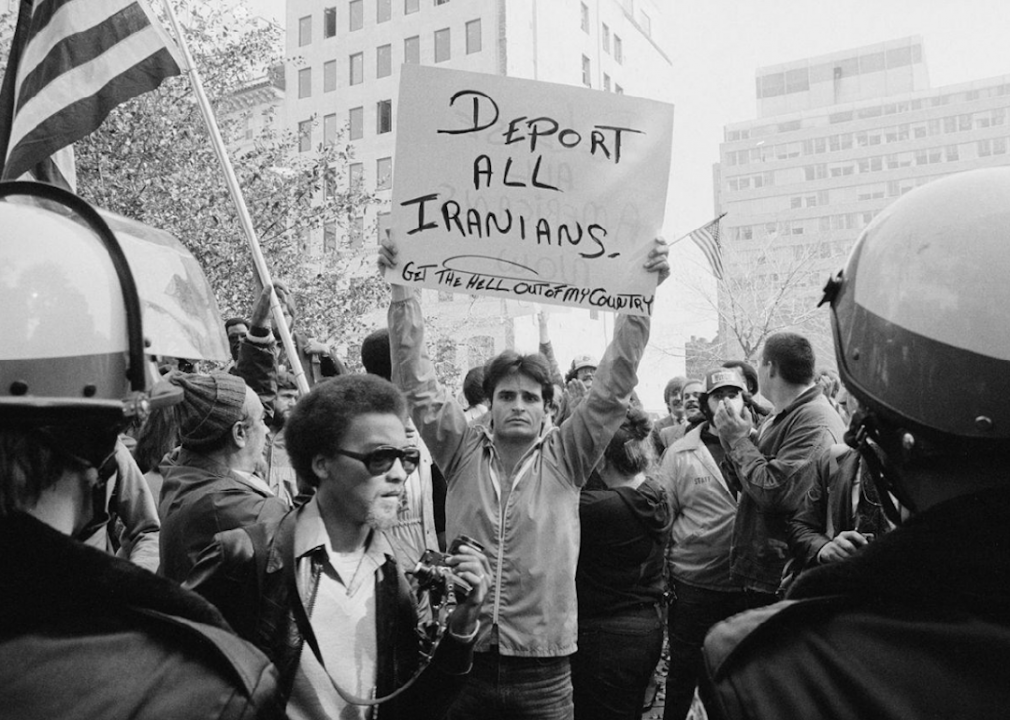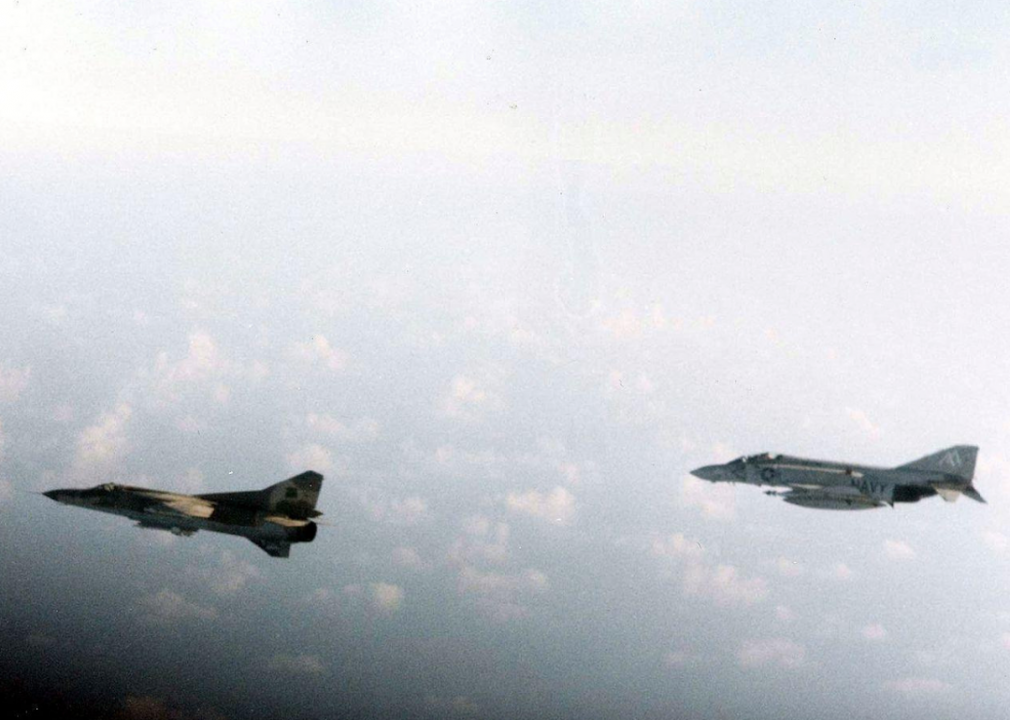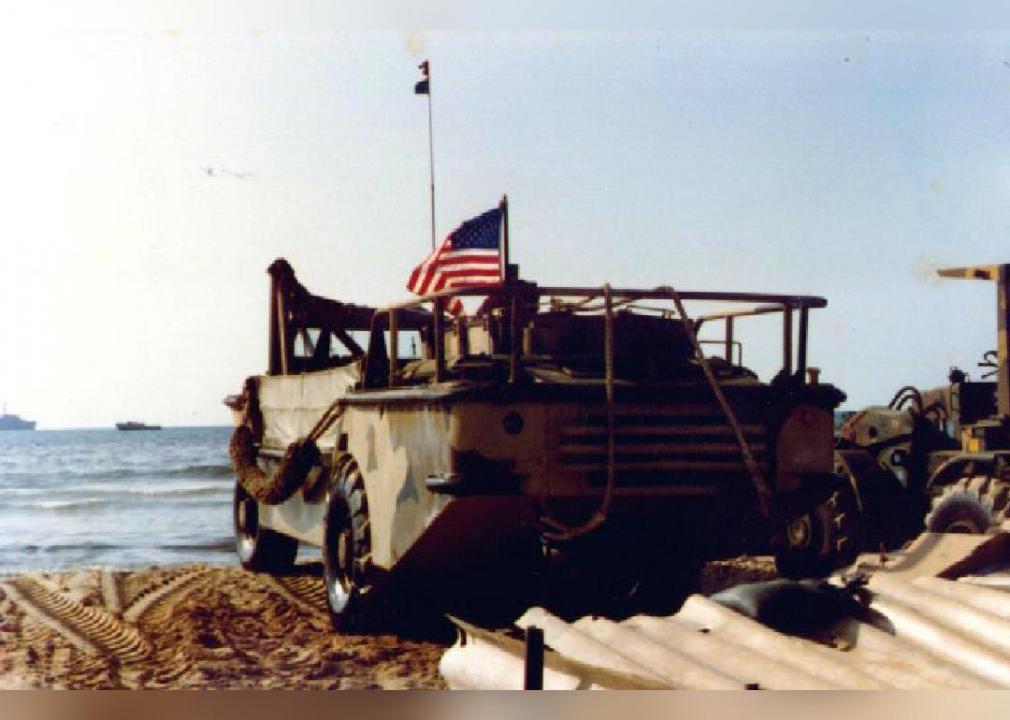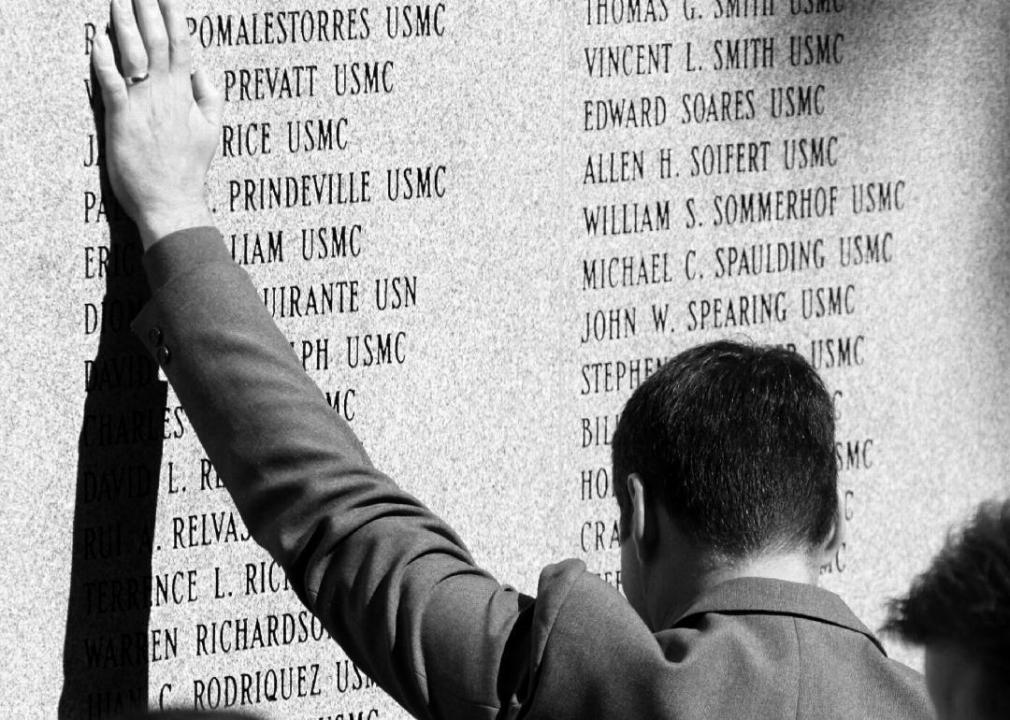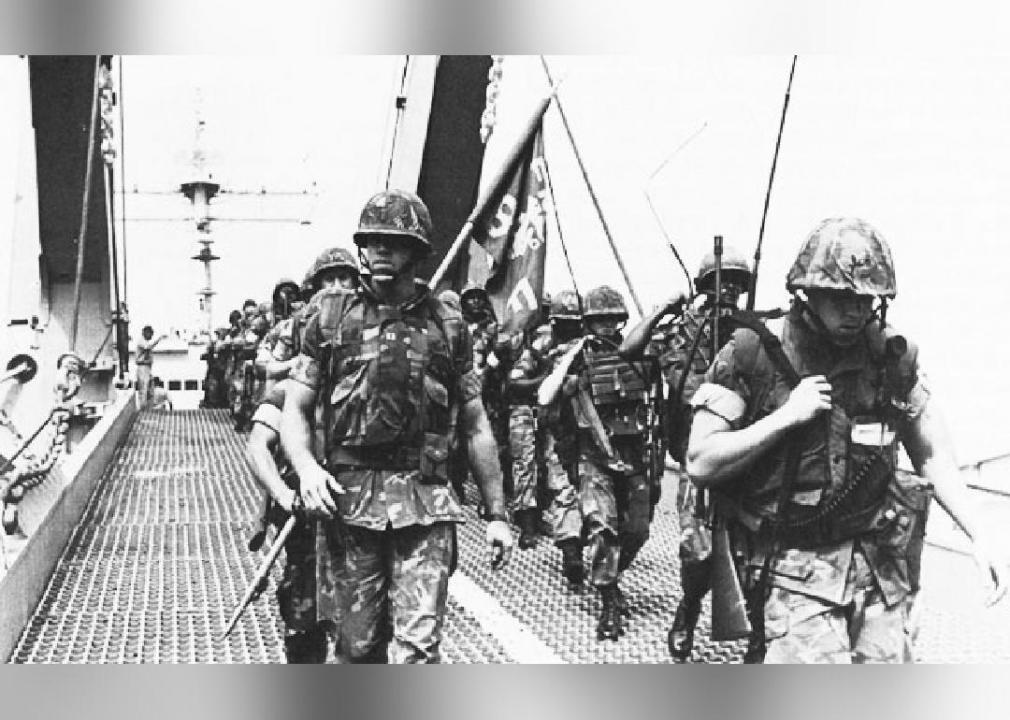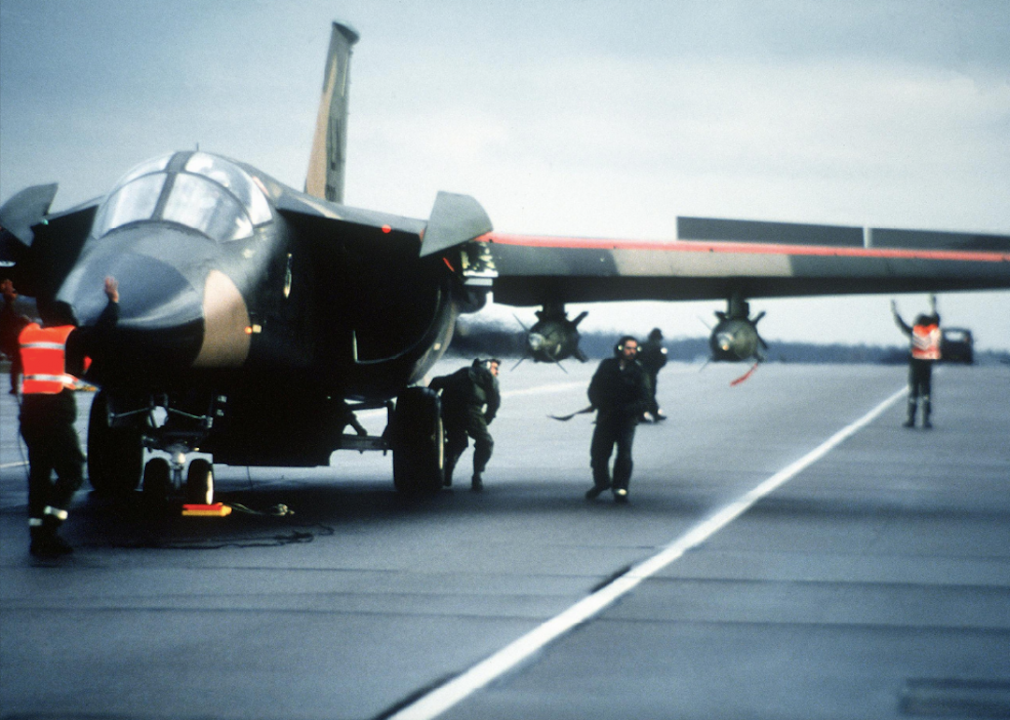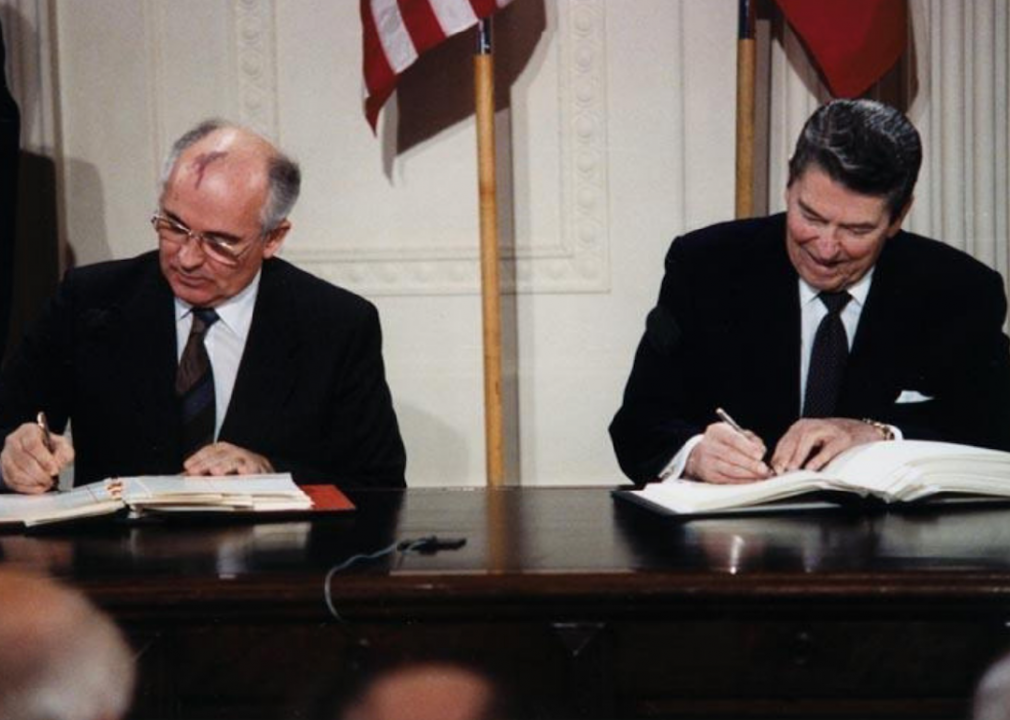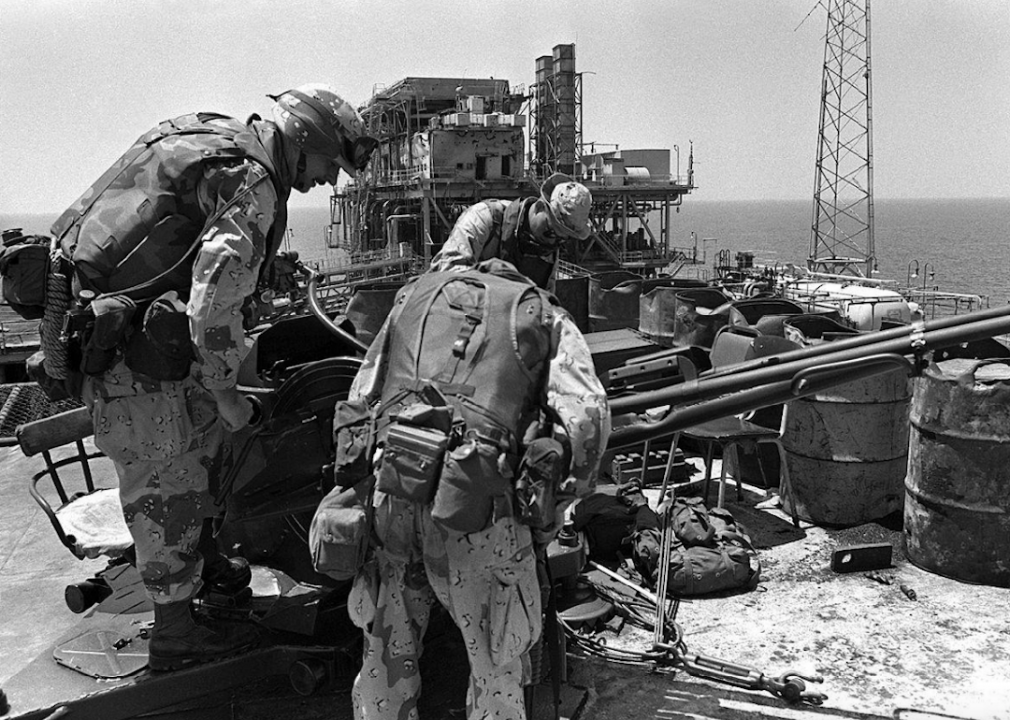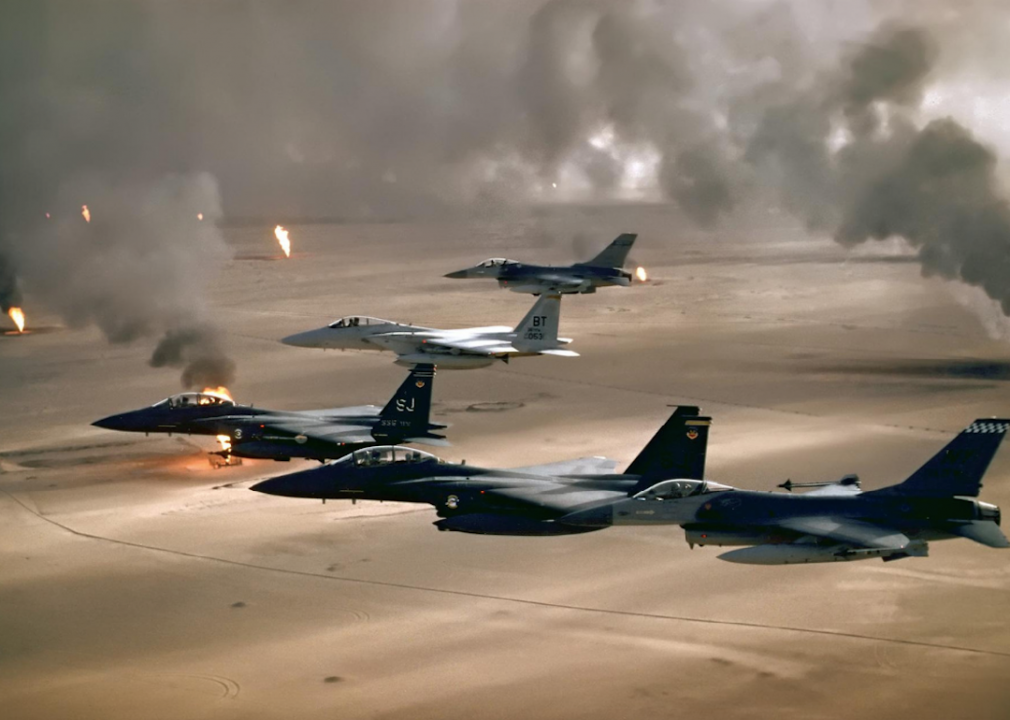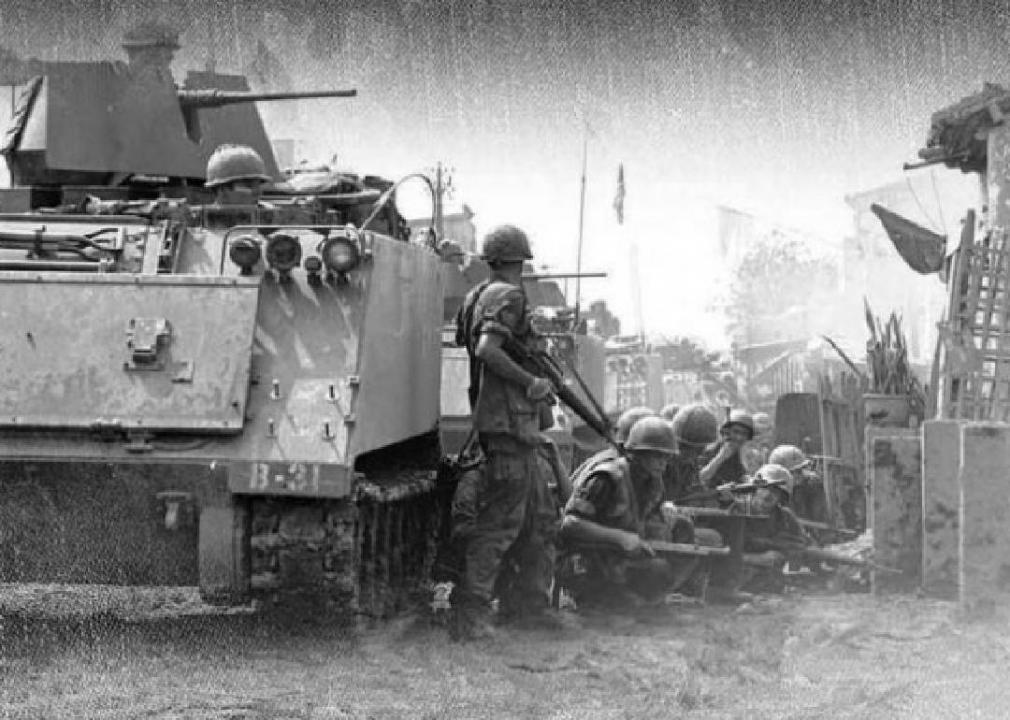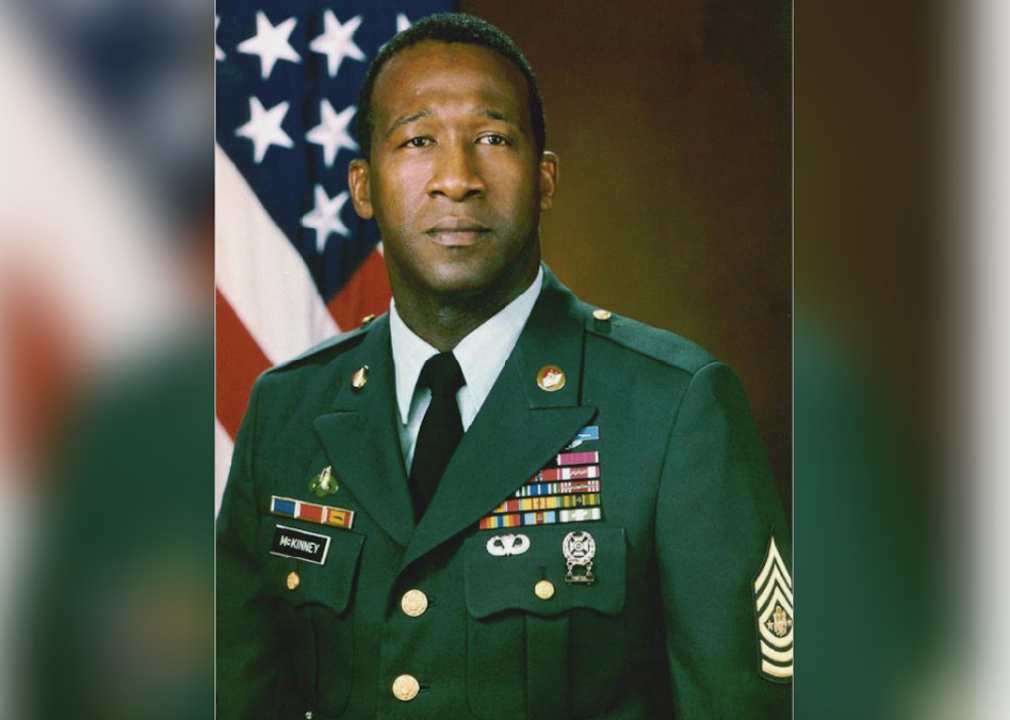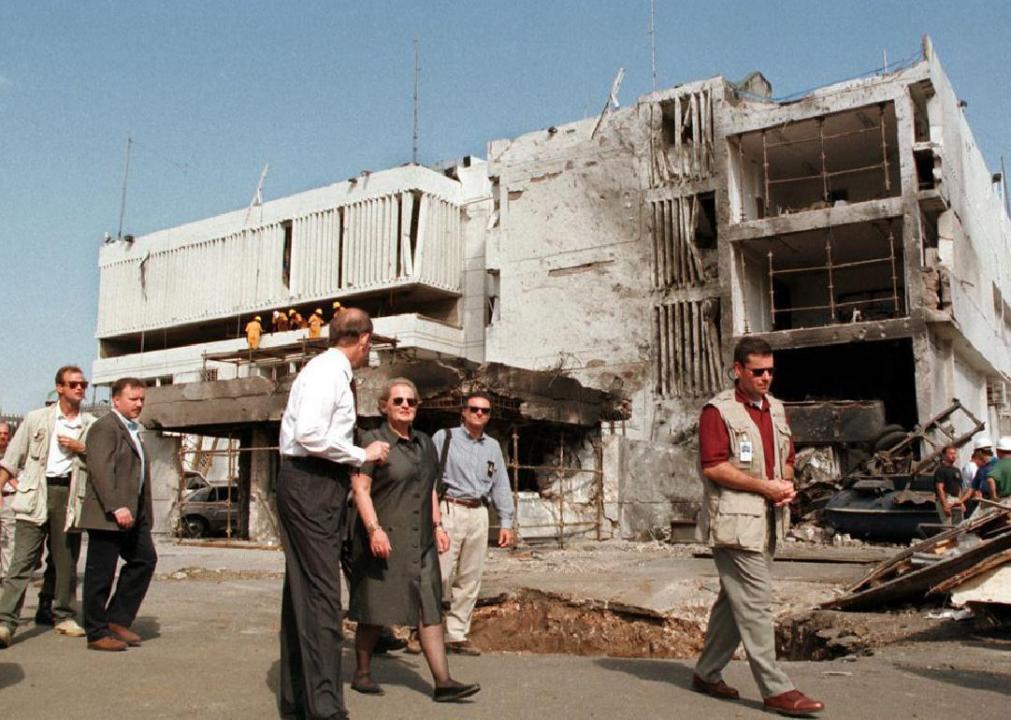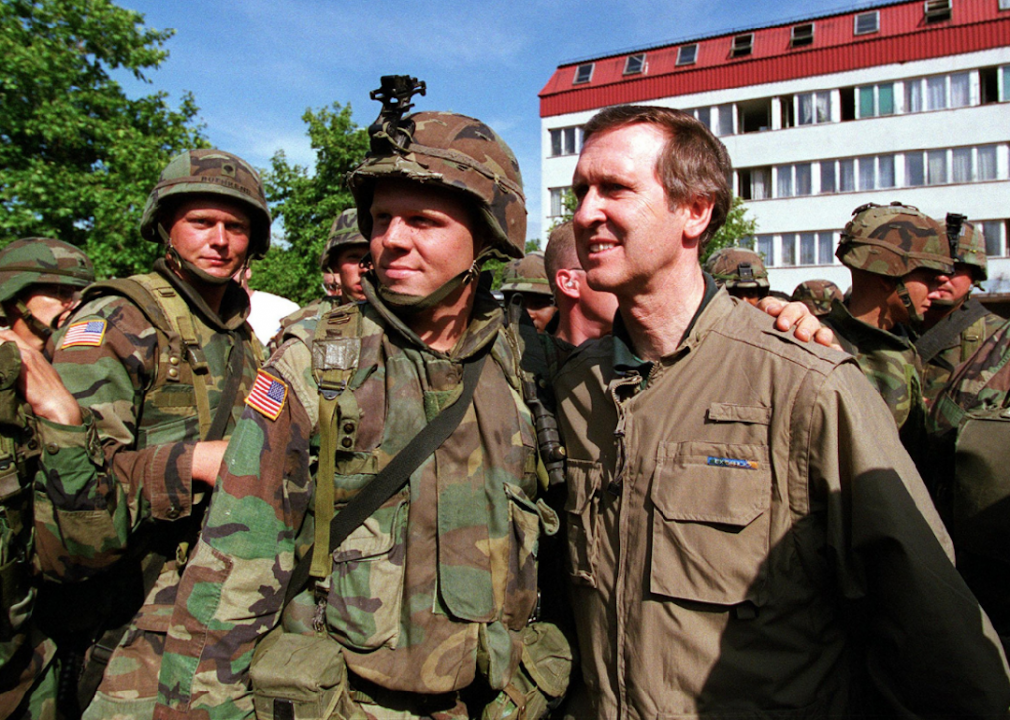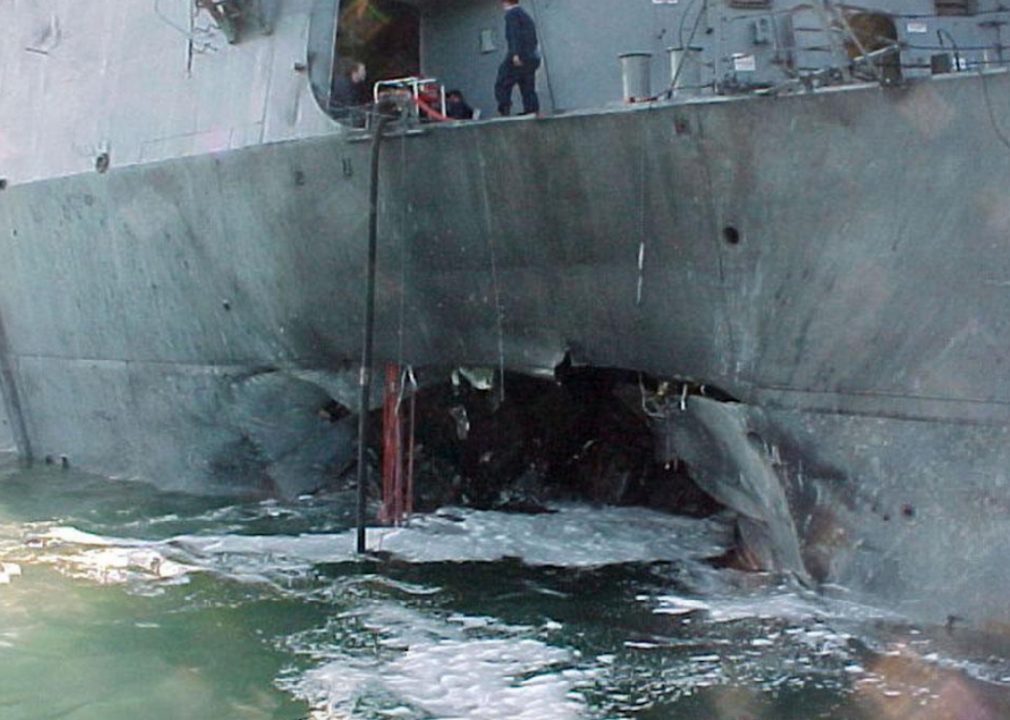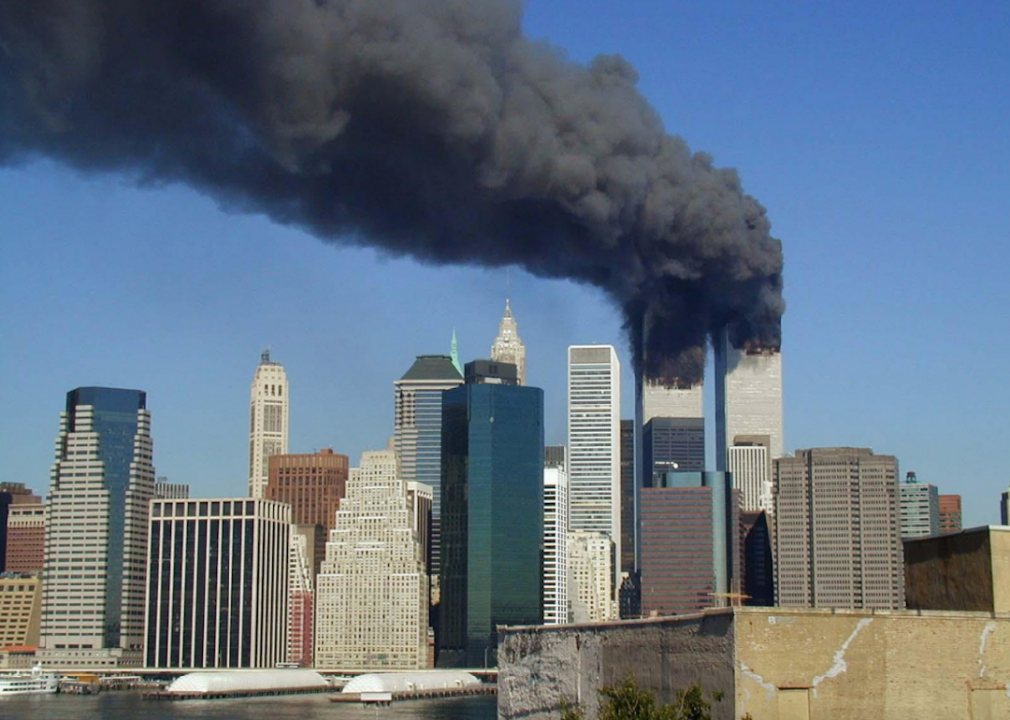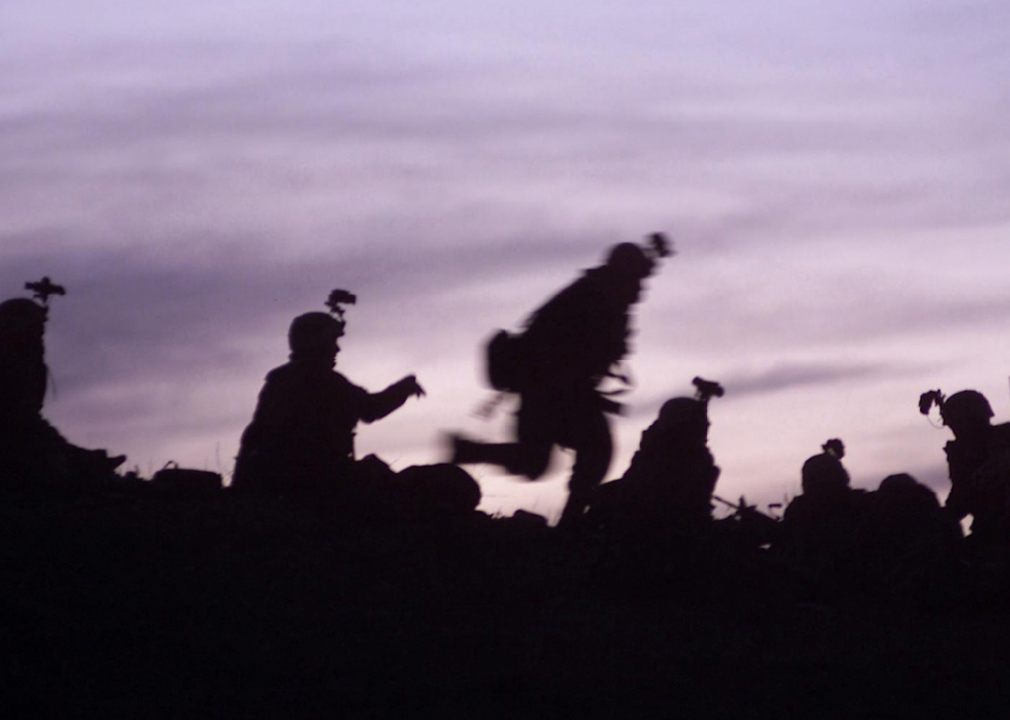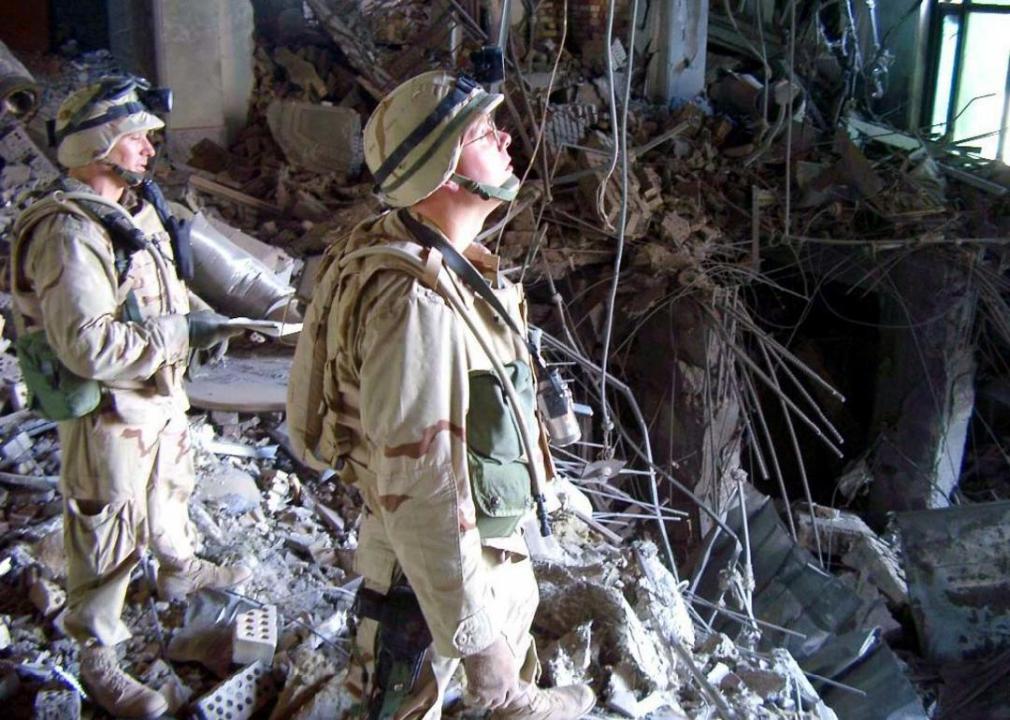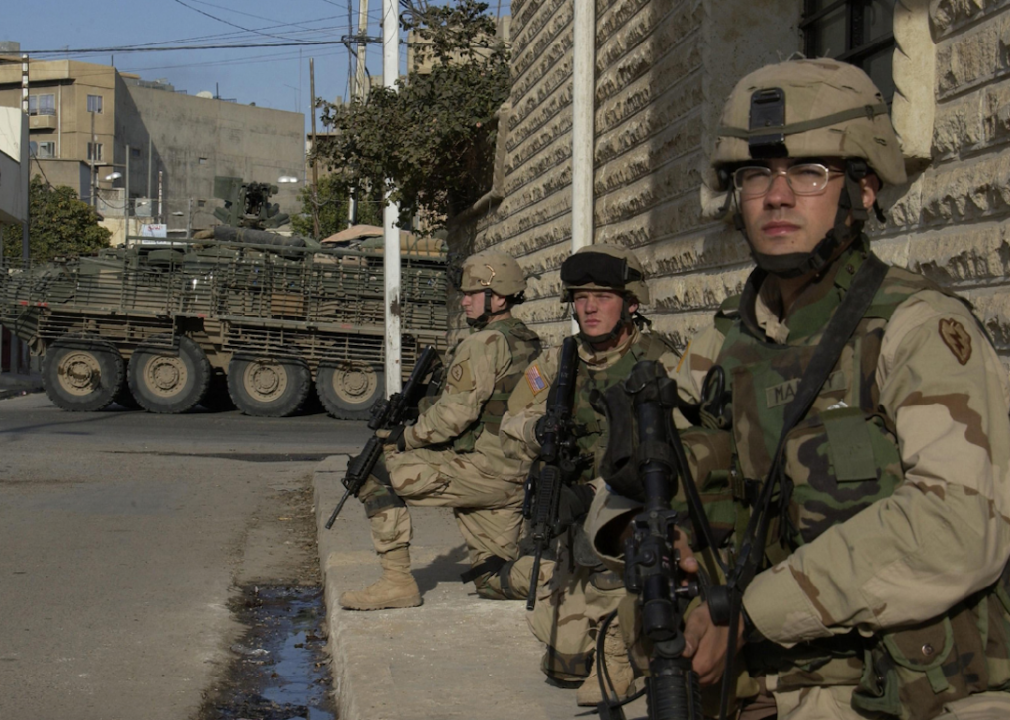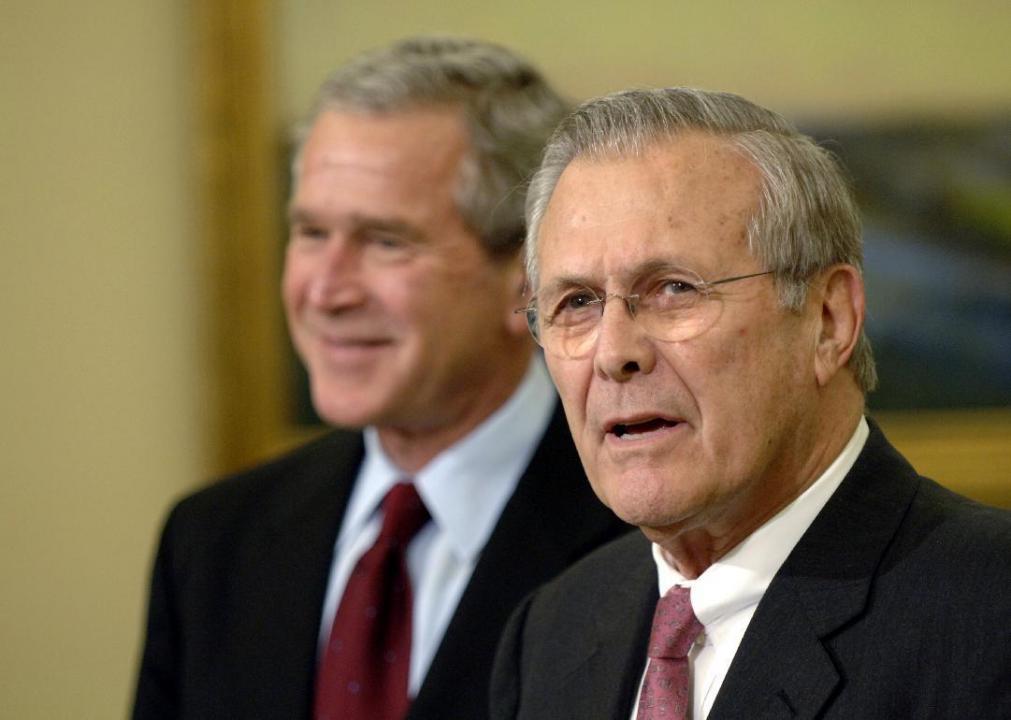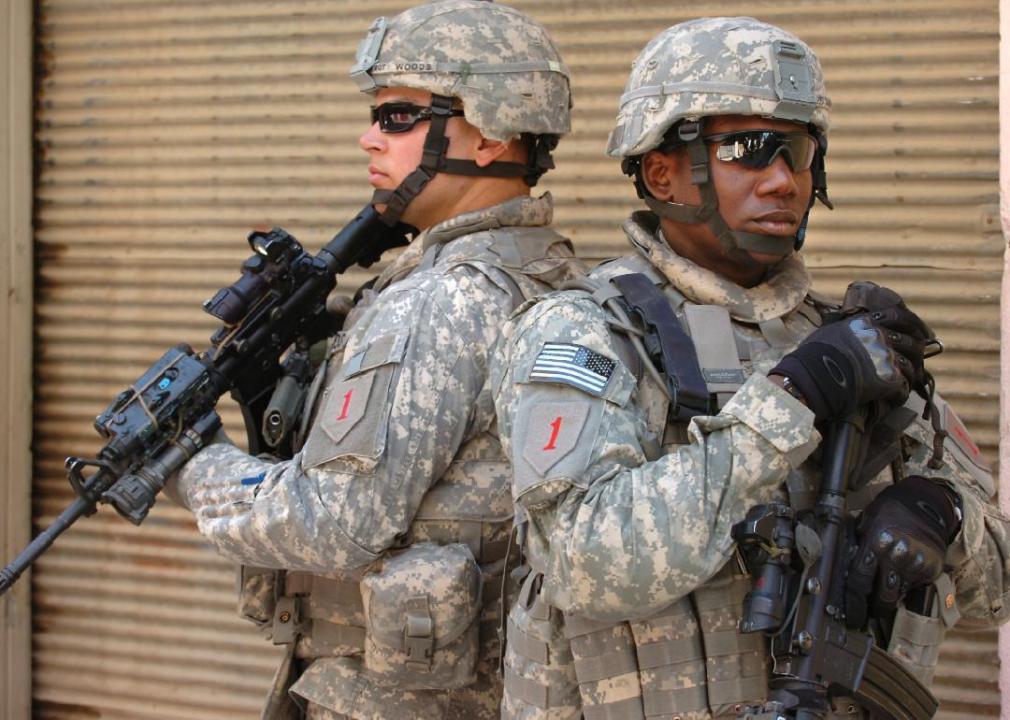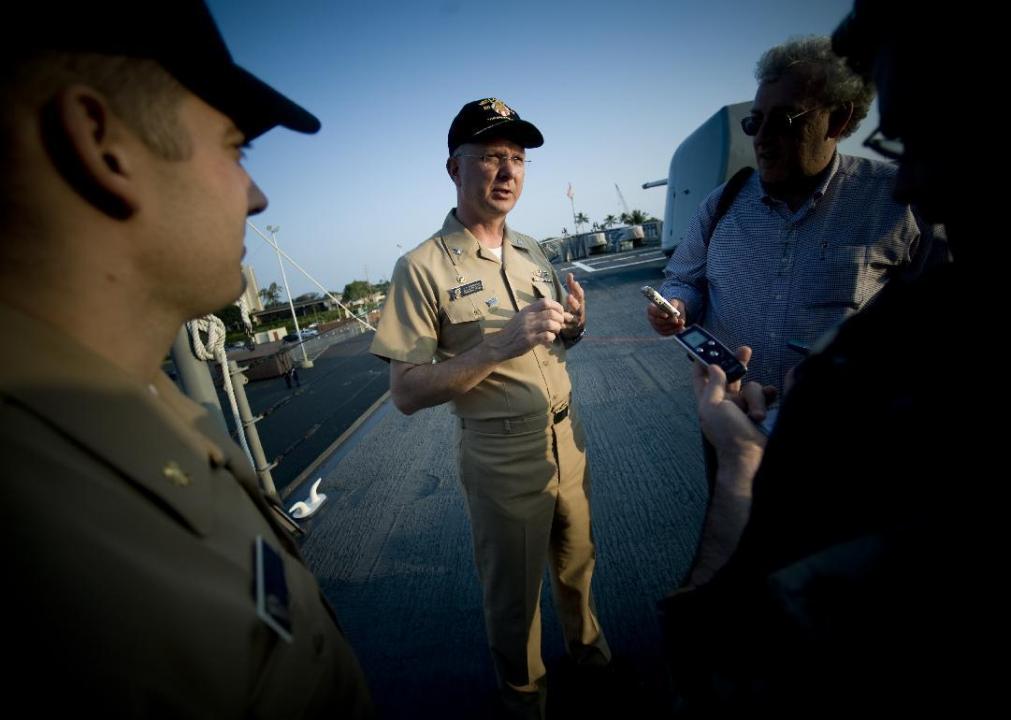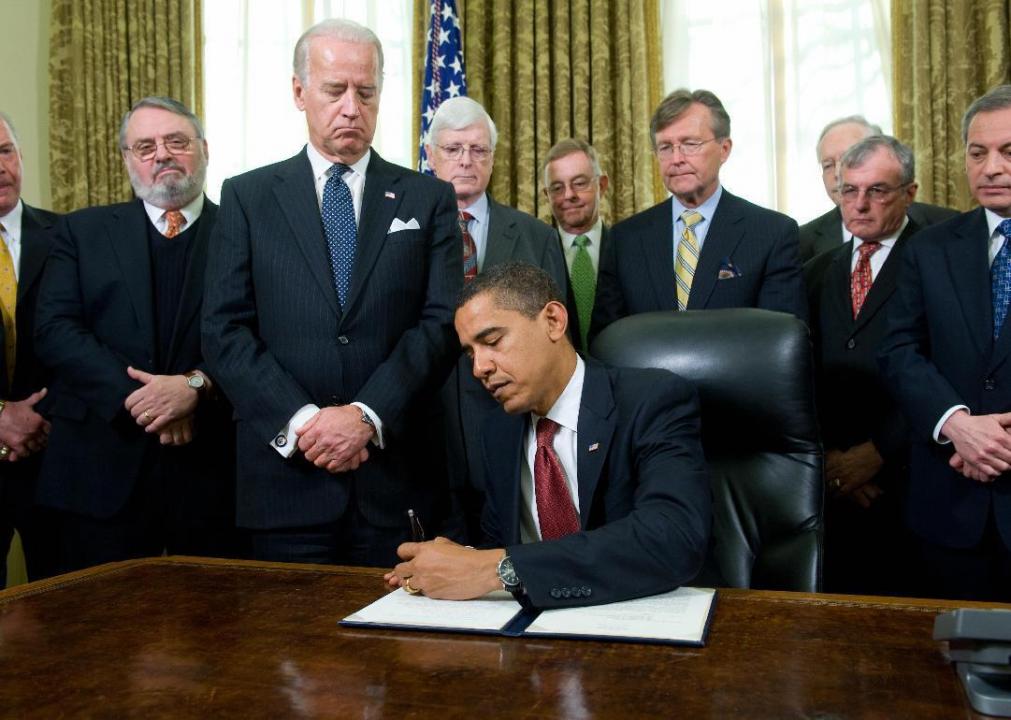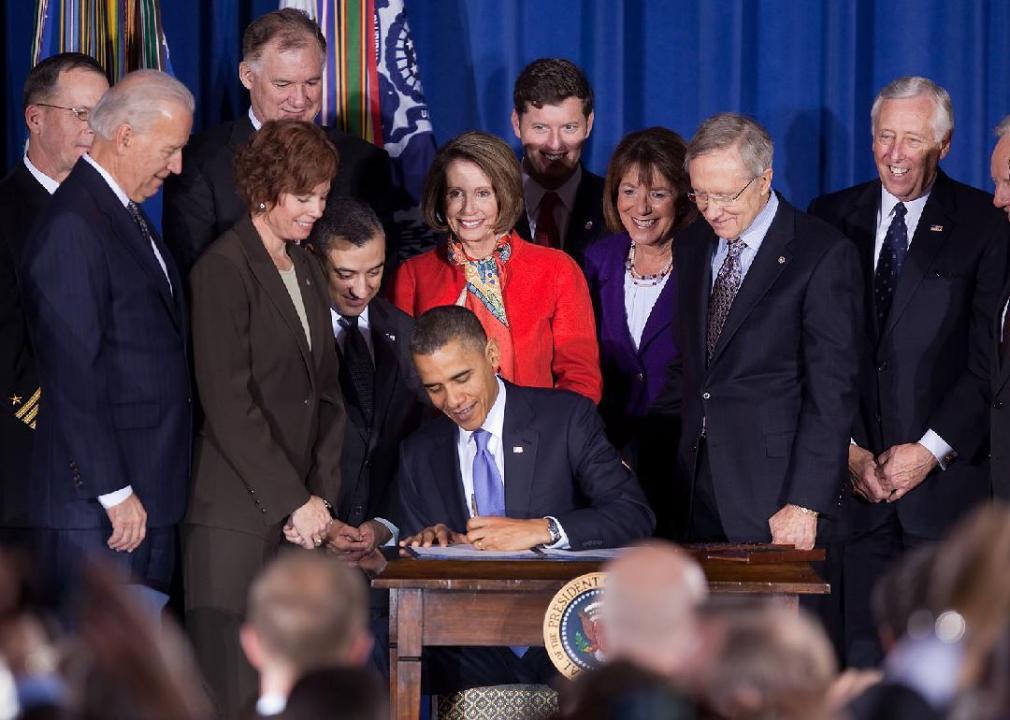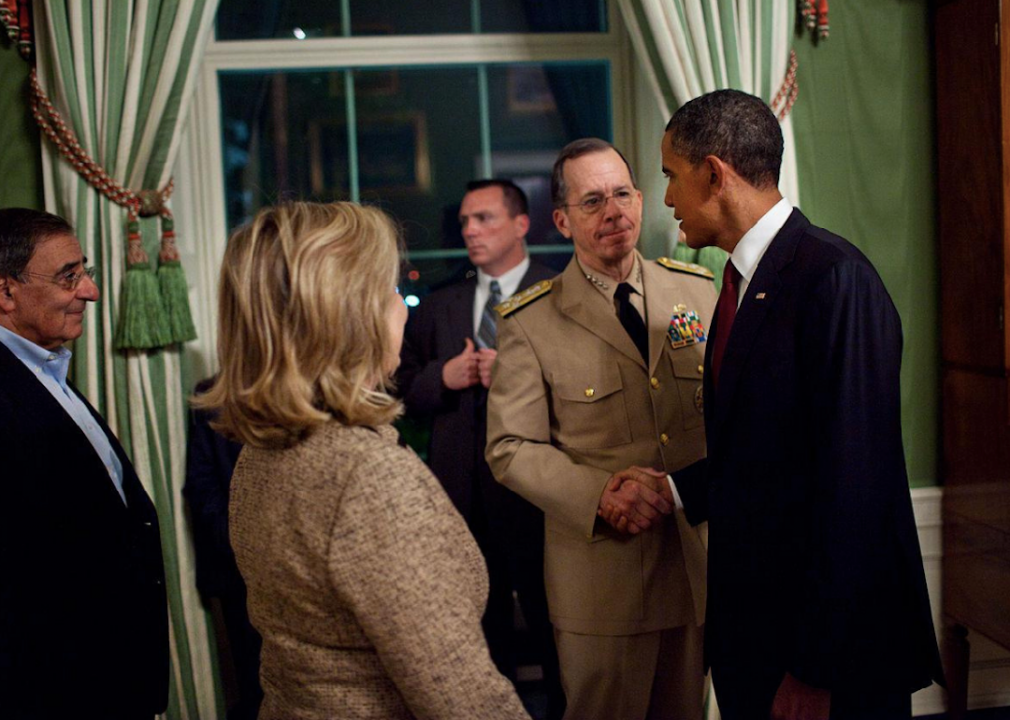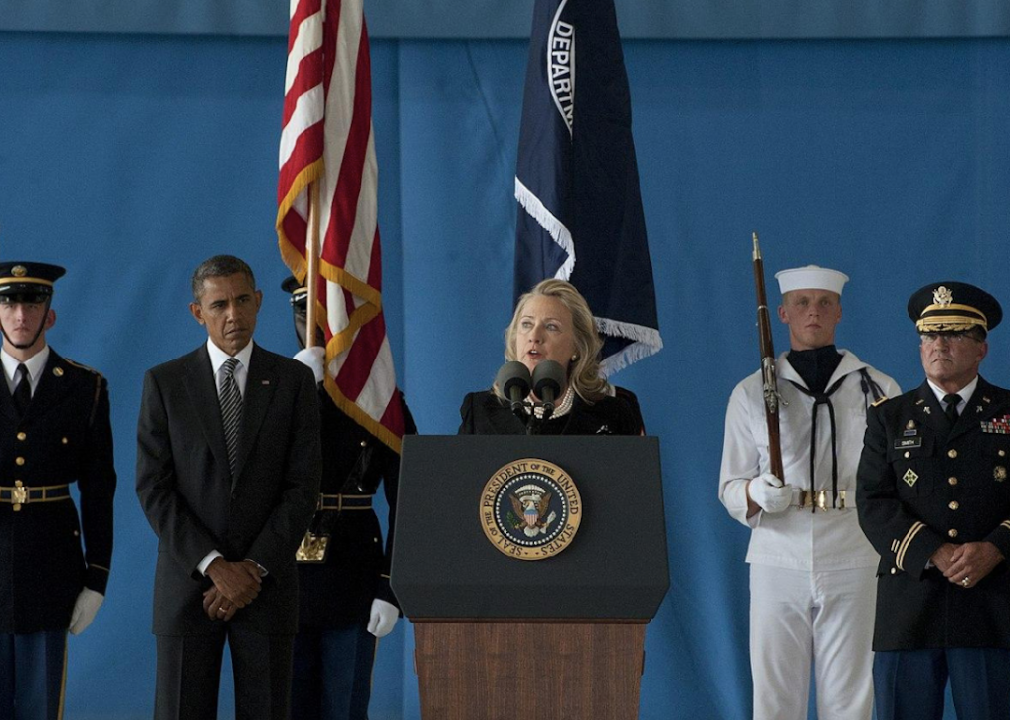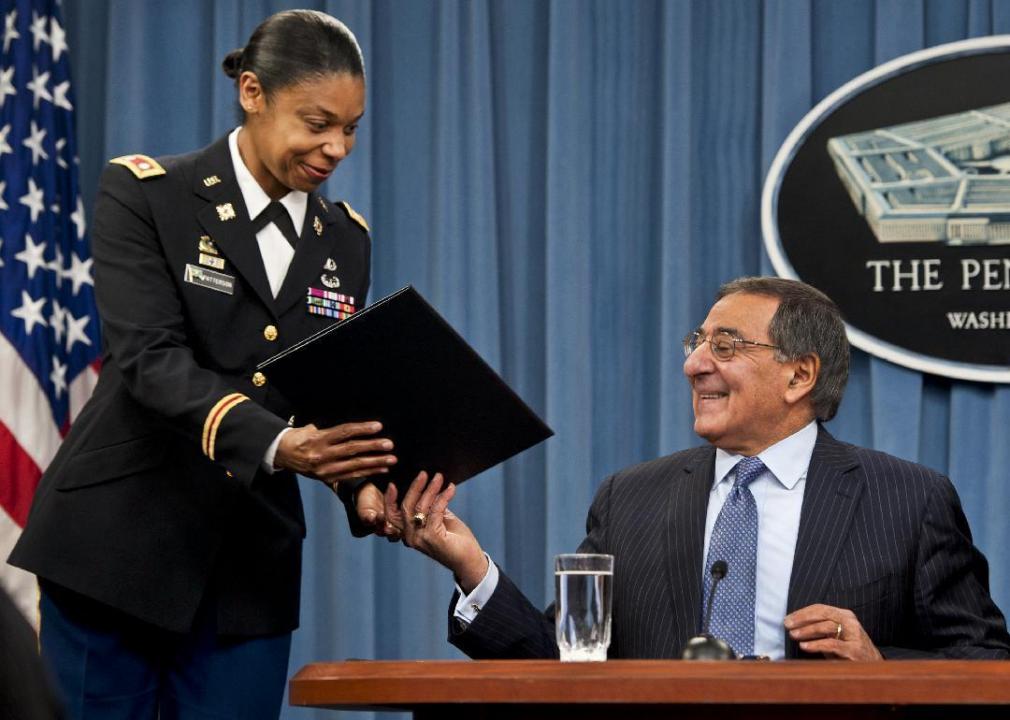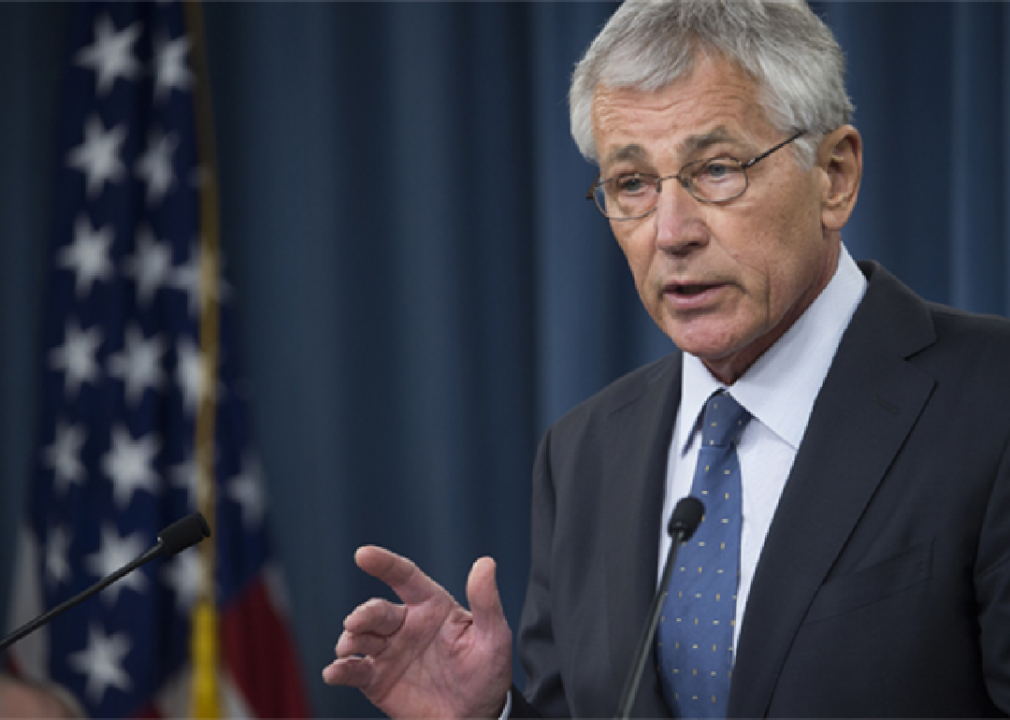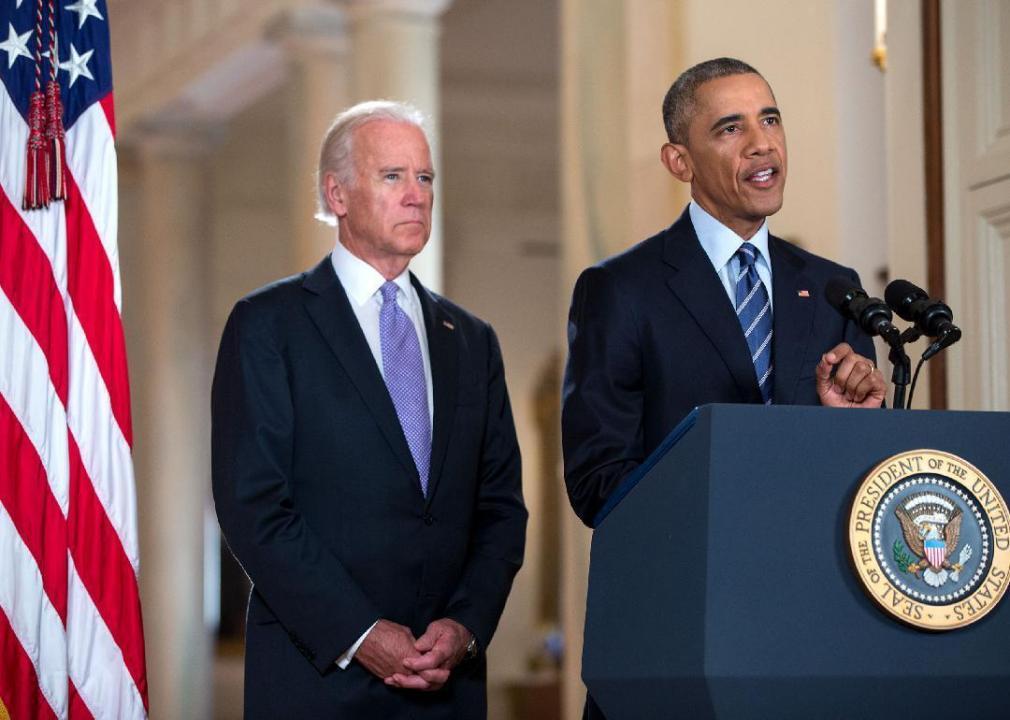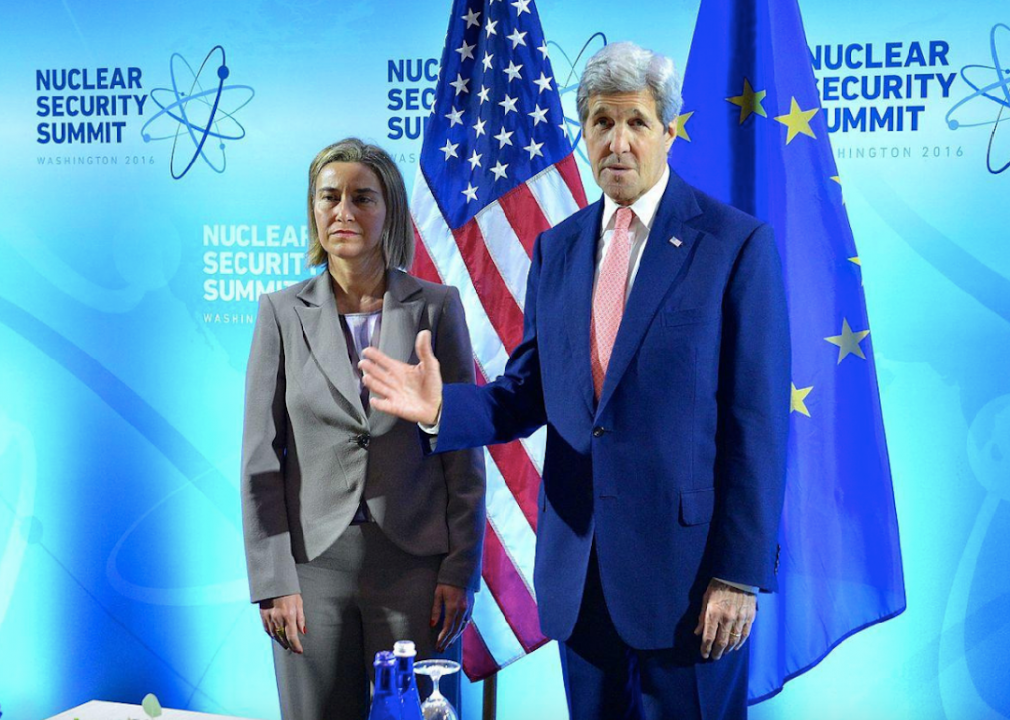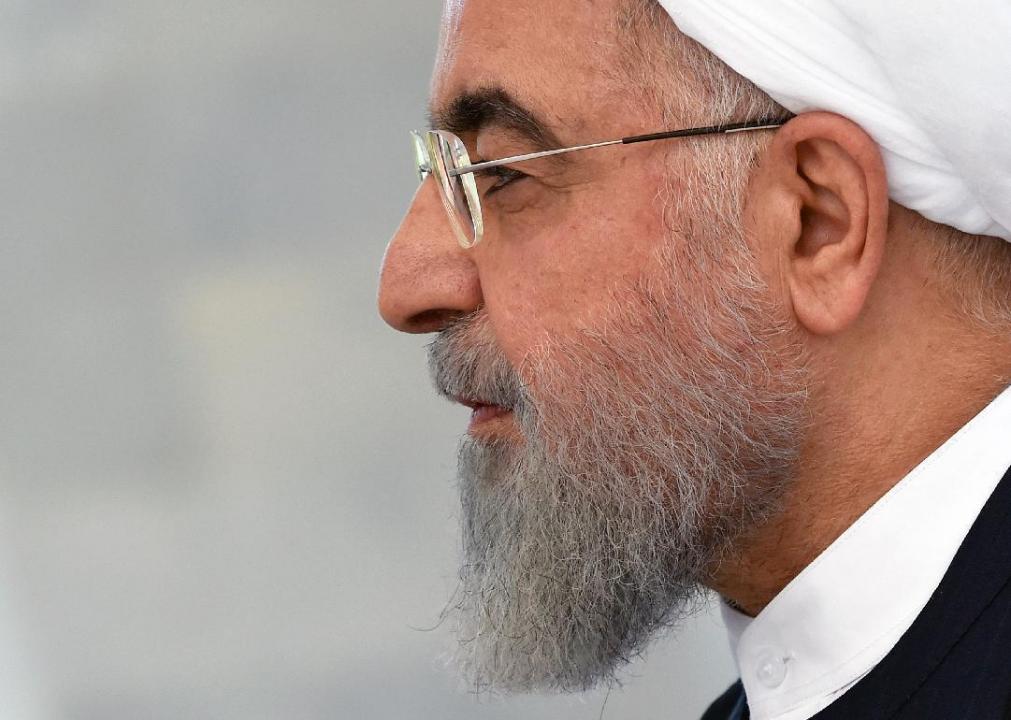105 years of military history
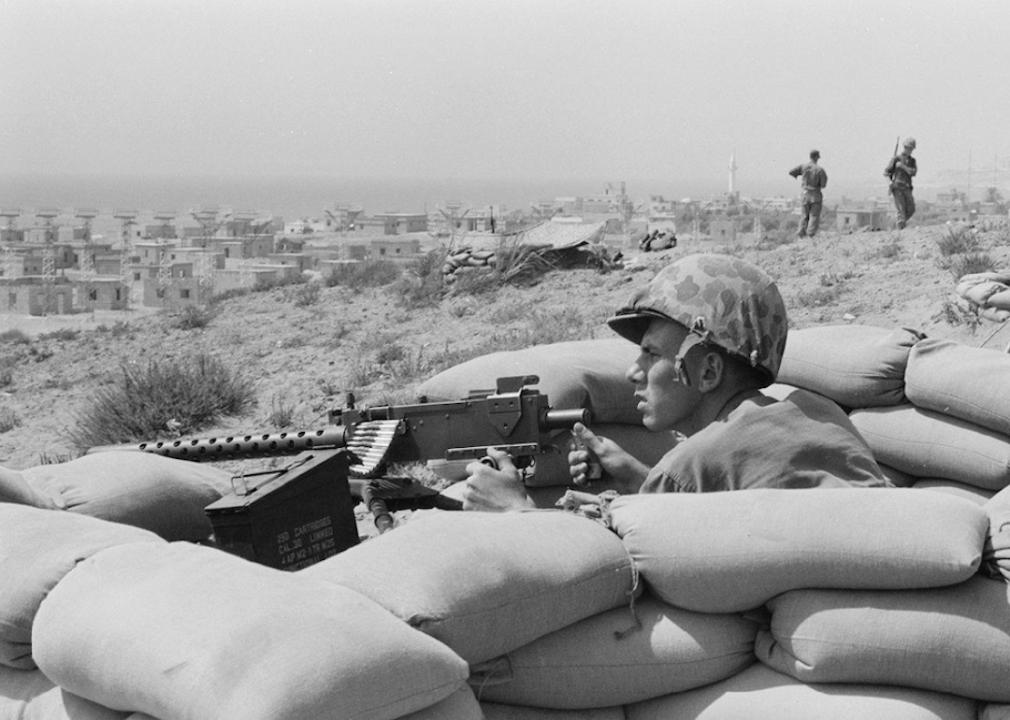
Thomas J. O’Halloran // Wikimedia Commons
105 years of military history
The world’s mightiest military came from humble beginnings. Long before the Revolutionary War, colonists followed the English militia system, which required that men between the ages of 16 and 60 defend their communities. Colonial militias recruited men from most walks of life—from shopkeepers and tutors to farmers and smiths. Left out of that recruitment were college enrollees, enslaved people, most free Black men, clergy—and in Virginia, Catholics. During their service, militiamen fought in operations against Native Americans and supplemented the British military in border skirmishes with neighboring European colonies.
The colonial militia’s first overseas foray is believed to have come in 1741 when 4,000 American reinforcements joined an attempted British invasion of Cartagena, Colombia, then a Spanish colony. Between militiamen falling ill, insufficient supplies, and the fighting itself, the invasion failed miserably: only about 600 Americans survived the expedition.
By the mid-1700s, tensions between residents of the North American colonies and the colonial government—an extension of the British crown—came to a head, ultimately leading to the start of the Revolutionary War. In 1775, the Second Continental Congress—a delegate-based governing body established by the colonies—passed a resolution establishing the Continental Army, the colonies’ first national, coordinated military force. The Continental Army, smaller militias, and France’s entry into the war on the colonists’ behalf led to victory over the British.
Over the last 105 years, U.S. troops have played major roles in two world wars, a wide variety of civil conflicts, and dozens of military campaigns. These efforts have significantly impacted how our government makes decisions that may affect domestic and foreign affairs. The military itself has undergone a few structural changes in that time as well, including adding new divisions, allowing women to serve in all branches, and permitting LGBTQ+ people to serve openly.
Stacker looked at information from the Defense Manpower Data Center, U.S. Census historical population tables, and the St. Louis Federal Reserve to see how the military has changed over the years. By comparing data sets, we determined the percentage of Americans enlisted in the military and the number of Americans in each military branch every year from 1918 through early 2022. While it is difficult to fully capture all events of years-long military conflicts like WWI, WWII, and Vietnam, this story details a selection of notable events for each year to help map the arc of major U.S. military engagements and developments.
[Pictured: Selected senior American commanders of the European theater of World War II.]
You may also like: 50 ways the military has changed in the last 50 years
![]()
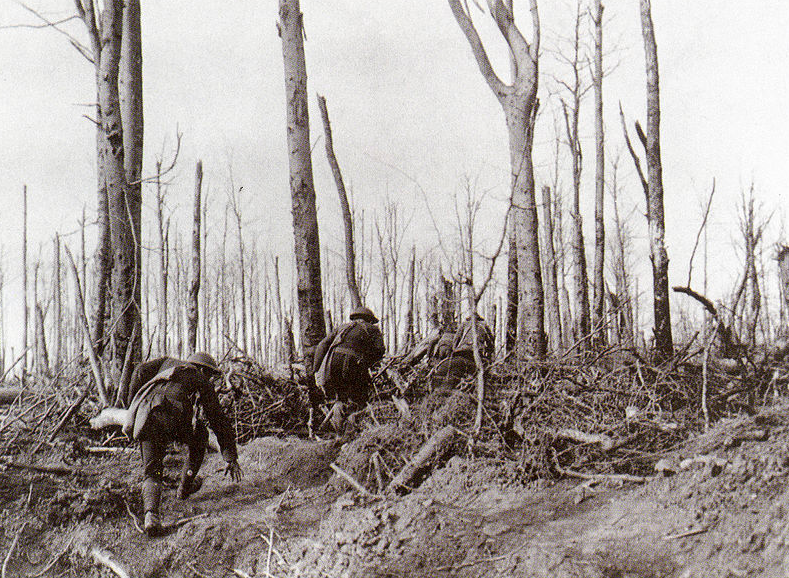
U.S. National Archives
1918: Meuse-Argonne Offensive
– Army strength: 2,395,742 people
– Navy strength: 448,606 people
– Marine Corps strength: 52,819 people
– Air Force strength: Not yet formed
– Total strength: 2,897,167 people
– Percent of population enlisted: 2.81%
In 1918, thousands of American troops joined the Allied forces at Archangel in response to the Bolshevik revolution in Russia. American soldiers engaged in several major battles that year as part of World War I, including the Meuse-Argonne Offensive from Sept. 26 through Nov. 11, which involved more than 1 million American soldiers (26,000 of whom died in battle). The offensive was the largest undertaken by the American Expeditionary Forces in World War I and helped to usher in the end of the war on Nov. 11, 1918.
[Pictured: U.S. Marines during the Meuse-Argonne Campaign.]
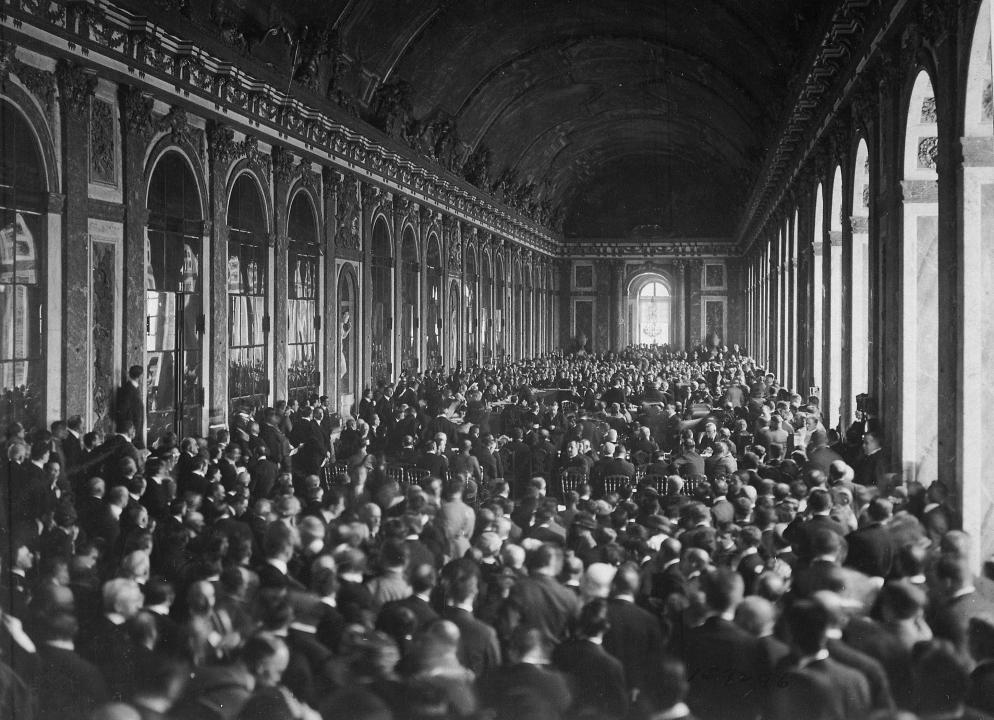
Public Domain
1919: Treaty of Versailles
– Army strength: 851,624 people
– Navy strength: 272,144 people
– Marine Corps strength: 48,834 people
– Air Force strength: Not yet formed
– Total strength: 1,172,602 people
– Percent of population enlisted: 1.12%
At the end of WWI, the Treaty of Versailles was signed on June 28, 1919, in the Palace of Versailles outside of Paris, France. The document, which established the terms for peace between Allied powers and Germany, required Germany to take responsibility for the war. It also forced Germany to redraw boundaries, give up territory, and pay reparations to Allied countries.
After signing the treaty on behalf of the United States and presenting his Fourteen Points that included the formation of the League of Nations, U.S. President Woodrow Wilson returned home only to find an obstinate Senate had voted against the treaty—twice.
[Pictured: The signing of the Treaty of Versailles on June 28, 1919.]
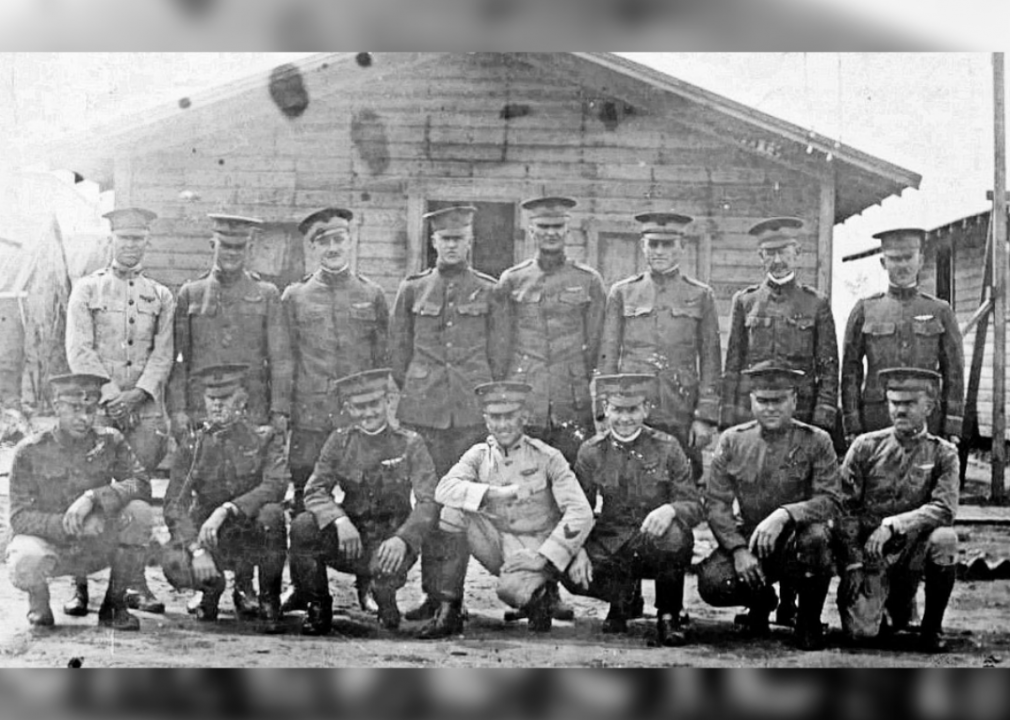
Public Domain
1920: National Defense Act amended
– Army strength: 204,292 people
– Navy strength: 121,845 people
– Marine Corps strength: 17,165 people
– Air Force strength: Not yet formed
– Total strength: 343,302 people
– Percent of population enlisted: 0.32%
In 1920, Congress passed an amendment to the National Defense Act, which called for the U.S. Army to have three main divisions: the standing Regular Army, National Guard, and Organized Reserves. It also allowed for the peacetime expansion of the Regular Army and the National Guard.
[Pictured: Officers of the 8th Surveillance Squadron, McAllen Field, Texas, 1920.]
United States Marine Corps // Wikimedia Commons
1921: The Unknown Soldier
– Army strength: 230,725 people
– Navy strength: 132,827 people
– Marine Corps strength: 22,990 people
– Air Force strength: Not yet formed
– Total strength: 386,542 people
– Percent of population enlisted: 0.36%
Congress approved the burial of an unidentified body from World War I on March 4, 1921, at Arlington National Cemetery. The Tomb of the Unknown Soldier commemorates the 116,516 American soldiers killed in World War I, many of whose bodies were never identified.
[Pictured: Unknown Soldier is laid to rest in Arlington National Cemetery on Nov. 11, 1921.]
Public Domain
1922: Washington Naval Treaty
– Army strength: 148,763 people
– Navy strength: 100,211 people
– Marine Corps strength: 21,233 people
– Air Force strength: Not yet formed
– Total strength: 270,207 people
– Percent of population enlisted: 0.25%
The Washington Naval Treaty was signed by the United States, United Kingdom, Japan, France, and Italy on Feb. 6, 1922. The document, also known as the Five-Power Treaty, was drafted to prevent an arms race following World War I.
[Pictured: American Legion Weekly highlighting the plight of unemployed American veterans in 1922.]
You may also like: Political Cartoons From The Last 100 Years
Public Domain
1923: Warlordism
– Army strength: 133,243 people
– Navy strength: 94,094 people
– Marine Corps strength: 19,694 people
– Air Force strength: Not yet formed
– Total strength: 247,031 people
– Percent of population enlisted: 0.22%
American soldiers spent part of 1923 in China, helping to control unrest that ensued amidst Warlordism—an era during which factions of the Beiyang Army vied for control of China. The Warlord Era ended in 1928.
[Pictured: Two Airco DH-4B biplanes perform the first ever mid-air refueling on June 27, 1923.]
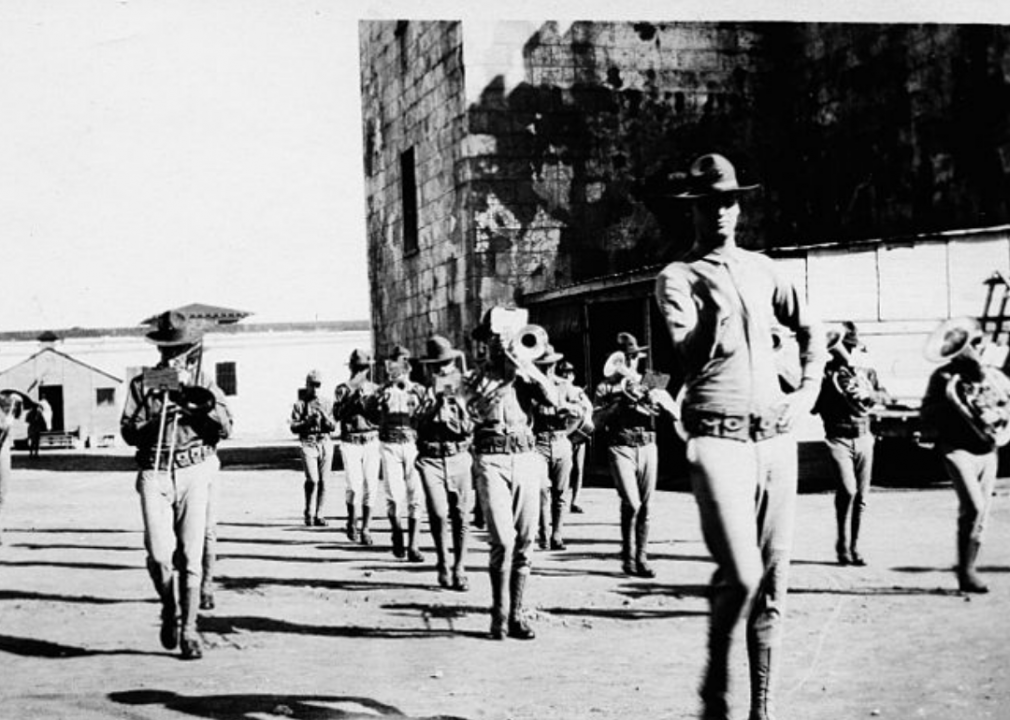
Richard // Wikimedia Commons
1924: First US occupation of Dominican Republic ends
– Army strength: 142,673 people
– Navy strength: 98,184 people
– Marine Corps strength: 20,332 people
– Air Force strength: Not yet formed
– Total strength: 261,189 people
– Percent of population enlisted: 0.23%
The U.S. Navy invaded the Dominican Republic in 1916, taking over the army, police, and several vital locations as Desiderio Arias, the Dominican Republic’s secretary of war, was forced out of Santo Domingo. The occupation lasted through 1924, when waning public support following World War I and significant opposition internationally inspired the U.S. to turn policing authority over to the Dominican Republic’s National Guard.
Domestically, the Immigration Act of 1924 allowed immigration visas for 2% of the number of people from each nationality in the U.S. as determined by the 1890 census. The act neglected to include visas for any immigrants from Asia, making it illegal for people of Asian descent to cross the U.S. shoreline.
[Pictured: First Regiment Band, U.S. Marine Corps, Santo Domingo, Dominican Republic.]
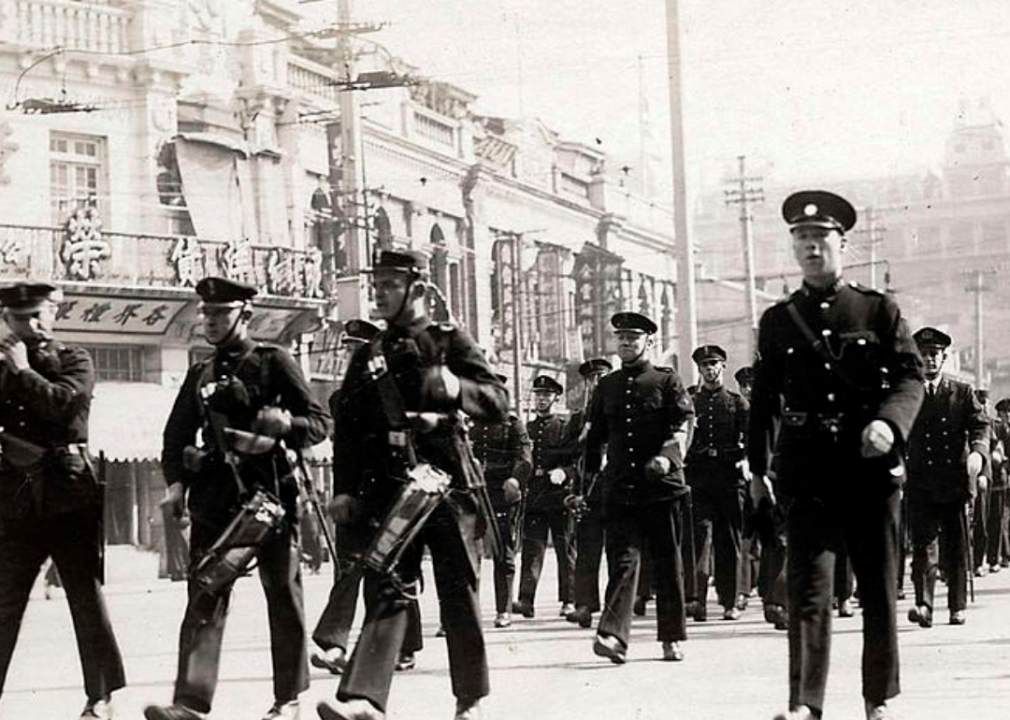
Public Domain
1925: Riots in Shanghai
– Army strength: 137,048 people
– Navy strength: 95,230 people
– Marine Corps strength: 19,478 people
– Air Force strength: Not yet formed
– Total strength: 251,756 people
– Percent of population enlisted: 0.22%
In the spring of 1925, tensions over labor practices and resentment toward the presence of foreigners erupted into riots. American troops were brought in to protect the public—and the terms of the Shanghai International Settlement—during one of the most pivotal moments in Chinese history.
[Pictured: Arrival of Dutch marines from the SS Sumatra in Shanghai.]
The U.S. National Archives // Flickr
1926: US quashes Nicaraguan coup d’état
– Army strength: 134,938 people
– Navy strength: 93,304 people
– Marine Corps strength: 19,154 people
– Air Force strength: Not yet formed
– Total strength: 247,396 people
– Percent of population enlisted: 0.21%
The Banana Wars, a period during which the U.S. engaged in various military interventions and occupations to advance their economic interests and influence in Central America and the Caribbean, began after the Spanish-American war and lasted until 1934.
Between 1912-1933, the U.S. military occupied Nicaragua specifically to protect American business interests—soldiers kept unrest at a minimum on plantations the U.S. had a stake in and quelled uprisings— and to thwart any other would-be occupiers from constructing the Nicaraguan Canal.
In 1925, the election of conservative President Carlos Solorzano helped form a coalition government. Thirteen years into their occupation, the U.S. Marines left Nicaragua. But by October of that year, Nicaraguan Gen. Emiliano Chamorro Vargas staged a successful coup d’état against Solorzano. Vargas became president, but the U.S. did not recognize his rule; after a liberal revolt in January 1926, the U.S. military sent troops back into the country and forced Vargas’ resignation.
[Pictured: Harry Truman talking to an unidentified soldier at Fort Riley, Kansas, July 1926.]
Public Domain
1927: ‘China Marines’ in Shanghai
– Army strength: 134,829 people
– Navy strength: 94,916 people
– Marine Corps strength: 19,198 people
– Air Force strength: Not yet formed
– Total strength: 248,943 people
– Percent of population enlisted: 0.21%
The 4th Regiment of the U.S. Marine Corps was sent to China in January 1927 to protect American citizens—and U.S. business interests—there in the midst of Shanghai’s ongoing civil unrest. Called the “China Marines,” these members of the military would remain in Shanghai through 1941. On April 12, 1927, 5,000 people from Generalissimo Chiang Kai-shek’s military forces and the Kuomintang (Chinese Nationalist Party) staged a violent squashing of the Communist Party of China known as the Shanghai Massacre, or the April 12 Purge. Hundreds of Communists were captured, tortured, or executed, and the action sparked years of anti-communist violence coined the “White Terror.”
[Pictured: U.S. President Calvin Coolidge in 1927.]
You may also like: The original Woodstock, by the numbers
Public Domain
1928: Lt. Schilt receives Medal of Honor
– Army strength: 136,084 people
– Navy strength: 95,803 people
– Marine Corps strength: 19,020 people
– Air Force strength: Not yet formed
– Total strength: 250,907 people
– Percent of population enlisted: 0.21%
Between Jan. 6 and 8, 1928, First Lt. Christian F. Schilt took it upon himself to make 10 trips in his Vought O2U Corsair aircraft into Quilali, Nicaragua, to evacuate 18 U.S. Marines who had been injured in the conflict there. According to the U.S. Marine Corps, these takeoffs were accomplished amid burning villages and extensive enemy fire; however, Schilt still completed his mission, saved three lives and delivered necessary provisions in the process, and in June of 1928, was awarded the Medal of Honor.
[Pictured: U.S. President Calvin Coolidge in 1928.]
Public Domain
1929: Cayes Massacre
– Army strength: 139,118 people
– Navy strength: 97,117 people
– Marine Corps strength: 18,796 people
– Air Force strength: Not yet formed
– Total strength: 255,031 people
– Percent of population enlisted: 0.21%
The U.S. occupation of Haiti began in 1915 as a means of keeping the country from German occupation that could disrupt passage through the Panama Canal. By 1929, there was deep resentment against Americans for their roles in censoring the press, collecting customs duties, controlling the distribution of essentials like food and medicine, and forcing a new constitution upon the Haitians. Uprisings were commonplace.
On Dec. 6, 1929, U.S. Marine battalions in Les Cayes opened fire on 1,500 protestors who were part of a national strike and area rebellion. Twelve Haitians were killed and 23 wounded in the massacre. Worldwide backlash from this violence helped bring an end to U.S. occupation there.
[Pictured: Wendell Neville and Smedley Butler Review Marines, Oct. 31, 1929.]
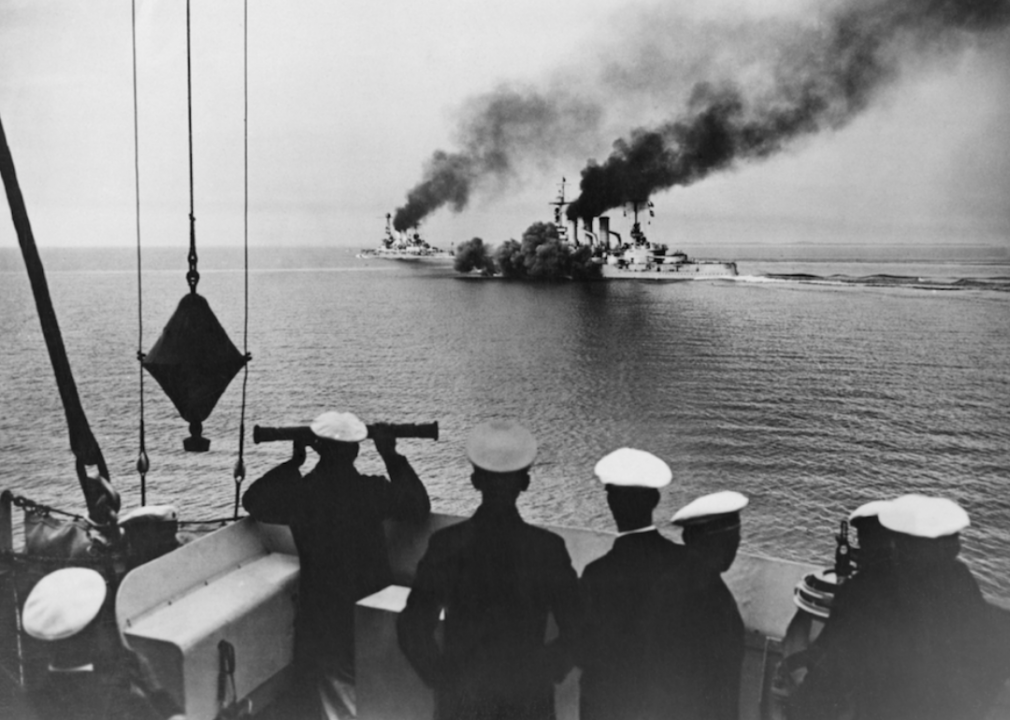
Hulton Archive // Getty Images
1930: London Naval Treaty
– Army strength: 139,378 people
– Navy strength: 96,890 people
– Marine Corps strength: 19,380 people
– Air Force strength: Not yet formed
– Total strength: 255,648 people
– Percent of population enlisted: 0.21%
France, Italy, the United Kingdom, Japan, and the U.S. signed the Treaty for the Limitation and Reduction of Naval Armament (commonly referred to as the London Naval Treaty) on April 22, 1930, to regulate submarine warfare and limit the building of naval ships. The treaty’s terms were put in place to avert a naval arms race following WWI and to build upon the Five Powers Treaty of 1922.
[Pictured: German naval personnel watching the battleship SMS Hessen, September 1930.]
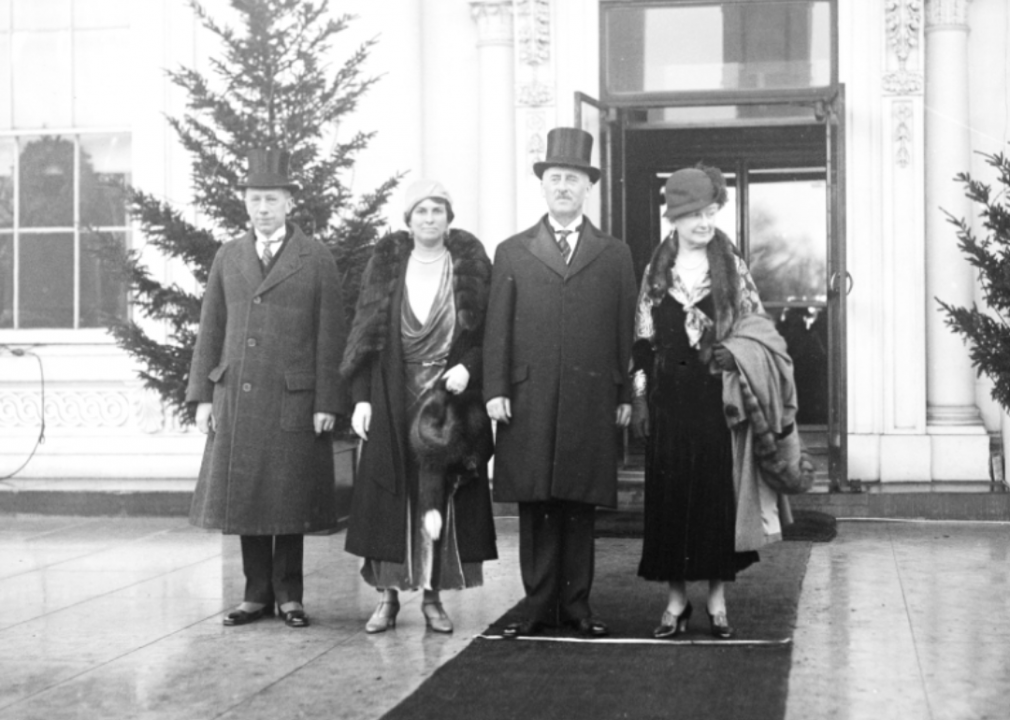
Library of Congress
1931: Japan violates League of Nations
– Army strength: 140,516 people
– Navy strength: 93,307 people
– Marine Corps strength: 16,782 people
– Air Force strength: Not yet formed
– Total strength: 250,605 people
– Percent of population enlisted: 0.20%
The Great Depression’s effects continued to spread throughout the world in 1931, increasing tensions at home and abroad. It would be years before the onset of WWII; however, a hint of the ensuing international conflict arose when Japanese forces captured Manchuria in violation of the League of Nations in September 1931. The invasion put U.S. Secretary of State Henry L. Stimson in the position of determining a way to thwart the conflict. He issued the Stimson Doctrine in January 1932, which said the U.S. would not honor agreements or treaties between Japan and China that were in violation of existing U.S. rights or agreements.
[Pictured: Henry Stimson (second from right) at the White House, Washington D.C.]
U.S. National Archives // Flickr
1932: Military collides with Bonus Marchers
– Army strength: 134,957 people
– Navy strength: 93,384 people
– Marine Corps strength: 16,561 people
– Air Force strength: Not yet formed
– Total strength: 244,902 people
– Percent of population enlisted: 0.20%
In the summer of 1932, Congress denied military veterans an immediate bonus payment for participation in WWI. “Bonus Marchers” numbering more than 20,000 convened in Washington after this decision, demonstrating their discontent. President Herbert Hoover called on the Army to squash the protests. Hundreds of police officers and troops entered the marchers’ camps, sparking a conflict that left two protesting veterans dead and caused a massive outcry among the American public.
[Pictured: The Bonus Army fights with D.C. police.]
You may also like: U.S. cities with the cleanest air
NPS Photo
1933: Civilian Conservation Corps
– Army strength: 136,547 people
– Navy strength: 91,230 people
– Marine Corps strength: 16,068 people
– Air Force strength: Not yet formed
– Total strength: 243,845 people
– Percent of population enlisted: 0.19%
A little over three years after the initial stock market crash, the unemployment rate in the U.S. stood at 24.9%, with almost 15 million U.S. citizens jobless. In response, President Franklin D. Roosevelt started the Civilian Conservation Corps (CCC) as part of his New Deal program. The CCC included existing government departments, including the Army, and administered voluntary camps that provided more than 3 million men with manual labor jobs, mainly in natural resource conservation. Many Army officers benefitted from overseeing the camps, not otherwise having the opportunity to supervise large groups of personnel in the period between the world wars.
Meanwhile, in 1933, Adolf Hitler rose to power in Germany.
[Pictured: Members of the Civilian Conservation Corps in the Pacific Northwest.]
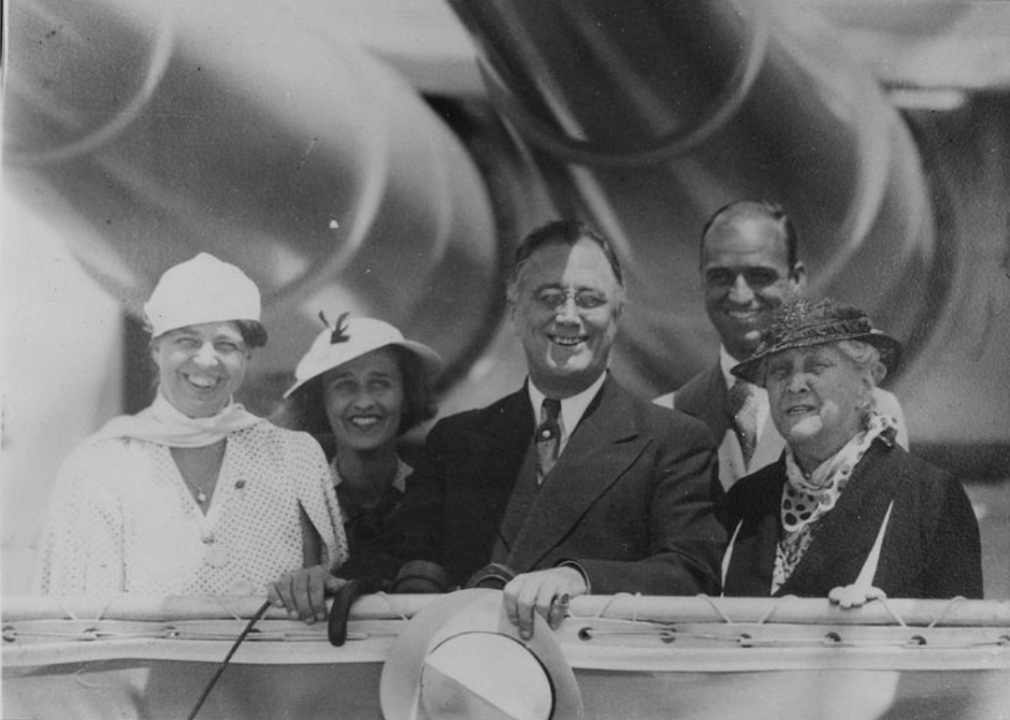
U.S. National Archives
1934: US occupation ends in Haiti
– Army strength: 138,464 people
– Navy strength: 92,312 people
– Marine Corps strength: 16,361 people
– Air Force strength: Not yet formed
– Total strength: 247,137 people
– Percent of population enlisted: 0.20%
After President Franklin D. Roosevelt established an agreement to disengage from Haiti in 1933, the U.S. occupation of the country officially drew to a close on Aug. 1, 1934. This followed FDR’s “Good Neighbor” policy, which instructed the U.S. not to interfere in Latin American domestic affairs; however, the U.S. did not relinquish its hand in Haitian finances until 1947.
[Pictured: U.S. President Franklin Delano Roosevelt in 1934.]
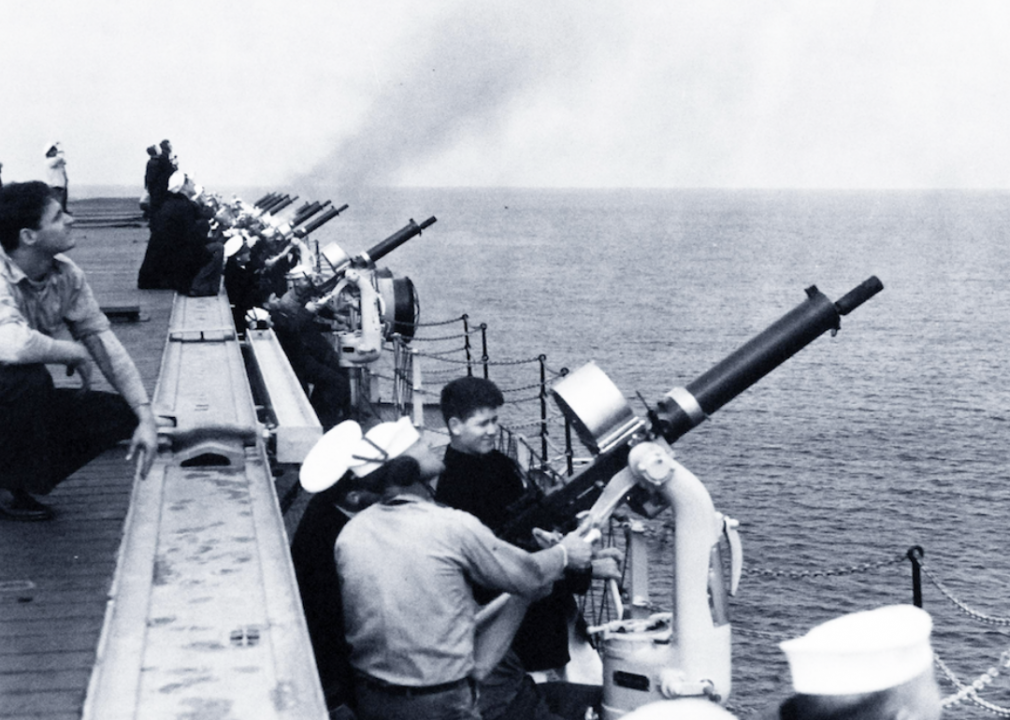
History.navy.mil
1935: GHQ Air Force and B-17
– Army strength: 139,486 people
– Navy strength: 95,053 people
– Marine Corps strength: 17,260 people
– Air Force strength: Not yet formed
– Total strength: 251,799 people
– Percent of population enlisted: 0.20%
Buoyed by advances in aviation and the use of planes in World War I, more than a dozen commissions and boards grappled with how to move military aviation forward in a way that could be separate from general support aviation by the Army. The Baker Board of 1934 proposed a peacetime air force, established in 1935 as the General Headquarters (GHQ) Air Force and based at Langley Field, Virginia. The GHQ Air Force would function as a centralized unit for long-distance strikes. 1935 also marks the unveiling of the Model 299, a long-range, four-engine heavy bomber that would transform air battles. It was eventually coined the “B-17 Flying Fortress.”
[Pictured: Machine-gun crew aboard the USS Ranger, Oct. 8, 1935.]
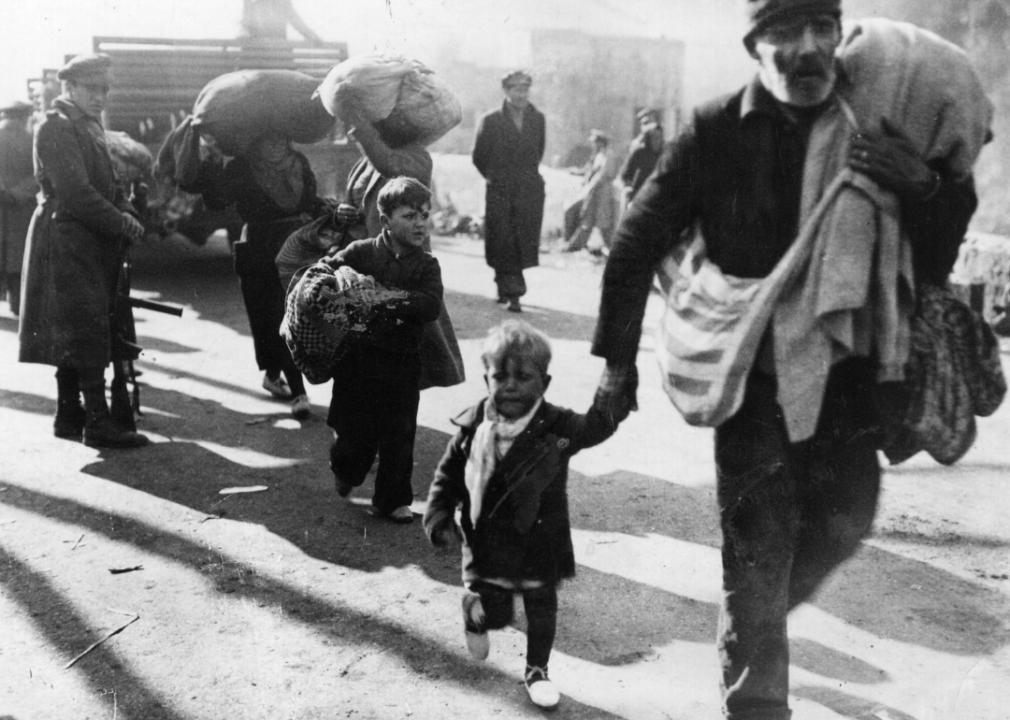
Three Lions // Getty Images
1936: Abraham Lincoln Brigade
– Army strength: 167,816 people
– Navy strength: 106,292 people
– Marine Corps strength: 17,248 people
– Air Force strength: Not yet formed
– Total strength: 291,356 people
– Percent of population enlisted: 0.23%
International governments looked upon the Spanish Civil War with trepidation, worried that escalation could lead to a larger-scale world war. To prevent higher stakes, a number of Western governments including the United States signed a non-intervention treaty. That didn’t stop roughly 35,000 volunteers from 50 countries—including 2,800 U.S. volunteers—from traveling to Spain in 1936 to fight for the Spanish Republic against a fascist uprising aided by Hitler and Mussolini. American volunteers named their units the John Brown Battery, Abraham Lincoln Battalion, and George Washington Battalion. These units, along with volunteers from Britain, Canada, and several other countries, formed the Fifteenth Unit Brigade, known colloquially as the Abraham Lincoln Brigade.
[Pictured: Refugees from the Spanish Civil War cross into France.]

The National Guard
1937: Protective Mobilization Plan
– Army strength: 179,968 people
– Navy strength: 113,617 people
– Marine Corps strength: 18,223 people
– Air Force strength: Not yet formed
– Total strength: 311,808 people
– Percent of population enlisted: 0.24%
As the U.S. began concentrating its economic power on mobile war operations, the government enacted the Protective Mobilization Plan, which inducted the National Guard into federal service. This gave the Army a protective force of 400,000 troops, which could protect the nation while the Army focused on expansion and training. These plans were the foundation for the mobilization of troops in the summer of 1940, not long before the U.S. entered WWII.
[Pictured: Soldiers from the 118th Infantry Regiment, 30th Infantry Division, South Carolina National Guard.]
You may also like: 25 terms you should know to understand the climate change conversation
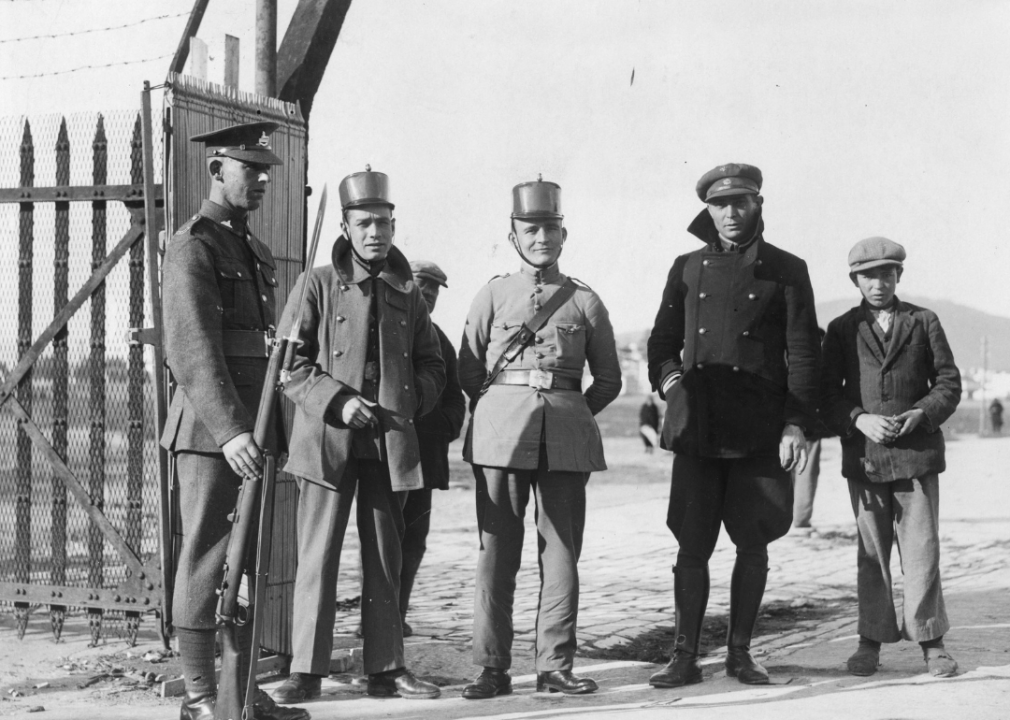
Norman Smith/Fox Photos // Getty Images
1938: Munich Agreement inspires US defense strategy
– Army strength: 185,488 people
– Navy strength: 119,088 people
– Marine Corps strength: 18,356 people
– Air Force strength: Not yet formed
– Total strength: 322,932 people
– Percent of population enlisted: 0.25%
The 1938 Munich Agreement (also called the “Munich Betrayal”) was a settlement between Italy, Germany, and France allowing Germany to annex the Sudetenland in western Czechoslovakia, just four months after it became public knowledge that Hitler intended to occupy the entire country. The pact prevented all-out war but ceded a significant part of Czechoslovakia to German rule. As the American military watched things unfold overseas and noted the advances worldwide in war technology and artillery reach, it adjusted its defense strategy to focus on protecting the Western Hemisphere from enemy fire and hostile air bases in what has been coined the “hemisphere defense.”
[Pictured: A British army sentry on duty beside Spanish gendarmes during the Spanish Civil War.]
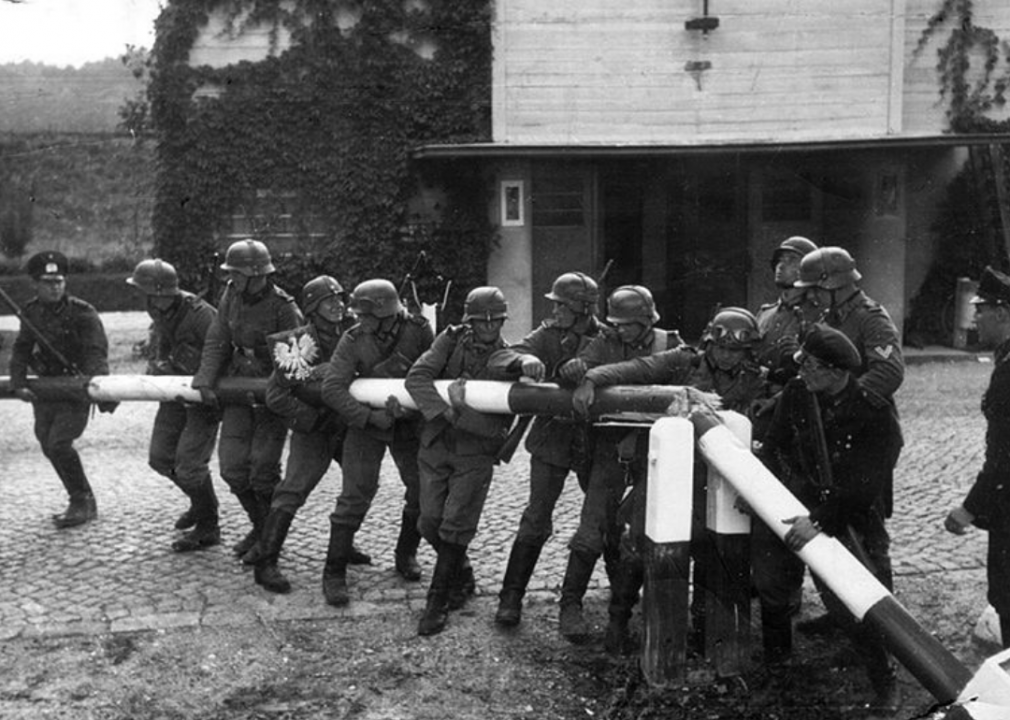
Hans Sönnke // Wikimedia Commons
1939: World War II officially begins
– Army strength: 189,839 people
– Navy strength: 125,202 people
– Marine Corps strength: 19,432 people
– Air Force strength: Not yet formed
– Total strength: 334,473 people
– Percent of population enlisted: 0.26%
World War II officially began with Germany’s invasion of Poland, followed two days later by the U.K. and France declaring war on Germany. Although the U.S. remained neutral until 1941, the military was still training and planning for mobilization. In 1939, FDR proposed the Cash and Carry policy, which replaced the 1935 Neutrality Act and allowed the sale of military technology and materials to nations at war.
[Pictured: German soldiers at the border of Poland in 1939.]
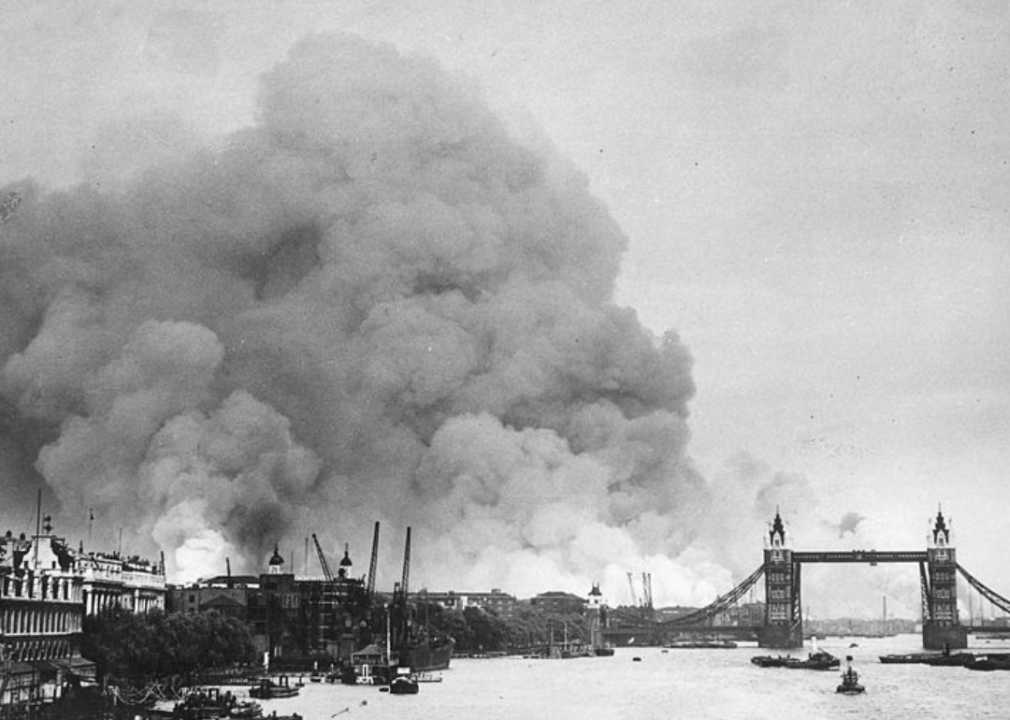
National Archives
1940: US prepares for war
– Army strength: 269,023 people
– Navy strength: 160,997 people
– Marine Corps strength: 28,345 people
– Air Force strength: Not yet formed
– Total strength: 458,365 people
– Percent of population enlisted: 0.35%
American involvement in WWII was limited in the beginning: The military initially only contributed materials and financial support to Great Britain, the Republic of China, and the Soviet Union; however, expecting eventual involvement, the U.S. also began to strengthen its own military forces. From June 1940 through December 1941, $36 billion was allocated to the War Department (more than was spent on all of World War I); $8 billion was allocated to the Army alone. Meanwhile, the munitions program was preparing weaponry to sustain a military force of more than 1 million people.
[Pictured: Smoke rising from the London docks after an air raid during the Blitz, 1940.]
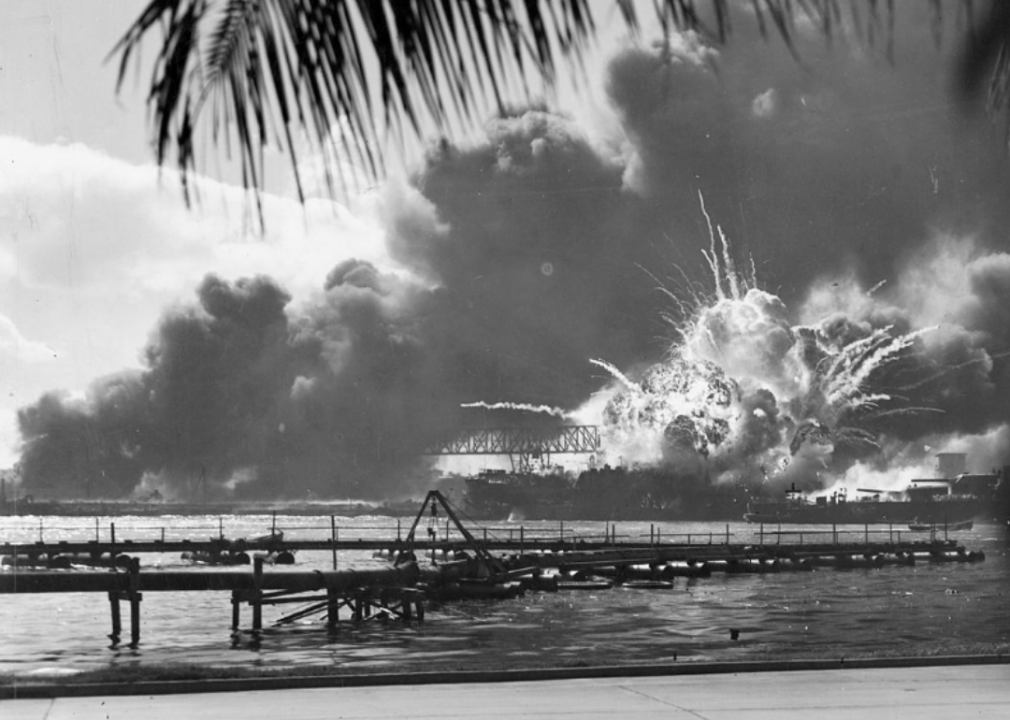
U.S. Archives
1941: US enters WWII
– Army strength: 1,462,315 people
– Navy strength: 284,427 people
– Marine Corps strength: 54,359 people
– Air Force strength: Not yet formed
– Total strength: 1,801,101 people
– Percent of population enlisted: 1.35%
The U.S. declared war on Japan on Dec. 8, 1941, following the Japanese bombing of Pearl Harbor. Japan’s attack lasted just over an hour but inflicted heavy damage on the U.S. Pacific fleet, killing 2,403 people (68 of whom were civilians), disabling 112 watercraft and 164 aircraft, and sinking six battleships. The USS Arizona—and the crew members that sunk with the ship—remains on the ocean floor of Pearl Harbor. Three days after declaring war on Japan, the U.S. declared war on Germany and Italy.
[Pictured: USS Shaw exploding at Pearl Harbor, Dec. 7, 1941.]
Public Domain
1942: War with Bulgaria, Hungary, and Romania
– Army strength: 3,075,608 people
– Navy strength: 640,570 people
– Marine Corps strength: 142,613 people
– Air Force strength: Not yet formed
– Total strength: 3,858,791 people
– Percent of population enlisted: 2.86%
The U.S. officially declared war on Bulgaria, Hungary, and Romania on June 5, 1942. The American government spent colossal amounts of money on the effort and assumed a wartime economy. American businesses, farmers, and factory workers all contributed. Toward the end of the year, it was mandatory for all men between the ages of 18 and 64 to register for the draft, though many volunteered without being called. U.S. troops inflicted critical damage on a Japanese naval fleet in the Battle of Midway in June 1942. With involvement in World War II escalating, rationing of foods such as sugar, meat, and coffee began.
[Pictured: A ship is destroyed in the battle Midway in June of 1942.]
You may also like: Most lopsided state legislatures in America
Public Domain
1943: Eisenhower chosen to lead Allies
– Army strength: 6,994,472 people
– Navy strength: 1,741,750 people
– Marine Corps strength: 308,523 people
– Air Force strength: Not yet formed
– Total strength: 9,044,745 people
– Percent of population enlisted: 6.61%
Gen. Dwight David Eisenhower graduated from the U.S. Military Academy at West Point in 1915, just three years before World War I began. He worked up the ranks from infantryman to captain, instructor, major, and lieutenant colonel before the first world war drew to a close. On Feb. 11, 1943, the future U.S. president was appointed Supreme Commander of Allied Expeditionary Forces to command Operation Overlord, which kicked off with the invasion of Italy that year.
[Pictured: A fleet of B-24s flies above the destruction in Europe.]
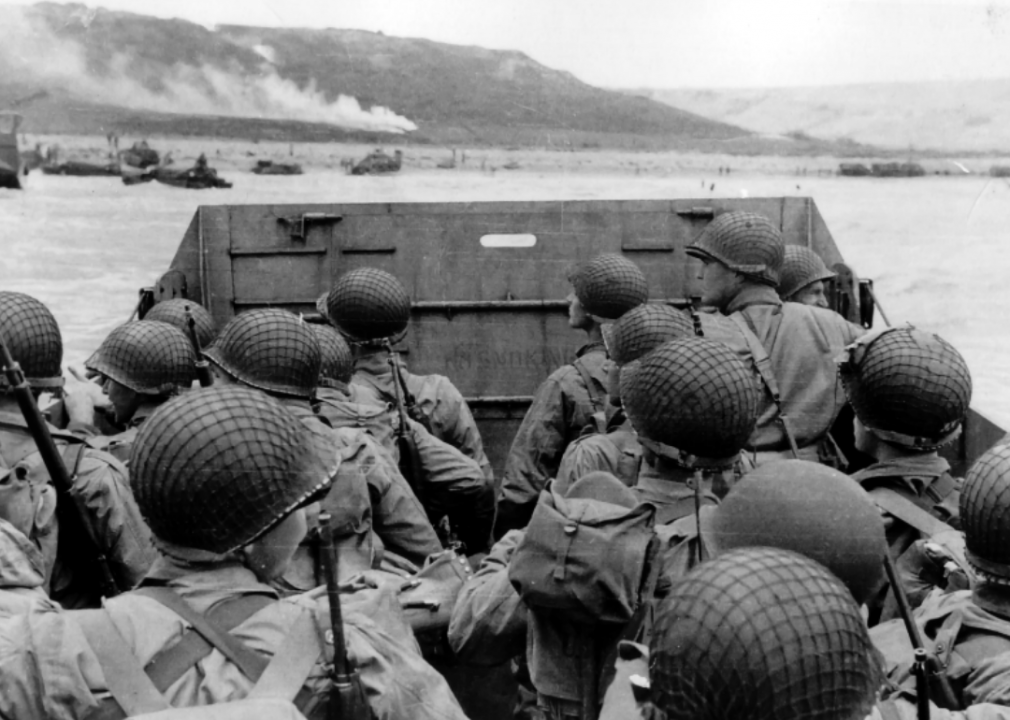
Public Domain
1944: D-Day
– Army strength: 7,994,750 people
– Navy strength: 2,981,365 people
– Marine Corps strength: 475,604 people
– Air Force strength: Not yet formed
– Total strength: 11,451,719 people
– Percent of population enlisted: 8.27%
In the early morning of June 6, 1944, Allied troops stormed beaches along the coast of Normandy, France. The invasion, referred to as D-Day, was the largest seaborne invasion in history—some 155,000 Allied troops comprised of U.S., British, and Canadian soldiers participated. The Normandy invasion has been called the beginning of the end of war for Europe.
[Pictured: Allied troops in the Battle of Normandy.]
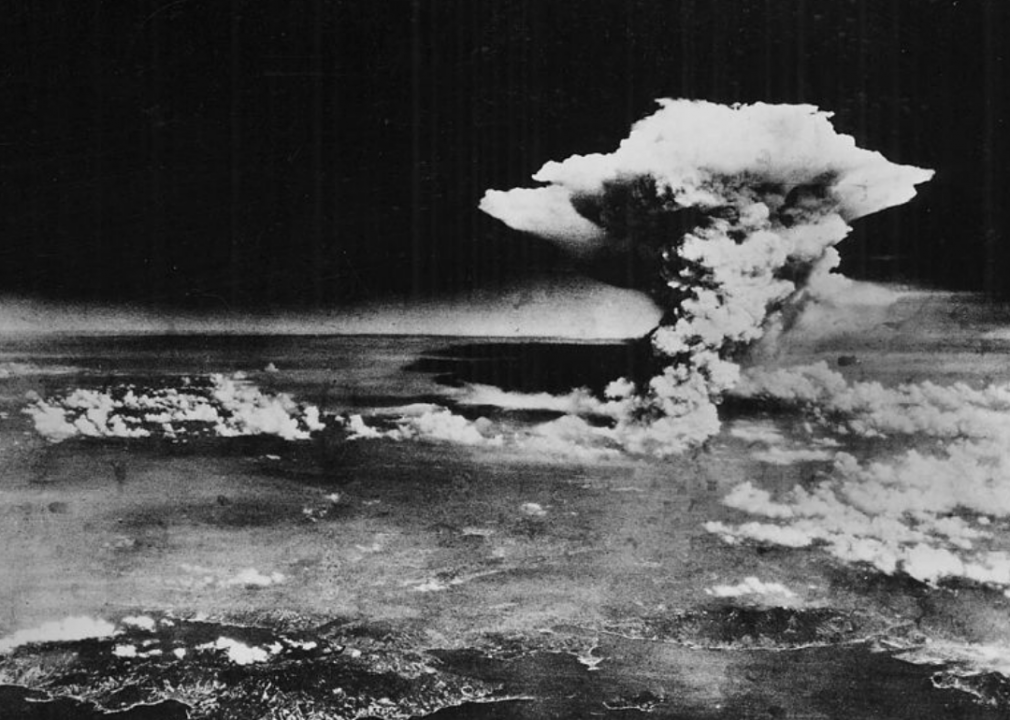
Public Domain
1945: Battle of Iwo Jima
– Army strength: 8,266,373 people
– Navy strength: 3,319,586 people
– Marine Corps strength: 469,925 people
– Air Force strength: Not yet formed
– Total strength: 12,055,884 people
– Percent of population enlisted: 8.62%
Among dozens of significant battles throughout World War II was the Battle of Iwo Jima, during which the U.S. Marine Corps and U.S. Navy took over the Japanese island of Iwo Jima. Shortly after Iwo Jima, U.S. troops battled Japanese forces on the island of Okinawa. More than 14,000 U.S. troops and 70,000 Japanese troops were killed. About a third of the civilian population on the island also died.
In May of 1945, Germany surrendered in France, which ended the European part of the war. Near the end of the summer that year, following the U.S. atomic bombings of Hiroshima and Nagasaki, Japan also surrendered, ending the war.
[Pictured: Atomic cloud over Hiroshima, Japan.]
Public Domain
1946: First session of the United Nations
– Army strength: 1,435,496 people
– Navy strength: 978,203 people
– Marine Corps strength: 155,679 people
– Air Force strength: 455,515 people
– Total strength: 3,024,893 people
– Percent of population enlisted: 2.14%
The U.S. military continued to demobilize in 1946, but some troops remained to fulfill outstanding obligations overseas. This decision resulted in protests from countries like China and France that did not subside until more than half of the American troops returned home.
The newly formed United Nations General Assembly first met in February 1946 at the Methodist Central Hall in London. The goal of the international organization was to encourage cooperation between countries and to avoid other conflicts like World Wars I and II. Its headquarters would be built in lower Manhattan in 1948, thanks to an $8.5 million donation from John D. Rockefeller.
[Pictured: World War II Bond Rally, Navy Yard, Mare Island, California.]
Public Domain
1947: Air Force, National Security Council founded, Cold War erupts
– Army strength: 685,458 people
– Navy strength: 497,773 people
– Marine Corps strength: 93,053 people
– Air Force strength: 305,827 people
– Total strength: 1,582,111 people
– Percent of population enlisted: 1.10%
As post-war demobilization continued, the conversation of how the military would organize itself led to the creation of the United States Air Force and National Security Council in 1947. The council spawned the Central Intelligence Agency and Department of Defense. Post-war tensions between the Soviet Union and the U.S. ultimately led to the Cold War. To contain the spread of communism, President Truman facilitated the Truman Doctrine on March 29, 1947, which transferred $400 million to Turkey and Greece to aid in the fight against communism.
[Pictured: U.S. President Harry S. Truman.]
You may also like: What the world’s most polluted beaches look like today
Library of Congress
1948: Marshall Plan signed to rebuild Europe
– Army strength: 554,030 people
– Navy strength: 417,535 people
– Marine Corps strength: 84,988 people
– Air Force strength: 387,730 people
– Total strength: 1,444,283 people
– Percent of population enlisted: 0.98%
The Army’s chief responsibilities under the National Security Act were to carry out land operations, prove anti-aircraft units, and supply occupation and security garrisons for use overseas. The Navy continued to control the Marine Corps, and the new Air Force commanded strategic air warfare and combat air backup for the Army.
President Truman signed the Marshall Plan on April 3, 1948, which allowed the U.S. to provide more than $12 million to help rebuild western European economies. Congress also passed a law declaring the Civil Air Patrol as the official civilian backup of the U.S. Air Force. Finally, on July 26, 1948, Truman passed Executive Order 9981, ending racial segregation in the U.S. Armed Forces.
[Pictured: Tuskegee Airmen in World War II.]
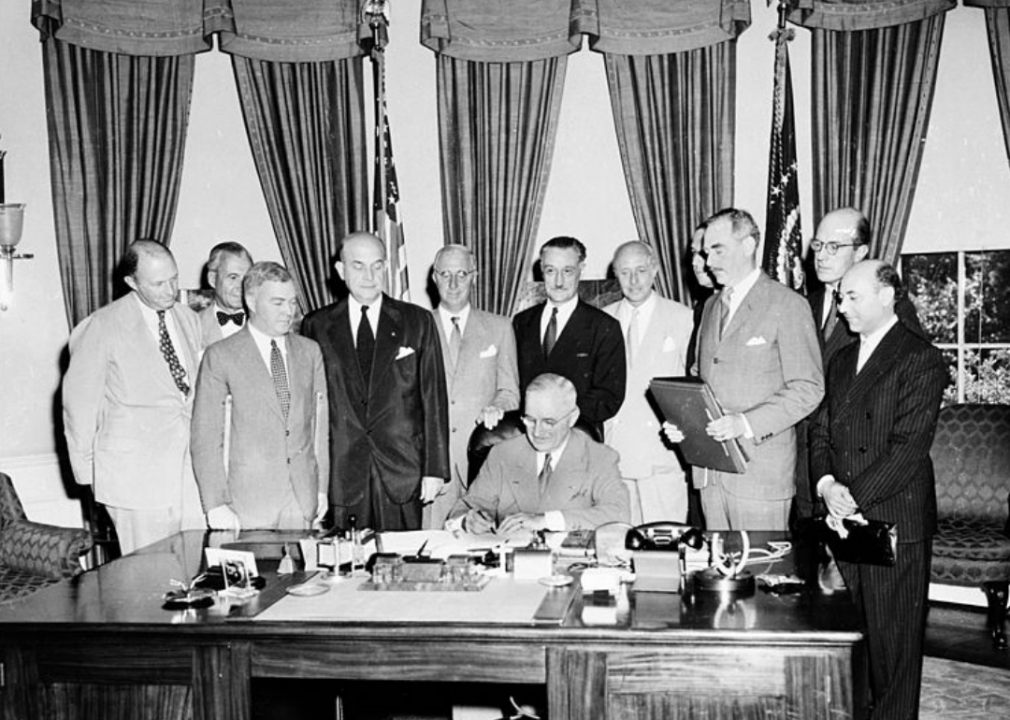
Abbie Rowe // Wikimedia Commons
1949: North Atlantic Treaty
– Army strength: 660,473 people
– Navy strength: 447,901 people
– Marine Corps strength: 85,965 people
– Air Force strength: 419,347 people
– Total strength: 1,613,686 people
– Percent of population enlisted: 1.08%
An amendment to the National Security Act in 1949 transformed the National Military Establishment into an executive entity, also known as the Department of Defense, comprising the Army, Navy, and Air Force. The North Atlantic Treaty was signed in April 1949, establishing the intergovernmental military alliance known as NATO.
The Cold War dispute, known as the Revolt of the Admirals, also took place in 1949; retired and active Navy admirals alike publicly disagreed with President Truman on the subject of strategic nuclear bombing as the primary mode of national defense. Additionally, a “Red Scare” broke out in the U.S. during which several public figures were named in an FBI report as Communist Party members, including Helen Keller and Dorothy Parker.
[Pictured: President Truman signing the document implementing the North Atlantic Treaty in the Oval office.]
Public Domain
1950: Korean War begins
– Army strength: 593,167 people
– Navy strength: 380,739 people
– Marine Corps strength: 74,279 people
– Air Force strength: 411,277 people
– Total strength: 1,459,462 people
– Percent of population enlisted: 0.96%
The Korean War began on June 25, 1950, when roughly 75,000 North Korean People’s Army soldiers crossed the boundary between North and South Korea. The war on the Korean peninsula would last for three years without ever being officially declared. Original estimates following the war’s conclusion put the death toll at 54,260, but that number was later revised to 36,914.
[Pictured: U.S. military forces enter into a three-year undeclared war on the Korean peninsula.]
Public Domain
1951: Second capture of Seoul, Treaty of San Francisco
– Army strength: 1,531,774 people
– Navy strength: 736,596 people
– Marine Corps strength: 192,620 people
– Air Force strength: 788,381 people
– Total strength: 3,249,371 people
– Percent of population enlisted: 2.10%
As the Korean War raged on, United Nations soldiers liberated Seoul for the second time in March 1951. Later that year, the U.N. and communist North Korean forces engaged in truce talks. A second Red Scare emerged when Ethel and Julius Rosenberg were convicted of conspiracy to commit espionage and received the death penalty. As part of the Treaty of San Francisco, 49 countries signed a peace treaty with Japan.
[Pictured: 159th Artillery Battalion, 24th Infantry Regiment.]
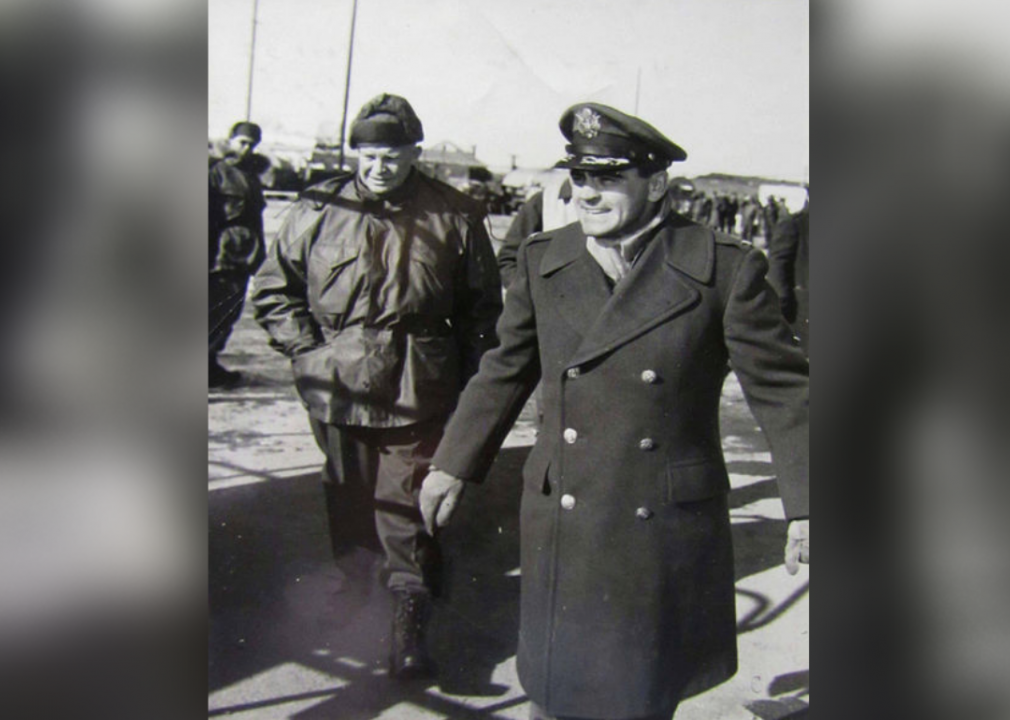
USAF // Wikimedia Commons
1952: First hydrogen bomb detonated
– Army strength: 1,596,419 people
– Navy strength: 824,265 people
– Marine Corps strength: 231,967 people
– Air Force strength: 983,261 people
– Total strength: 3,635,912 people
– Percent of population enlisted: 2.31%
The Treaty of San Francisco went into effect in 1952, officially ending the U.S. occupation of Japan. As nuclear testing continued, the U.S. military successfully detonated the first hydrogen bomb under Operation Ivy. That nuclear test still stands as the fourth largest for all U.S. tests of that kind. Meanwhile, President Eisenhower traveled to Korea to explore possible paths to peace.
[Pictured: Col. James K. Johnson, 4FIW Commander, with President Eisenhower during inspection tour at Kimpo AB, Korea, December 1952.]
You may also like: Most dangerous countries for journalists
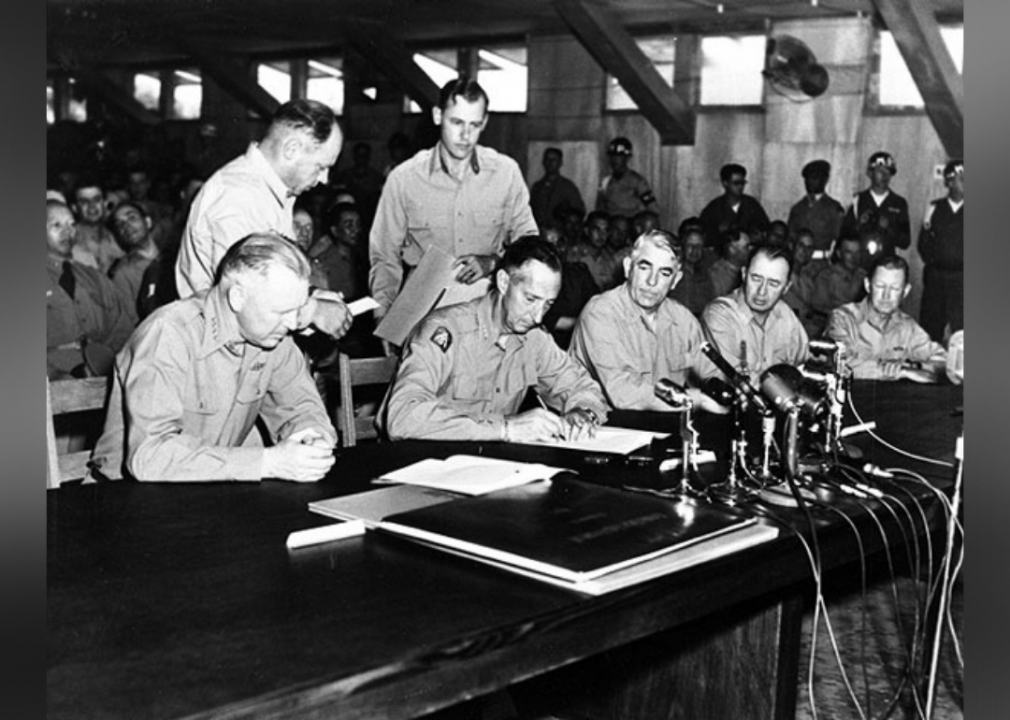
Public Domain
1953: Korean Armistice Agreement
– Army strength: 1,533,815 people
– Navy strength: 794,440 people
– Marine Corps strength: 249,219 people
– Air Force strength: 977,593 people
– Total strength: 3,555,067 people
– Percent of population enlisted: 2.22%
On July 27, 1953, the U.N., China, and North Korea collectively engaged in an armistice to end the Korean War. The agreement was signed by U.S. Army Lt. Gen. William K. Harrison Jr. from the U.N. Command Delegation and North Korean Gen. Nam II, representing North Korea and China.
[Pictured: Gen. Mark W. Clark signs the Korean armistice agreement on July 27, 1953.]
U.S. Air Force
1954: US Air Force Academy established
– Army strength: 1,404,598 people
– Navy strength: 725,720 people
– Marine Corps strength: 223,868 people
– Air Force strength: 947,918 people
– Total strength: 3,302,104 people
– Percent of population enlisted: 2.03%
Despite having authorized hundreds of millions of dollars of aid to Vietnam, President Eisenhower advised against assisting the French in their continued conflict with the Viet Minh. Eisenhower also approved the establishment of the U.S. Air Force Academy in Colorado. The U.S. Army was investigated by Sen. Joseph McCarthy for alleged communist infiltration.
[Pictured: Basic cadets from the first Air Force Academy class line up for physical training.]
Hulton Archive // Getty Images
1955: Navy helps evacuate Chinese Nationalist soldiers
– Army strength: 1,109,296 people
– Navy strength: 660,695 people
– Marine Corps strength: 205,170 people
– Air Force strength: 959,946 people
– Total strength: 2,935,107 people
– Percent of population enlisted: 1.77%
As the conflict in Vietnam escalated and Prime Minister Ngo Dinh Diem received threats from multiple domestic sources, President Eisenhower sent U.S. advisers to South Vietnam. Also that year, the U.S. Navy helped the Republic of China evacuate Chinese Nationalist soldiers and residents from the Tachen Islands when the People’s Liberation Army overtook the area. The Formosa Resolution outlined U.S. protection of the Republic of China from the People’s Republic of China.
[Pictured: Civilians crowd onto the pier of the Tachen Islands awaiting evacuation by the landing craft of the Seventh Fleet of the U.S. Navy.]
Zsolt Házy // Wikimedia Commons
1956: Hungarian Revolution
– Army strength: 1,025,778 people
– Navy strength: 669,925 people
– Marine Corps strength: 200,780 people
– Air Force strength: 909,958 people
– Total strength: 2,806,441 people
– Percent of population enlisted: 1.66%
The Hungarian Revolution of 1956 began with an organized group of student protesters marching through the streets of Budapest on Oct. 23. After reading an anti-communist proclamation demanding an independent Hungary, students stormed the radio building near the Hungarian Parliament, prompting police to open fire. The violence killed one student and marked the first bloodshed in a revolution that ultimately toppled the Soviet government.
The violent outbreak turned the protest into an all-out nationwide revolt against Soviet policies that were being forced on the public by the Hungarian People’s Republic. The uprising exploded with militias fighting the military and arming prisoners; the death toll included 2,500 Hungarians and 700 Soviet troops. Another 200,000 Hungarians fled as refugees.
Meanwhile, in the United States, officials and military leaders watched events unfold, too afraid of another world war (or disrupting recently improved diplomacy with Moscow) to step in and assist the protestors. The revolution was quashed on Nov. 4 when the Soviet Union sent soldiers into Hungary, causing an uproar among U.S. citizens and Hungarian demonstrators who were furious over the controversial lack of action by America. The U.S. had gone so far as to utilize the CIA-run Radio Free Europe (RFE) to broadcast encouragement to the rebels, implying the U.S. would be arriving with help and offering tactical insights for fighting the Soviets.
Ultimately, the Soviet Union would not regain governmental control over Hungary again.
[Pictured: Street corner in Budapest during the revolution.]
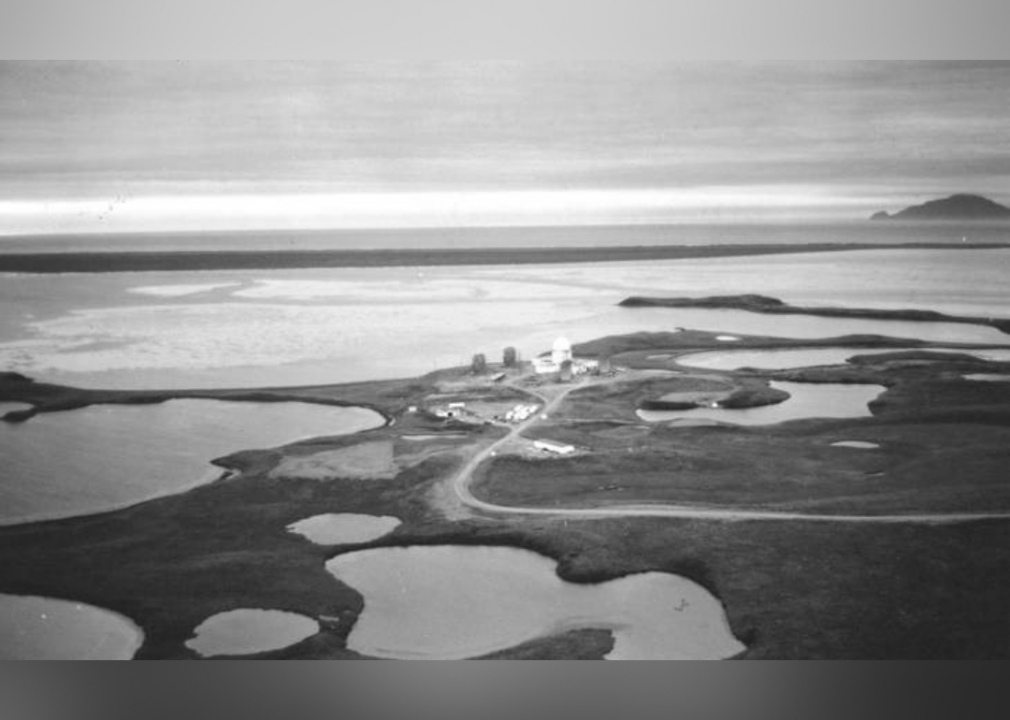
U.S. Fish and Wildlife Service
1957: Distant Early Warning Sign
– Army strength: 997,994 people
– Navy strength: 676,071 people
– Marine Corps strength: 200,861 people
– Air Force strength: 919,835 people
– Total strength: 2,794,761 people
– Percent of population enlisted: 1.63%
The U.S. partnered with Canada to begin construction on the Distant Early Warning Line in 1954. This radar network, which became functional in 1957, could detect early signs of missile or air attacks coming from the north.
[Pictured: Aerial view of U.S. Air Force DEW Line and White Alice station, Grant Point, Izembek.]
You may also like: A timeline of WWII, the most devastating conflict in history
Thomas J. O’Halloran // Wikimedia Commons
1958: Lebanon crisis
– Army strength: 898,925 people
– Navy strength: 639,942 people
– Marine Corps strength: 189,495 people
– Air Force strength: 871,156 people
– Total strength: 2,599,518 people
– Percent of population enlisted: 1.49%
The Lebanon Crisis broke out in 1958, caused by the threat of civil war between Maronite Christians and Muslims. U.S. Marines helped diffuse the situation as part of Operation Blue Bat, which aimed to strengthen the pro-Western government under President Camille Chamoun and protect it from Syrian and Egyptian threats.
[Pictured: July 1958, U.S. Marine sits in a foxhole in Lebanon.]
U.S. Army // Wikimedia Commons
1959: U.S. Special Forces train soldiers in Laos
– Army strength: 861,964 people
– Navy strength: 625,661 people
– Marine Corps strength: 175,571 people
– Air Force strength: 840,435 people
– Total strength: 2,503,631 people
– Percent of population enlisted: 1.41%
Cold War tensions continued to mount when a communist group in Laos overtook several provinces bordering North Vietnam and China. Neither side prevailed, despite U.S. military intervention, training of Laotian soldiers, and growing presence in the country since 1957 in support of Royal Lao Armed Forces (known commonly by its French acronym, FAR).
[Pictured: Pathet Lao, a communist organization in Laos, circa 1953.]
Public Domain // Wikimedia Commons
1960: US-Cuba standoff
– Army strength: 873,078 people
– Navy strength: 616,987 people
– Marine Corps strength: 170,621 people
– Air Force strength: 814,752 people
– Total strength: 2,475,438 people
– Percent of population enlisted: 1.37%
The U.S. acknowledged Fidel Castro as the leader of Cuba, but as Castro—who rose to power in 1959 following an armed uprising that unseated Cuban dictator Fulgencio Batista—increasingly nationalized U.S. companies and investments there, harsh penalties were enacted. In 1960, the U.S. suspended sugar imports from Cuba, dissolved ties to the Castro government, and froze Cuban assets in the U.S. In March of 1960, President Eisenhower directed the CIA to start training Cuban exiles to overthrow Castro and allocated $13.1 million to the cause.
[Pictured: March 1960, Fidel Castro, Che Guevara, and others marching through the streets in protest over the La Coubre explosion.]
Keystone // Getty Images
1961: Bay of Pigs
– Army strength: 858,622 people
– Navy strength: 626,223 people
– Marine Corps strength: 176,909 people
– Air Force strength: 821,151 people
– Total strength: 2,482,905 people
– Percent of population enlisted: 1.35%
Though the threat of nuclear war remained low, newly appointed President John F. Kennedy vowed to equip the U.S. military with the necessary means to retaliate if attacked. The Bay of Pigs invasion took place in Cuba on April 17, 1961, sending almost 1,500 trained Cuban exiles to storm the Bay of Pigs beaches. The initial air strike on Cuba’s airfield didn’t dismantle the entire air force, ultimately causing a failed attempt to overthrow the growing communist government.
[Pictured: Cuban Revolutionary Army celebrating their victory in the Bay of Pigs Invasion.]
AFP // Getty Images
1962: Cuban Missile Crisis
– Army strength: 1,066,404 people
– Navy strength: 664,212 people
– Marine Corps strength: 190,962 people
– Air Force strength: 884,025 people
– Total strength: 2,805,603 people
– Percent of population enlisted: 1.50%
When it was revealed that Cuba was in possession of Soviet ballistic missiles, the U.S. government set up a naval blockade in southern Florida. This 13-day incident became known as the Cuban Missile Crisis. President John F. Kennedy warned the Soviet Union that if they launched missiles from Cuba against any country, the U.S. would be forced to use nuclear weapons on Russia. The issue was resolved when Soviet leader Nikita Khrushchev called for the removal of Soviet missiles from Cuba.
[Pictured: U.S. President John F. Kennedy signs the order of naval blockade of Cuba on Oct. 24, 1962, during the Cuban Missile Crisis.]
You may also like: LGBTQ+ history before Stonewall
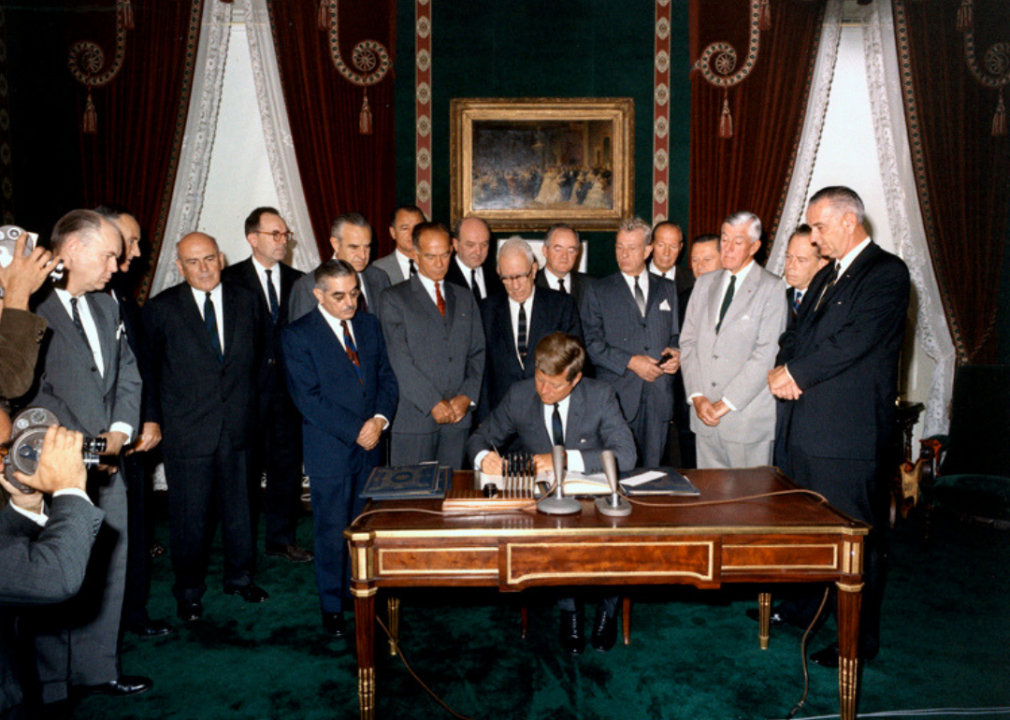
Public Domain // Wikimedia Commons
1963: Limited Nuclear Test Ban Treaty
– Army strength: 975,916 people
– Navy strength: 663,897 people
– Marine Corps strength: 189,683 people
– Air Force strength: 869,431 people
– Total strength: 2,698,927 people
– Percent of population enlisted: 1.43%
Representatives from the Soviet Union, Great Britain, and the United States signed the Limited Nuclear Test Ban Treaty on Oct. 7, 1963. The document effectively banned nuclear testing in space, underwater, and in the atmosphere, but allowed for testing in underground sites with responsible containment of radioactive material.
[Pictured: Oct. 7,1963, President Kennedy signs the Limited Nuclear Test Ban Treaty.]
No Author Provided // Wikimedia Commons
1964: Gulf of Tonkin
– Army strength: 973,238 people
– Navy strength: 665,969 people
– Marine Corps strength: 189,777 people
– Air Force strength: 856,798 people
– Total strength: 2,685,782 people
– Percent of population enlisted: 1.40%
As Saigon’s government continued to decline, President Lyndon B. Johnson sent military advisers to South Vietnam to assist. U.S. destroyers in the Gulf of Tonkin in August 1964 radioed that they were receiving fire from North Vietnamese forces, inspiring President Johnson to request increased military presence in Indochina. Congress drew up the Gulf of Tonkin Resolution, which gave the green light to stave off attacks and halt further violence by any means necessary. It ultimately managed to intensify the conflict in Vietnam.
[Pictured: President Johnson during a speech, 1964.]
manhhai // Flickr
1965: US officially enters Vietnam War
– Army strength: 969,066 people
– Navy strength: 669,985 people
– Marine Corps strength: 190,213 people
– Air Force strength: 824,662 people
– Total strength: 2,653,926 people
– Percent of population enlisted: 1.37%
As the 9th Marine Expeditionary Brigade arrived on the shores of China Beach on March 8, 1965, the U.S. officially entered the Vietnam War. Prior U.S. activity in Vietnam did not include active combat and was largely comprised of support and intelligence operations. Throughout the Vietnam Era, more than 2.7 million Americans—9.7% of their generation—served in Vietnam.
[Pictured: U.S. Army helicopters in Vietnam in 1965.]
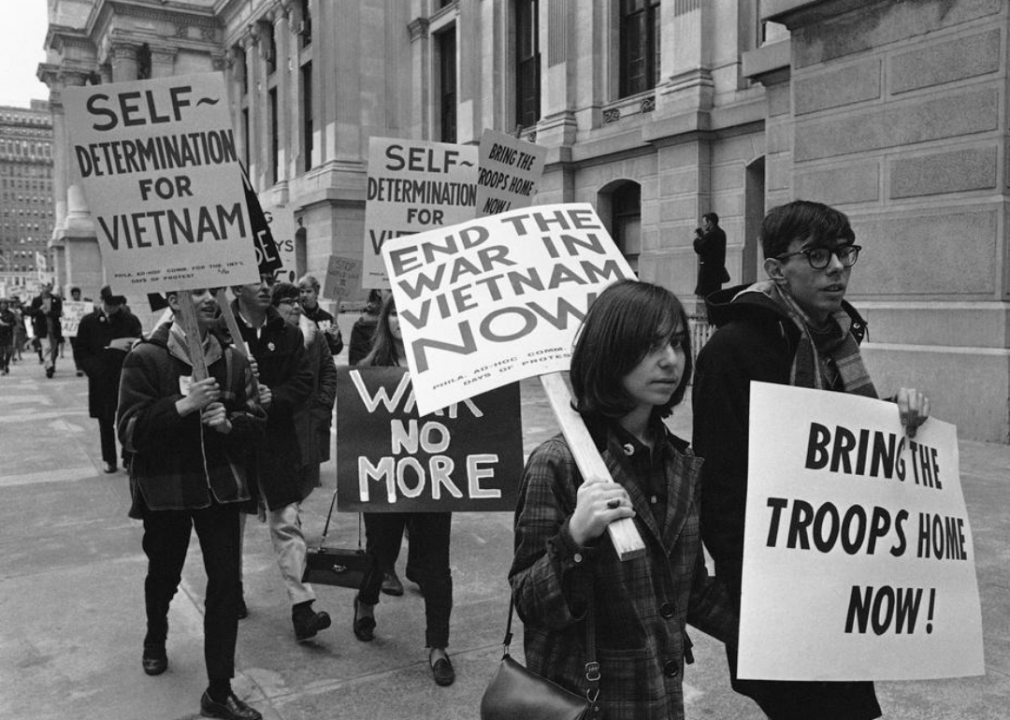
Tommy Truong79 // Flickr
1966: House Un-American Activities Committee
– Army strength: 1,199,784 people
– Navy strength: 743,322 people
– Marine Corps strength: 261,716 people
– Air Force strength: 887,353 people
– Total strength: 3,092,175 people
– Percent of population enlisted: 1.57%
The House Un-American Activities Committee (HUAC) was an investigative committee within the U.S. House of Representatives that was founded in 1938 to root out potential communist threats. In 1966, HUAC commenced hearings to investigate citizens allegedly aiding the Viet Cong, as well as anti-war activists. Hundreds of protesters showed up to the hearings on the first day, Aug. 16, 1966. The hearings and protests incited more anti-Vietnam War demonstrations around the country.
[Pictured: People protesting the Vietnam War in downtown Philadelphia, Pa., March 26, 1966.]
Defense Dept. // Wikimedia Commons
1967: Operation Swift
– Army strength: 1,442,498 people
– Navy strength: 750,224 people
– Marine Corps strength: 285,269 people
– Air Force strength: 897,494 people
– Total strength: 3,375,485 people
– Percent of population enlisted: 1.70%
U.S. Marines carried out Operation Swift beginning Sept. 4, 1967, in order to free two Marine companies that had been waylaid by the People’s Army of Vietnam. The rescue mission, involving three 5th Marine Regiment battalions up against bigger forces of NVA and Viet Cong, took place in the Quang Nam and Quang Tin provinces and resulted in two Medal of Honor recipients, the saving of the city of Da Nang, and an estimated enemy casualty count surpassing 4,000.
[Pictured: A U.S. Marine rests during Operation Swift.]
You may also like: The only 7 countries that are on track to meet the Paris Agreement—and how they’re doing it
U.S. Army photo
1968: Tet Offensive
– Army strength: 1,570,343 people
– Navy strength: 763,626 people
– Marine Corps strength: 307,252 people
– Air Force strength: 904,850 people
– Total strength: 3,546,071 people
– Percent of population enlisted: 1.77%
A coordinated 1968 attack during the Tet holiday by North Vietnamese and communist Viet Cong forces (called the Tet Offensive) resulted in extensive casualties. The attack came at a time when the United States was claiming the war was all but won, ensuring a further drop in support for the Vietnam War by the American public.
[Pictured: The 47th Infantry Regiment takes the offensive in May 1968 in south Saigon during the Tet Offensive.]
manhhai // Flickr
1969: Nixon Doctrine
– Army strength: 1,512,169 people
– Navy strength: 773,779 people
– Marine Corps strength: 309,771 people
– Air Force strength: 862,353 people
– Total strength: 3,458,072 people
– Percent of population enlisted: 1.71%
Newly appointed President Richard Nixon established the Nixon Doctrine (first called the Guam Doctrine) in 1969. This document established that the U.S. would rely on its Asian allies to take control of their own military defenses, while still receiving some support from their American allies.
[Pictured: July 30, 1969, Nixon visits South Vietnam.]
Public Domain // Wikimedia Commons
1970: US troops invade Cambodia
– Army strength: 1,322,548 people
– Navy strength: 691,126 people
– Marine Corps strength: 259,737 people
– Air Force strength: 791,349 people
– Total strength: 3,064,760 people
– Percent of population enlisted: 1.49%
As the Vietnam War began to wind down, U.S. troops invaded Cambodia to capture lingering Viet Cong forces and prevent North Vietnamese attacks on South Vietnam. On April 30, 1970, President Nixon gave a speech explaining his decision, which touched off a fresh set of anti-war protests that resulted in the notorious Kent State shootings, where four protestors were killed and nine others injured.
[Pictured: President Nixon delivers a speech to the American people announcing the Cambodian incursion.]
Tommy Truong79 // Flickr
1971: Conviction in My Lai Massacre
– Army strength: 1,123,810 people
– Navy strength: 621,565 people
– Marine Corps strength: 212,369 people
– Air Force strength: 755,300 people
– Total strength: 2,713,044 people
– Percent of population enlisted: 1.31%
Army Lt. William Calley was convicted of the 1968 deaths of 22 civilians during the My Lai Massacre, in which more than 500 people were killed. He was sentenced to life in prison, but President Richard Nixon reduced his sentence, and Calley ended up serving just three years under house arrest.
[Pictured: Army Lieut. William Calley.]
manhhai // Flickr
1972: Nguyen Hue Offensive
– Army strength: 810,960 people
– Navy strength: 586,923 people
– Marine Corps strength: 198,238 people
– Air Force strength: 725,838 people
– Total strength: 2,321,959 people
– Percent of population enlisted: 1.11%
The North Vietnamese launched the Easter Offensive (dubbed the Nguyen Hue Offensive) on March 30, 1972, kicking off a large-scale, three-part assault on South Vietnam. Hundreds of South Vietnamese civilians and soldiers were injured as a result, but the attack was ultimately stopped in October of that year by South Vietnamese soldiers and U.S. advisers.
[Pictured: Helicopters of the U.S. 229th Aviation Battalion, 3rd Brigade, First Air Cavalry Division, land in formation at Lai Khe during the Easter Offensive.]
You may also like: U.S. cities with the dirtiest air
U.S. Air Force
1973: Ceasefire signed
– Army strength: 800,973 people
– Navy strength: 563,683 people
– Marine Corps strength: 196,098 people
– Air Force strength: 691,182 people
– Total strength: 2,251,936 people
– Percent of population enlisted: 1.06%
President Nixon announced progress in peace negotiations with Vietnam, and called for the cessation of bombing in North Vietnam. A ceasefire was signed, but soon violated by the communists in March of 1973. All-out war had resumed by 1974.
[Pictured: Jan. 27, 1973, President Nixon signing the peace agreement.]
National Archives & Records Administration // WIkimedia Commons
1974: US evacuation of Cyprus
– Army strength: 783,330 people
– Navy strength: 545,903 people
– Marine Corps strength: 188,802 people
– Air Force strength: 643,970 people
– Total strength: 2,162,005 people
– Percent of population enlisted: 1.01%
As President Nixon faced the final throes of the Watergate scandal in 1974, Turkey invaded Cyprus. Following the invasion, the U.S. Navy swooped in to evacuate almost 400 American citizens to Beirut. The following month, Nixon resigned from his presidency.
[Pictured: President Nixon during the broadcast of his address to the nation.]
AFP // Getty Images
1975: End of Vietnam War
– Army strength: 784,333 people
– Navy strength: 535,085 people
– Marine Corps strength: 195,951 people
– Air Force strength: 612,751 people
– Total strength: 2,128,120 people
– Percent of population enlisted: 0.99%
The Vietnam War ended on April 30, 1975, with the fall of Saigon (now called Ho Chi Minh City). Communist North Vietnamese and Viet Cong troops overtook the city, causing American and South Vietnamese forces to evacuate and South Vietnam to surrender.
[Pictured: A Vietcong tank in front of the presidential palace of the U.S.-backed Southern Vietnamese regime in Saigon on the day that the city fell to communist troops, April 30, 1975.]
Department of Defense
1976: Women admitted to service academies
– Army strength: 779,417 people
– Navy strength: 524,678 people
– Marine Corps strength: 192,399 people
– Air Force strength: 585,416 people
– Total strength: 2,081,910 people
– Percent of population enlisted: 0.95%
This year in military history was significant for women in the military, marking the first time they were admitted to service academies. More than 300 women entered, including 119 women at West Point alone.
[Pictured: Women in the Air Force, or WAFs, and staff at the I.G. Brown Training and Education Center on McGhee Tyson Air National Guard Base in Louisville, Tenn.]
Public Domain
1977: President Carter’s new foreign policy for Latin America
– Army strength: 782,246 people
– Navy strength: 529,895 people
– Marine Corps strength: 191,707 people
– Air Force strength: 570,695 people
– Total strength: 2,074,543 people
– Percent of population enlisted: 0.94%
In response to President Jimmy Carter’s new foreign policy for Latin America (namely ending U.S. intervention there and protecting human rights), Nicaraguan military leader Anastasio Somoza rescinded a state of siege that had been enforced for the previous three years. This move paved the way for a $2.5 million military aid agreement between the United States and Nicaragua.
[Pictured: President Jimmy Carter at his desk in the Oval Office, 1977.]
You may also like: Cities before conflict: what it was like to visit Juarez, Tehran, and 13 other afflicted places
U.S. Army
1978: Women’s Army Corps dissolved
– Army strength: 771,624 people
– Navy strength: 529,557 people
– Marine Corps strength: 190,815 people
– Air Force strength: 569,712 people
– Total strength: 2,061,708 people
– Percent of population enlisted: 0.93%
The Women’s Army Corps was dissolved in 1978, and female soldiers were incorporated into previously all-male units. There were a few caveats, namely that women were still not allowed to serve in combat positions.
[Pictured: Women’s Army Corps members run an obstacle course during basic training.]
Public Domain
1979: Iranian Hostage Crisis
– Army strength: 758,852 people
– Navy strength: 523,335 people
– Marine Corps strength: 185,250 people
– Air Force strength: 559,455 people
– Total strength: 2,026,892 people
– Percent of population enlisted: 0.90%
On Nov. 4, 1979, Iranian students overtook the U.S. Embassy in Tehran and held more than 50 Americans hostage. The Iranian Hostage Crisis would go on for 444 days.
[Pictured:Two American hostages during the siege of the U.S. Embassy.]
Trikosko/Marion S. // Wikimedia Commons
1980: Failed attempt to end hostage crisis
– Army strength: 777,036 people
– Navy strength: 527,153 people
– Marine Corps strength: 188,469 people
– Air Force strength: 557,969 people
– Total strength: 2,050,627 people
– Percent of population enlisted: 0.90%
In April of 1980, several U.S. transport planes and helicopters tried unsuccessfully to rescue the Americans held hostage in Iran, prompting President Carter to discontinue diplomatic relations with the country. The botched attempt left one Iranian civilian and eight members of the U.S. military dead. In June of that year, Carter signed Proclamation 4771, which required men between 18 and 26 to “present themselves to register” for the military. Carter insisted this registration was not a draft.
[Pictured: President Jimmy Carter announces new sanctions against Iran in retaliation for taking U.S. hostages.]
Public Domain
1981: Gulf of Sidra Incident
– Army strength: 781,419 people
– Navy strength: 540,219 people
– Marine Corps strength: 190,620 people
– Air Force strength: 570,302 people
– Total strength: 2,082,560 people
– Percent of population enlisted: 0.91%
During the Gulf of Sidra Incident, Libya claimed the region as part of its territorial waters. In response, the U.S. engaged in operations around the gulf, citing the freedom of navigation principle; America argued that the area was legally considered an international body of water. Forces shot down two Libyan fighter jets.
[Pictured: In 1981, a U.S. Navy McDonnell F-4J Phantom II of Fighter Squadron VF-74 Be-Devilers escorting a Libyan Mikoyan-Gurevich MiG-23 over Gulf of Sidra.]
James Case // Wikimedia Commons
1982: Lebanese Civil War
– Army strength: 780,391 people
– Navy strength: 552,996 people
– Marine Corps strength: 192,380 people
– Air Force strength: 582,845 people
– Total strength: 2,108,612 people
– Percent of population enlisted: 0.91%
In 1982, 800 U.S. Marines were sent to Beirut during the Lebanese Civil War to take out members of the Palestinian Liberation Organization. The Vietnam Veterans Memorial was also dedicated in Washington D.C. that year with thousands of former and current soldiers attending the event.
[Pictured: In 1982, a Navy Amphibian arriving in Beirut.]
You may also like: Libertarian, gerrymandering, and 50 other political terms you should know
Cpl. Mauricio Campino // Department of Defense
1983: Peace agreement with Lebanon
– Army strength: 779,643 people
– Navy strength: 557,573 people
– Marine Corps strength: 194,089 people
– Air Force strength: 592,044 people
– Total strength: 2,123,349 people
– Percent of population enlisted: 0.91%
In May of 1983, the U.S. signed an agreement requiring Israel to withdraw troops from Lebanon. Negotiations between Israel and Lebanon occurred over the course of 35 different sessions that began the previous December. That October, a truck bomb killed 241 U.S. personnel, including 220 Marines, on a military compound in Beirut.
[Pictured: Beirut Memorial on Camp Johnson erected in honor of the 241 U.S. Marines, sailors, and soldiers who died in a terrorist attack on the Marine Corps barracks in Beirut, Lebanon.]
U.S. Navy // Wikimedia Commons
1984: Marines leave Beirut
– Army strength: 780,180 people
– Navy strength: 564,638 people
– Marine Corps strength: 196,214 people
– Air Force strength: 597,125 people
– Total strength: 2,138,157 people
– Percent of population enlisted: 0.91%
Having aided Lebanon during its civil war, the last U.S. Marines withdrew from Beirut in 1984. As the Iran-Iraq War entered its fourth year, U.S. aerial tanker planes assisted Iranian jets under attack by Saudi Arabian fighter pilots. President Ronald Reagan expressed concern that the incident would worsen the war in the Persian Gulf.
[Pictured: Marines at the port of Beirut on Sept. 29, 1982.]
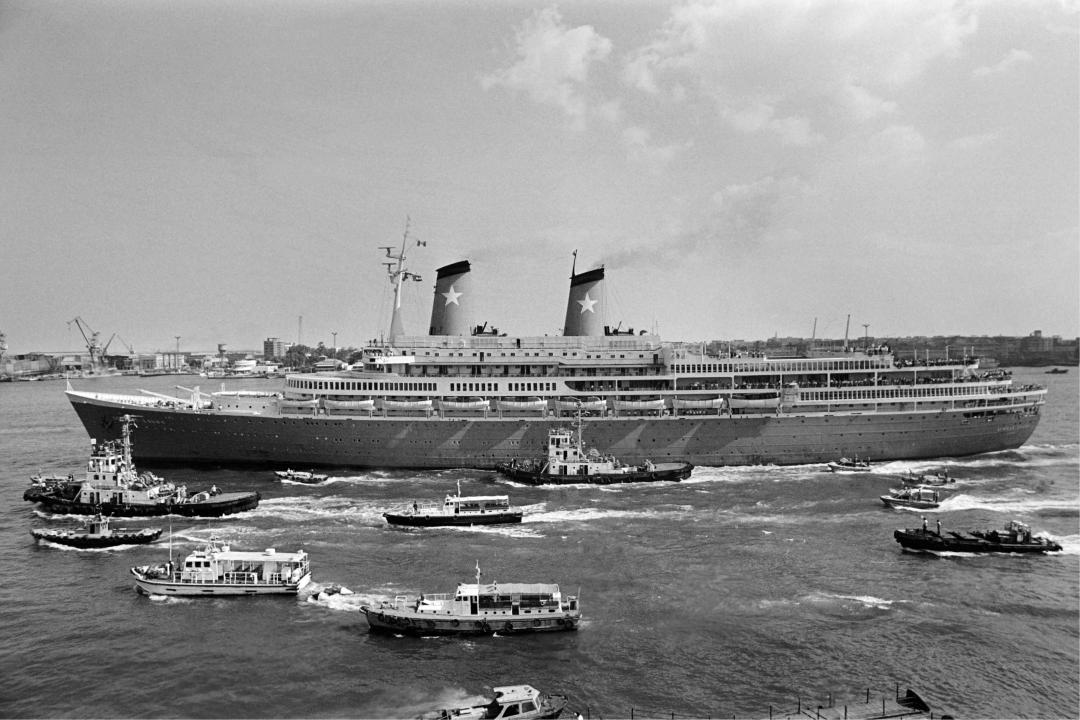
AFP/Staff // Getty Images
1985: Achille Lauro hijacked
– Army strength: 780,787 people
– Navy strength: 570,705 people
– Marine Corps strength: 198,025 people
– Air Force strength: 601,515 people
– Total strength: 2,151,032 people
– Percent of population enlisted: 0.90%
In October of 1985, four Palestinian terrorists hijacked the Italian cruise ship Achille Lauro, killing an American citizen. U.S. Navy pilots later intercepted the Egyptian airliner carrying the terrorists. As part of Cold War negotiations, President Reagan met with Soviet leader Mikhail Gorbachev in Geneva.
[Pictured: Achille Lauro leaves Port Said harbor on Oct. 10, 1985, after Egyptian authorities stopped it from sailing to the Israeli port of Ashdod.]
Public Domain // Wikimedia Commons
1986: West Berlin discotheque bombing
– Army strength: 780,980 people
– Navy strength: 581,119 people
– Marine Corps strength: 198,814 people
– Air Force strength: 608,199 people
– Total strength: 2,169,112 people
– Percent of population enlisted: 0.90%
A West Berlin discotheque was bombed in 1986. Three people were killed, and more than 200 were injured at the La Belle nightclub, which was a popular destination for U.S. soldiers. The attack was traced back to Libyan terrorists. Nine days later, President Reagan approved a series of Air Force, Marine Corps, and Navy airstrikes on Libya.
[Pictured: On April 13, 1986, a crew prepares for an air strike on Libya.]
White House Photographic Office // Wikimedia Commons
1987: Iran-Iraq ceasefire
– Army strength: 780,815 people
– Navy strength: 586,842 people
– Marine Corps strength: 199,525 people
– Air Force strength: 607,035 people
– Total strength: 2,174,217 people
– Percent of population enlisted: 0.90%
As violence in the Persian Gulf continued, the U.S. upped its military presence in the area and established a policy of confronting passing Kuwaiti oil tankers and accompanying them through the Gulf. A cease-fire between Iran and Iraq later inspired the U.S. to dial down its presence. In December of 1987, President Reagan and Soviet leader Mikhail Gorbachev signed the Intermediate-Range Nuclear Forces Treaty in Washington D.C., terminating the use of intermediate and short-range missiles.
[Pictured: On Dec. 8, 1987, President Reagan and General Secretary Gorbachev signed the INF Treaty in the White House.]
You may also like: How America has changed since the first Census in 1790
Public Domain // Naval History and Heritage Command photograph
1988: USS Samuel B. Roberts hits naval mine
– Army strength: 771,847 people
– Navy strength: 592,570 people
– Marine Corps strength: 197,350 people
– Air Force strength: 576,446 people
– Total strength: 2,138,213 people
– Percent of population enlisted: 0.87%
The USS Samuel B. Roberts hit a naval mine while on a military operation in April 1988. The U.S. Navy retaliated by carrying out Operation Praying Mantis, which entailed a series of hits on Iranian oil platforms and naval ships. In December of that year, the chairman of the Palestine Liberation Organization, Yasser Arafat, publicly relinquished violence, inspiring the U.S. to initiate a conversation with the Palestine Liberation Organization.
[Pictured: On April 14, 1988, Marines inspect an Iranian Sassan oil platform during Operation Praying Mantis.]

George Bush Presidential Library // Wikimedia Commons
1989: Bush-Gorbachev meeting
– Army strength: 769,741 people
– Navy strength: 592,652 people
– Marine Corps strength: 196,956 people
– Air Force strength: 570,880 people
– Total strength: 2,130,229 people
– Percent of population enlisted: 0.86%
In September of 1989, President George H.W. Bush called for military advisers and special forces teams to help shut down drug production and trafficking in Colombia, Bolivia, and Peru. Later that year, Bush met with Mikhail Gorbachev off the coast of Malta and announced the Cold War might be coming to a close.
[Pictured: On Dec. 2, 1989, President Bush meets with President Mikhail Gorbachev during the Malta Summit.]
George Bush Presidential Library // Wikimedia Commons
1990: Chemical Weapons Accord
– Army strength: 732,403 people
– Navy strength: 579,417 people
– Marine Corps strength: 196,652 people
– Air Force strength: 535,233 people
– Total strength: 2,043,705 people
– Percent of population enlisted: 0.82%
As talks continued, Bush met with Gorbachev to sign the Chemical Weapons Accord, which terminated the production of chemical weapons and called for each party’s arsenal to be dismantled. In August of 1990, Iraq invaded Kuwait, sparking the Gulf War. Bush called for a large deployment of U.S. armed forces to the Persian Gulf to help Saudi Arabia fend off Iraqi forces. In November, the U.N. Security Council passed Resolution 678, which gave the green light for military intervention in Iraq if its government didn’t pull forces out of Kuwait by Jan. 15 of the following year.
[Pictured: On June 1, 1990, President George H.W. Bush and President Mikhail Gorbachev sign the Chemical Weapons Accord.]
US Air Force // Wikimedia Commons
1991: Kuwait liberated
– Army strength: 710,821 people
– Navy strength: 570,262 people
– Marine Corps strength: 194,040 people
– Air Force strength: 510,432 people
– Total strength: 1,985,555 people
– Percent of population enlisted: 0.78%
On Jan. 17, 1991, President Bush instructed U.S. armed forces to execute air strikes against Iraqi forces in Iraq and Kuwait. Later that month, thousands of people convened in Washington D.C. to rally against the Gulf War. The deadliest attack on the U.S. in this war came in late February when an Iraqi scud missile blew up a U.S. barracks in Dhahran, killing 27 soldiers and injuring 98 more. Before the month was over, Saddam Hussein announced that Iraqi soldiers had pulled out of Kuwait. The following day, Bush proclaimed that Kuwait had been liberated. Mikhail Gorbachev stepped down in December of 1991, signaling an end to the Soviet Union and the Cold War.
[Pictured: During Operation Desert Storm in 1991, U.S. Air Force aircraft fly over Kuwait.]
U.S. Army photo
1992: Unified Task Force
– Army strength: 610,450 people
– Navy strength: 541,883 people
– Marine Corps strength: 184,529 people
– Air Force strength: 470,315 people
– Total strength: 1,807,177 people
– Percent of population enlisted: 0.70%
When Iraq failed to recognize the new border established by the U.N., the U.S. executed a series of military exercises in Kuwait in 1992 to demonstrate preparation for another Iraqi threat. Later that year, the U.N. passed Security Council Resolution 794, ultimately forming the Unified Task Force, whose main responsibility was aiding Somalia in the wake of a humanitarian crisis. That multinational force, led by the U.S., worked from Dec. 5, 1992 until May 4, 1993, in Somalia.
[Pictured: A soldier provides supplies to Somali villagers as part of U.S. humanitarian aid relief efforts in Somalia.]
You may also like: Worst-run cities in America
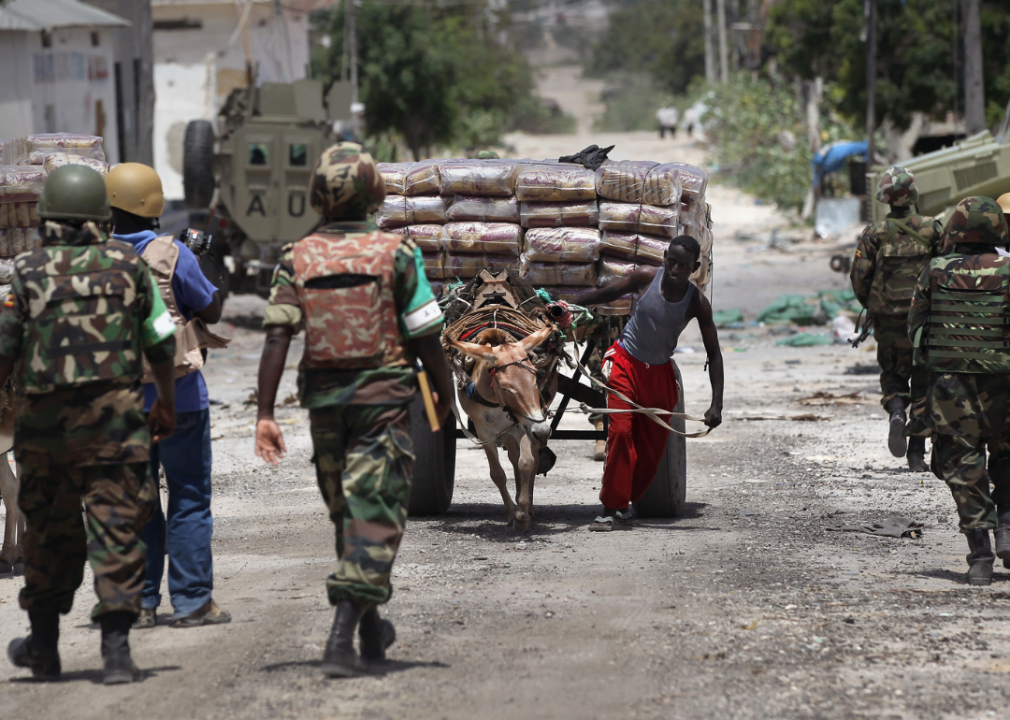
John Moore // Getty Images
1993: Battle of Mogadishu
– Army strength: 572,423 people
– Navy strength: 509,950 people
– Marine Corps strength: 178,379 people
– Air Force strength: 444,351 people
– Total strength: 1,705,103 people
– Percent of population enlisted: 0.66%
The U.S. Quick Reaction Forces responded in June 1993 to Somali faction attacks on U.N. forces, and more military operations ensued when U.N. attempts to deliver humanitarian aid were thwarted. That same month, President Bill Clinton called for a cruise missile attack on Iraqi headquarters in Baghdad. The order came in response to a 17-person plot to assassinate former President Bush during his trip to Kuwait in April 1993.
[Pictured: African Union Peacekeepers Patrol Mogadishu.]
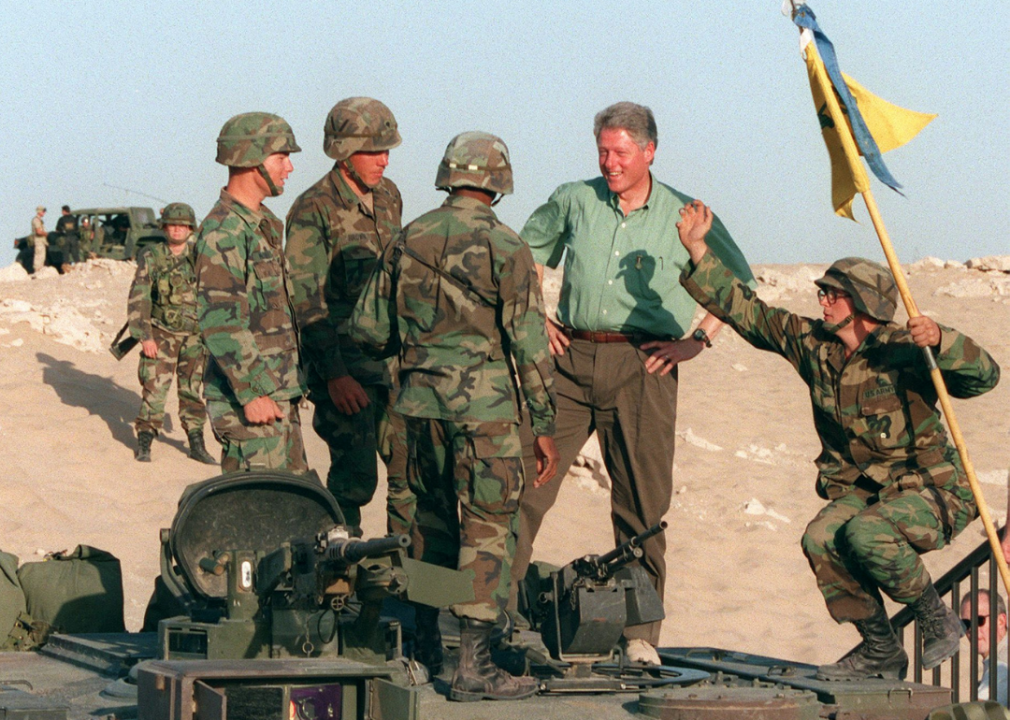
PAUL RICHARDS/AFP via Getty Images
1994: Iraq Disarmament Crisis
– Army strength: 541,343 people
– Navy strength: 468,662 people
– Marine Corps strength: 174,158 people
– Air Force strength: 426,327 people
– Total strength: 1,610,490 people
– Percent of population enlisted: 0.61%
In September of 1994, the Iraq disarmament crisis—which would be used as leverage for the 2003 invasion of Iraq—manifested as Iraq threatening to no longer cooperate with the United Nations Special Commission (UNSCOM) and sending troops near the Iraq-Kuwait border. In return, the U.S. sent soldiers to Kuwait. In October, Iraq pulled its troops out of Kuwait after the U.N. Security Council made further threats.
[Pictured: President Bill Clinton talks to U.S. troops in Kuwait 1994.]
PATRICK HERTZOG // Getty Images
1995: Capt. O’Grady shot down behind enemy lines
– Army strength: 508,559 people
– Navy strength: 434,617 people
– Marine Corps strength: 174,639 people
– Air Force strength: 400,409 people
– Total strength: 1,518,224 people
– Percent of population enlisted: 0.57%
As U.S. aircraft assisted in NATO’s enforcement of a no-fly zone above Bosnia-Herzegovina, Capt. Scott O’Grady was shot down in his aircraft and rescued about a week later. U.S. fighter planes engaged in NATO strikes against the Bosnian Serb Army, which was threatening areas the U.N. had established as safe zones.
[Pictured: Capt. Scott O’Grady (right) at a press conference after being shot down by Bosnian Serbs.]
ROBERT MILLER // Getty Images
1996: Comprehensive Nuclear Test Ban Treaty
– Army strength: 491,103 people
– Navy strength: 416,735 people
– Marine Corps strength: 174,883 people
– Air Force strength: 389,001 people
– Total strength: 1,471,722 people
– Percent of population enlisted: 0.55%
In the continuation of the Iraq disarmament crisis, Iraq upheld its decision to deny inspectors access to several sites and the U.S. was unable to gain military support to solve the issue. President Clinton gave the go-ahead for U.S. forces to remain in Bosnia as part of NATO’s Implementation Force, which sought to maintain peace in Bosnia. Clinton also signed the Comprehensive Nuclear Test Ban Treaty, which aimed to put a stop to all nuclear detonations for civilian or military means.
[Pictured: Delegates to the United Nations watch the electronic votes to see if the comprehensive global nuclear test-ban treaty would be carried over.]
Public Domain // Wikimedia Commons
1997: Sexual assault scandals plague military
– Army strength: 491,707 people
– Navy strength: 395,564 people
– Marine Corps strength: 173,906 people
– Air Force strength: 377,385 people
– Total strength: 1,438,562 people
– Percent of population enlisted: 0.53%
As some U.S. troops remained in Bosnia with the NATO Stabilization Force to maintain peace, a few thousand U.S. soldiers were deployed to nearby Hungary, Croatia, and Italy to provide backup. Back home, sexual assault scandals rocked the military: Army Sgt. Maj. Gene McKinney was accused of sexual misconduct, and 12 officers on a training base in Maryland were accused of sexually assaulting women trainees there.
[Pictured: Army Sergeant Maj. Gene McKinney.]
You may also like: 25 terms you should know to understand the gun control debate
ALEXANDER JOE // Getty Images
1998: US embassies bombed
– Army strength: 484,928 people
– Navy strength: 381,336 people
– Marine Corps strength: 173,055 people
– Air Force strength: 367,468 people
– Total strength: 1,406,787 people
– Percent of population enlisted: 0.51%
In August 1998, U.S. embassies in Dar es Salaam and Nairobi were bombed, killing 224 people and injuring more than 5,000. The bombings were linked to Osama bin Laden, and al-Qaeda claimed responsibility for them. In retaliation, the U.S. military dropped cruise missiles on Afghanistan, targeting al-Qaeda camps.
[Pictured: U.S. Secretary of State Madeleine Albright looks at the U.S. embassy in Dar Es Salaam after the bombing.]
Helene C. Stikkel // Wikimedia Commons
1999: Kosovo Force
– Army strength: 477,788 people
– Navy strength: 372,507 people
– Marine Corps strength: 172,635 people
– Air Force strength: 360,510 people
– Total strength: 1,383,440 people
– Percent of population enlisted: 0.50%
President Clinton called for 7,000 U.S. military troops to assist NATO’s “Kosovo Force” security team in Kosovo, where the Federal Republic of Yugoslavia—made up of the republics of Montenegro and Serbia—was in conflict with the Kosovo Liberation Army. Later that year, the U.S. Senate rejected the ratification of the Comprehensive Test Ban Treaty.
[Pictured: A soldier poses with Secretary of Defense William S. Cohen in Kosovo.]
Public Domain // Wikimedia Commons
2000: USS Cole bombing
– Army strength: 483,115 people
– Navy strength: 371,543 people
– Marine Corps strength: 172,955 people
– Air Force strength: 355,601 people
– Total strength: 1,383,214 people
– Percent of population enlisted: 0.49%
Two al-Qaeda bombers attacked the USS Cole in Yemen, killing 17 U.S. sailors and injuring 39. President Clinton approved 45 U.S. naval personnel to contribute medical and security assistance in response. Navy combat ships were situated near Yemeni waters to provide additional support.
[Pictured: USS Cole after the attack.]
Michael Foran // Wikimedia Commons
2001: September 11 attacks
– Army strength: 482,655 people
– Navy strength: 377,312 people
– Marine Corps strength: 176,720 people
– Air Force strength: 363,692 people
– Total strength: 1,400,379 people
– Percent of population enlisted: 0.49%
On the morning of Sept. 11, 2001, a group of 19 militants orchestrated a coordinated attack against The World Trade Center in New York City and The Pentagon in Arlington, Virginia, by highjacking four planes and flying them into buildings. Nearly 3,000 people died in the attacks, and more than 6,000 were injured; there were no survivors on any of the hijacked planes.
Two planes struck the towers of The World Trade Center, one crashed into the Pentagon, and another crashed in a Pennsylvania field. The attacks launched the worldwide “war on terror,” a global military campaign still in effect today. As part of this effort, President George W. Bush signed an executive order permitting military tribunals against any foreign residents thought to have ties to terrorist groups. U.S. forces invaded Afghanistan later that year with the intent of defeating al-Qaeda.
[Pictured: The Twin Towers on Sept. 11, 2001.]
Spc. David Marck Jr. // U.S. Army photo
2002: Operation Anaconda
– Army strength: 488,631 people
– Navy strength: 385,009 people
– Marine Corps strength: 177,868 people
– Air Force strength: 369,112 people
– Total strength: 1,420,620 people
– Percent of population enlisted: 0.49%
In January 2002, the U.N. Security Council called for an arms embargo and the freezing of Osama bin Laden’s assets. U.S. forces carried out Operation Anaconda in March in Afghanistan, killing anywhere between 100 and 1,000 members of the Taliban and al-Qaeda. There were 80 casualties among U.S. forces, including eight dead and 72 wounded. That October, Congress passed the Iraq Resolution, which allowed the U.S. to take military action against Iraq. In November, President Bush passed the Homeland Security Act, which officially established the Department of Homeland Security.
[Pictured: Soldiers during Operation Anaconda.]
You may also like: Counties with the highest rate of food insecure children
Capt. Patricia Lang // U.S. Air Force photo
2003: Shock and awe
– Army strength: 497,770 people
– Navy strength: 382,655 people
– Marine Corps strength: 181,166 people
– Air Force strength: 375,859 people
– Total strength: 1,437,450 people
– Percent of population enlisted: 0.50%
The U.S. and U.K. invaded Iraq in late March of 2003, starting with a “shock and awe” campaign designed to use dramatic force to cripple the enemy. That April, U.S. soldiers defeated the Iraqi Army and the Iraqi Republican Guard in the Battle of Baghdad. Later that year, President Bush confirmed that there was no evidence that Saddam Hussein possessed weapons of mass destruction or that he was involved in the Sept. 11 attacks.
[Pictured: A soldier assesses the damage after targeting one of Saddam Hussein’s presidential palaces as part of the “shock and awe” campaign.]
Sgt. Jeremiah Johnson, U.S. Army // Wikimedia Commons
2004: No weapons of mass destruction
– Army strength: 498,428 people
– Navy strength: 372,525 people
– Marine Corps strength: 177,021 people
– Air Force strength: 376,813 people
– Total strength: 1,424,787 people
– Percent of population enlisted: 0.49%
In February of 2004, the CIA announced there was no evidence of weapons of mass destruction in Iraq prior to the U.S. invasion. In October, video footage of Osama bin Laden aired on Al Jazeera, where he threatened to terrorize the U.S. and mocked President Bush over the World Trade Center attacks. In December, as U.S. forces continued to occupy Iraq, revolutionaries attacked a U.S. outpost in Mosul, resulting in 22 fatalities. Two days later, U.S. soldiers killed the revolutionaries in Fallujah.
[Pictured: Soldiers standing guard in front of a building in Mosul, Iraq, in 2004.]
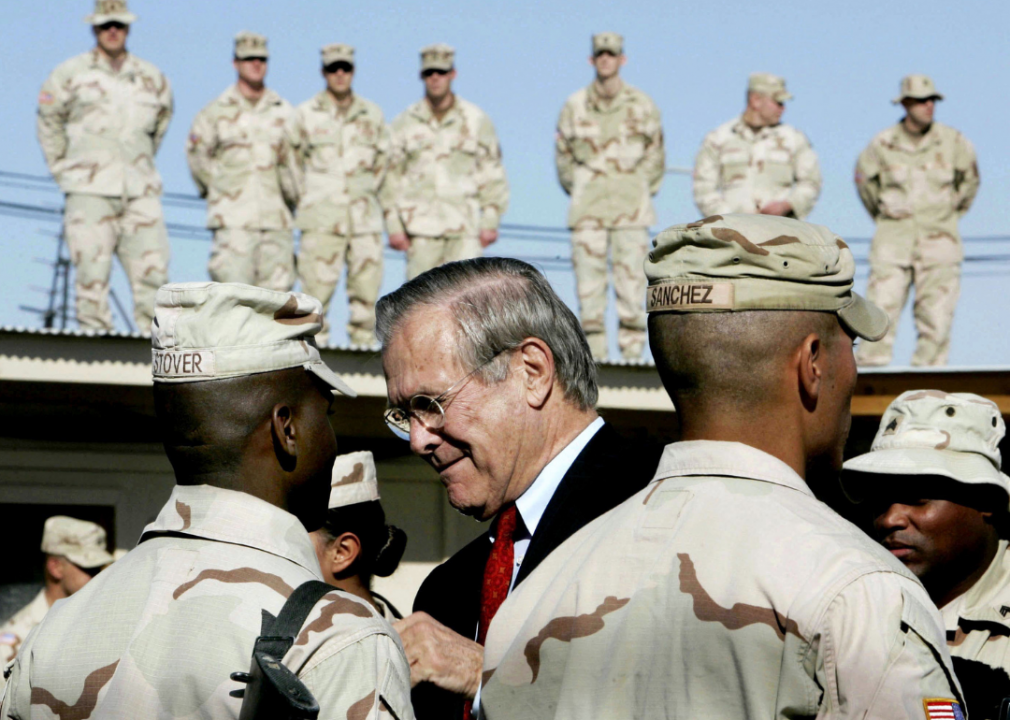
Jim Young-Pool // Getty Images
2005: Rumsfeld announces troop reduction
– Army strength: 490,632 people
– Navy strength: 362,239 people
– Marine Corps strength: 179,840 people
– Air Force strength: 353,696 people
– Total strength: 1,386,407 people
– Percent of population enlisted: 0.47%
Early in 2005, North Korea claimed possession of nuclear weapons as a precautionary measure against “hostile” U.S. forces. Worldwide, citizens continued protesting the Iraq War—including more than 150,000 people who took to the streets of Washington D.C. In December, Secretary of Defense Donald Rumsfeld announced the reduction of U.S. troops in Iraq.
[Pictured: U.S. Secretary of Defense Donald Rumsfeld (center) talks to soldiers after announcing a reduction in size of the U.S. forces in Iraq.]
James Bowman // DoD photo
2006: Saddam hanged
– Army strength: 507,131 people
– Navy strength: 349,534 people
– Marine Corps strength: 180,252 people
– Air Force strength: 348,953 people
– Total strength: 1,385,870 people
– Percent of population enlisted: 0.46%
Thirteen years after its initial congressional approval, a United States Air Force Memorial depicting three spires “Soaring to Glory” was dedicated on Oct. 14, 2006. A month later, Secretary of Defense Donald Rumsfeld announced his resignation. And on Dec. 30, Saddam Hussein was hanged in Baghdad following his conviction for crimes against humanity. Grainy scenes from his execution were captured and widely shared online, provoking concern among U.S. and British officials who feared the Iraqi government was encouraging sectarian killings.
[Pictured: Secretary of Defense Donald H. Rumsfeld announces his resignation while President George W. Bush stands in the background.]
The U.S. Army // Flickr
2007: 21,500 more soldiers to Iraq
– Army strength: 522,190 people
– Navy strength: 336,659 people
– Marine Corps strength: 186,425 people
– Air Force strength: 333,495 people
– Total strength: 1,378,769 people
– Percent of population enlisted: 0.46%
Early in 2007, U.S. Air Force units carried out airstrikes in Somalia in the wake of suspected terrorist activity. President Bush took measures to deploy 21,500 additional U.S. soldiers to Iraq. In a battle involving Iraqi revolutionaries and U.S.-supported Iraqi troops, 300 alleged insurgents were killed in Najaf, Iraq. In December, a National Intelligence Estimate (NIE) conveyed confidence that Iran’s nuclear weapons facilities had been dormant since 2003.
[Pictured: Soldiers in Baghdad, Iraq, on April 5, 2007.]
You may also like: ‘I have a dream’ and the rest of the greatest speeches of the 20th century
U.S. Navy Petty Officer 1st Class Chad J. McNeeley // Defense Dept. photo
2008: US Navy takes out US spy satellite
– Army strength: 544,150 people
– Navy strength: 331,132 people
– Marine Corps strength: 198,415 people
– Air Force strength: 327,382 people
– Total strength: 1,401,079 people
– Percent of population enlisted: 0.46%
The U.S Navy wiped out an American spy satellite in February of 2008, causing countries around the world to accuse the U.S. of testing its ability to compromise satellites belonging to other countries. The wars in Iraq and Afghanistan continued to proliferate.
[Pictured: Following the successful destruction of a spy satellite, Navy Capt. Randall M. Hendrickson speaks to reporters.]
SAUL LOEB // Getty Images
2009: Orders to close Guantanamo Bay
– Army strength: 553,579 people
– Navy strength: 328,751 people
– Marine Corps strength: 203,075 people
– Air Force strength: 333,408 people
– Total strength: 1,418,813 people
– Percent of population enlisted: 0.46%
Newly appointed President Barack Obama signed orders to shut down the Guantanamo Bay military prison and put a stop to the use of torture in interrogations. Yet, Guantanamo remains open and, according to a study by The New York Times, costs taxpayers $540 million per year, breaking down to $13 million per prisoner, many of whom are being held indefinitely without trial.
[Pictured: President Barack Obama signs an executive order closing Guantanamo Bay.]
Chuck Kennedy // Official White House Photo
2010: Don’t Ask Don’t Tell Repeal Act
– Army strength: 566,045 people
– Navy strength: 327,697 people
– Marine Corps strength: 202,612 people
– Air Force strength: 334,198 people
– Total strength: 1,430,552 people
– Percent of population enlisted: 0.46%
In his first State of the Union address, President Obama discussed abolishing the military’s “Don’t Ask, Don’t Tell” policy. Instituted in 1994, the policy banned military officers from asking subordinates about their sexual orientation but also banned gay or bisexual soldiers from discussing their sexuality, effectively barring openly gay or bisexual people from serving in the military. In December of 2010, Obama signed the repeal of “Don’t Ask, Don’t Tell” into law. The U.S. Navy also revoked its ban on women serving on submarines.
[Pictured: President Barack Obama signs the Don’t Ask, Don’t Tell Repeal Act of 2010.]
Pete Souza // Wikimedia Commons
2011: Osama bin Laden killed
– Army strength: 565,463 people
– Navy strength: 324,666 people
– Marine Corps strength: 201,026 people
– Air Force strength: 333,162 people
– Total strength: 1,424,317 people
– Percent of population enlisted: 0.46%
In May of 2011, President Obama declared that U.S. military forces had killed al-Qaeda leader Osama bin Laden in Pakistan.
Meanwhile, in June, the modified U.S. military strategy was adjusted to reflect that a cyberattack would be a legitimate reason to declare war. Shortly after, an FBI investigation revealed that Chinese hackers had tapped into American and Chinese Gmail accounts.
[Pictured: President Barack Obama shakes hands with Admiral Mike Mullen in the White House after the mission against Osama bin Laden.]
Erin A. Kirk-Cuomo // Wikimedia Commons
2012: Benghazi attack
– Army strength: 550,063 people
– Navy strength: 318,818 people
– Marine Corps strength: 198,820 people
– Air Force strength: 332,834 people
– Total strength: 1,400,535 people
– Percent of population enlisted: 0.45%
NATO leaders at the 2012 Chicago summit discussed nuclear weapons, the Middle East, Russia, and Afghanistan—including an exit strategy. On Sept. 11, members of the Islamic militia group Ansar al-Sharia launched an attack on a U.S. diplomatic building in Benghazi, killing U.S. Ambassador J. Christopher Stevens and Foreign Service officer Sean Smith. This prompted the U.S. to increase security measures on an international level.
[Pictured: Sept. 14, 2012, Secretary of State Hillary Rodham Clinton speaks about the Benghazi attack.]
You may also like: How well do you remember 1969?
Erin A. Kirk-Cuomo // DOD photo
2013: Women can serve in combat
– Army strength: 532,043 people
– Navy strength: 324,308 people
– Marine Corps strength: 195,848 people
– Air Force strength: 330,485 people
– Total strength: 1,382,684 people
– Percent of population enlisted: 0.44%
In January of 2013, Secretary of Defense Leon Panetta revoked the ban on women serving in combat missions. Shortly after, a crisis in North Korea began to take form: Threats of nuclear warfare were issued against South Korea and the U.S. And in August, the Syrian government was accused of killing more than 1,000 people with chemical weapons.
[Pictured: Defense Secretary Leon E. Panetta signs a document ending the ban on women participating in combat missions.]
Marine Corps Sgt. Aaron Hostutler // DOD photo
2014: Slashes to military budget
– Army strength: 508,210 people
– Navy strength: 326,054 people
– Marine Corps strength: 187,891 people
– Air Force strength: 316,332 people
– Total strength: 1,338,487 people
– Percent of population enlisted: 0.42%
The Obama administration suggested decreasing the military budget to $522 billion, and reducing the army to a size not seen since 1940. In June, Obama pledged to deploy up to 300 military advisers to Iraq to assist the Shiites under threat by the Sunni militant group that would come to be known as the Islamic State (IS). In November, 1,500 troops were sent to Iraq to further combat this terrorist organization.
[Pictured: On Feb. 24, 2014, Defense Secretary Chuck Hagel shares recommendations for the 2015 fiscal year to reporters.]
Obama White House Photo
2015: Iran sanctions lifted
– Army strength: 491,365 people
– Navy strength: 327,801 people
– Marine Corps strength: 183,417 people
– Air Force strength: 311,357 people
– Total strength: 1,313,940 people
– Percent of population enlisted: 0.41%
In July of 2015, the U.S. and five other world powers agreed to remove most of the United Nations Security Council’s sanctions on Iran in exchange for imposing limits on Iran’s nuclear programs for at least 10 years.
Later that year, Defense Secretary Ashton Carter declared that women could serve in all combat roles in the U.S. military as of Jan. 1 of the following year.
[Pictured: President Barack Obama explains the details of the nuclear deal with Iran.]
U.S. Department of State // Flickr
2016: Nuclear Security Summit
– Army strength: 475,400 people
– Navy strength: 324,524 people
– Marine Corps strength: 183,501 people
– Air Force strength: 317,883 people
– Total strength: 1,301,308 people
– Percent of population enlisted: 0.40%
In January 2016, the U.S. government made good on its promise to remove economic sanctions from Iran, in line with the agreement established the previous year. Sanctions related to human rights violations, the use of missiles, and the support of terrorism stayed in effect. The 2016 Nuclear Security Summit took place in Washington D.C., during which a revised nuclear security agreement was drawn up and encouraging statistics on nuclear de-escalation were shared. For instance, since the previous summit in 2014, 10 countries had disposed of roughly 450 kilograms of highly enriched uranium.
Meanwhile, in June 2016, the U.S. military removed its restriction on transgender people serving in the military.
[Pictured: U.S. Secretary of State John Kerry and European Union High Representative for Foreign Affairs Federica Mogherini during the Nuclear Security Summit.]
Ted Eytan // Wikimedia Commons
2017: Refugees turned away; transgender ban reinstated
– Army strength: 476,245 people
– Navy strength: 323,933 people
– Marine Corps strength: 184,401 people
– Air Force strength: 322,787 people
– Total strength: 1,307,366 people
– Percent of population enlisted: 0.40%
In January of 2017, President Donald Trump issued an executive order denying refugees of the Syrian Civil War, as well as citizens of Iran, Iraq, and several other Middle Eastern countries, entry into the U.S.
President Trump also vowed to reinstate a transgender ban in the military that Obama had reversed. The regulation was enacted in March 2017. In October, Trump outwardly criticized Iran and suggested an end to the previous Iran Nuclear Deal unless serious revisions were made.
[Pictured: People protest to stop the Transgender Military Ban.]
You may also like: 50 endangered species that only live in the Amazon rainforest
NASA/Bill Ingalls // Wikimedia Commons
2018: Chemical weapons in Syria, creation of US Space Force
– Army strength: 416,667 people
– Navy strength: 285,141 people
– Marine Corps strength: 153,107 people
– Air Force strength: 266,167 people
– Total strength: 1,121,082 people
– Percent of population enlisted: 0.34%
The U.S., along with the U.K. and France, launched more than 100 missiles at chemical weapons facilities in Syria early on the morning of April 14, 2018. According to the Pentagon, the targets were a chemical weapons storage center, a scientific research center, and a command post and storage site. The Western powers claimed the strikes were in retaliation for the Douma chemical attack on April 7, which killed dozens of civilians.
Moreover, on June 18, during a National Space Council meeting, President Trump announced that he would direct the Department of Defense and the Pentagon to create a sixth branch of the U.S. military—the Space Force—to assert “American dominance in space.”
[Pictured: President Donald Trump holds up a signed Space Policy Directive.]
VYACHESLAV OSELEDKO // Getty Images
2019: Iran reveals new missile defense system
– Army strength: 416,876 people
– Navy strength: 290,254 people
– Marine Corps strength: 154,909 people
– Air Force strength: 270,328 people
– Total strength: 1,132,367 people
– Percent of population enlisted: 0.34%
In 2019, calling American talks “useless,” Iran unveiled a new, long-range missile system that could recognize targets more than 190 miles away. This announcement followed Iran’s takedown of a U.S. military surveillance drone earlier that summer.
[Pictured: Iran President Hassan Rouhani, who said in August that talks with America were “useless.”]
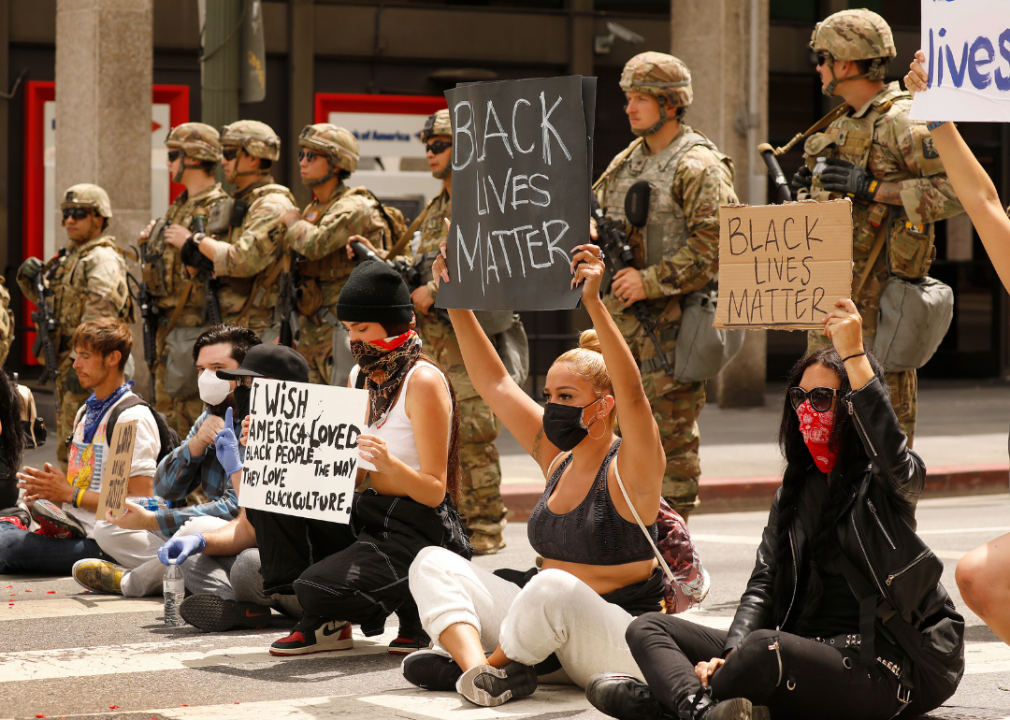
Al Seib // Getty Images
2020: Trump deploys military against protestors
– Army strength: 482,343 people
– Navy strength: 346,570 people
– Marine Corps strength: 181,031 people
– Air Force strength: 334,371 people
– Total strength: 1,344,315 people
– Percent of population enlisted: 0.41%
As protests over the murder of George Floyd and police brutality swept American cities, President Trump responded with military force. On June 2, he deployed National Guard troops against a group of peaceful protestors, who were hit with rubber bullets and chemical sprays. Though his actions were widely criticized by veterans and active members of the military, federal troops continued to clash with protestors over the summer; the Air Force investigated the alleged use of surveillance planes against protestors, and a nonprofit in Portland later sued the Trump administration over its use of military force.
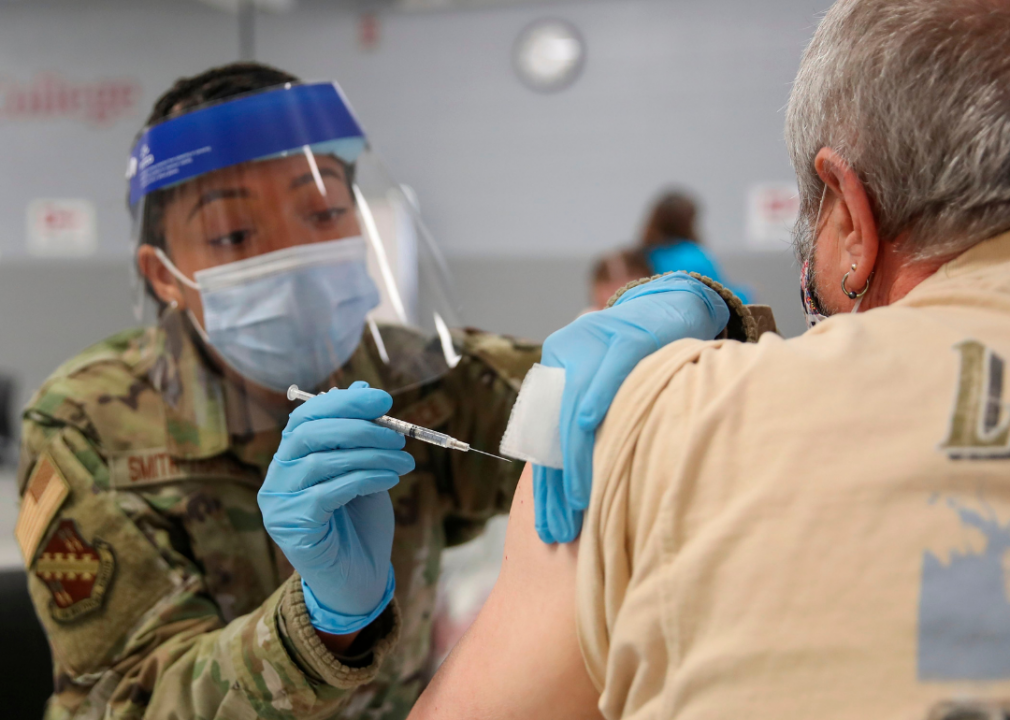
KAMIL KRZACZYNSKI // Getty Images
2021: US troops fight COVID
– Army strength: 482,290 people
– Navy strength: 347,162 people
– Marine Corps strength: 181,559 people
– Air Force strength: 335,140 people
– Total strength: 1,387,621 people
– Percent of population enlisted: 0.42%
In February of 2021, President Joe Biden announced the deployment of 1,100 active-duty troops to assist in administering coronavirus vaccines nationwide. Across the world, U.S. Special Forces—also known as the Green Berets—arrived in Mozambique to train local marines in their fight against an IS-linked insurgency.
The U.S. army also completed its withdrawal from Afghanistan in 2021, marking the end of the War in Afghanistan after 20 years. The process started with the Trump administration’s US-Taliban deal in Feb. 2020 and a plan to pull all troops out of the country by April 2021. Trump’s successor, President Joe Biden, extended the deadline to September that year.
You may also like: Highest-paid employees in the White House

IntelCenter/AFP via Getty Images
2022: Top al-Qaeda leader killed
– Army strength: 464,921 people
– Navy strength: 341,553 people
– Marine Corps strength: 174,650 people
– Air Force strength: 332,340 people
– Total strength: 1,354,259 people
– Percent of population enlisted: 0.41%
In late July 2022, more than a decade after U.S. troops killed Osama bin Laden, another top al-Qaeda leader, Ayman al-Zawahiri, was killed in a drone strike in Kabul. The 71-year-old symbol of the terrorist group was sheltering in the capital city to reunite with his family when he was killed in a “precise, tailored airstrike.” His family was not harmed.
Ayman al-Zawahiri was one of the masterminds behind the Sept. 11, 2001 attacks. A senior administration official told CNN that the “counterterrorism operation … was successful, and there were no civilian casualties.”
